dimanche, 30 octobre 2022
Alexandre Douguine: La nécessité d'une langue souveraine

La nécessité d'une langue souveraine
par Aleksandr Douguine
Source: https://www.ideeazione.com/il-bisogno-di-una-lingua-sovrana/
Quand on parle de narration, c'est une catégorie philosophique qu'il faut connaître, parce que la notion de narration est un élément de la philosophie postmoderne qui se base sur la linguistique structurale, sur le structuralisme, sur Ferdinand de Saussure, le linguiste structural qui a séparé le discours et la langue. Cet aspect est très important.
Qu'est-ce que la langue ? Le langage est fait de règles. Nous ne parlons pas, nous utilisons le langage, mais le langage ne parle jamais de lui-même, il est dans les dictionnaires, dans la syntaxe - c'est ce qu'on appelle le niveau paradigmatique, et un récit, ou un discours, est ce qui est construit à partir du langage, de son vocabulaire, de sa syntaxe, de ses lois.
Les récits sont infinis. La langue est une.
Lorsque nous parlons de souveraineté spirituelle, culturelle et civilisationnelle - ce dont parle le président Vladimir Poutine dans ses discours - elle devient chaque jour plus pertinente. Nous ne parlons pas de récits souverains, mais d'une langue souveraine dans laquelle des milliards de récits souverains peuvent être exprimés.
Si la langue est souveraine, alors le discours sera souverain. En utilisant la langue libérale et mondialiste de l'Europe occidentale, on peut certes formuler un discours souverain russe dans cette langue, ou deux, ou trois, ou dix. Mais c'est pour résoudre des tâches immédiates, pour la substitution des importations dans le récit à très court terme. Et ce qui compte, c'est de savoir si et pour combien de temps nous allons dire adieu à l'Occident collectif. Ou voulons-nous revenir à ce langage global, en laissant l'écran de fumée des récits souverainistes se lever un peu.
Je pense que c'est ce que l'élite russe veut faire: parler pendant un certain temps, puis faire marche arrière et dire: "OK, nous acceptons votre langue et votre mondialisation, mais pas comme ça, donnez-nous une place dans tout ça". Elle est condamnée non pas parce que nous sommes prêts et qu'ils ne le sont pas.
Nous avons été coupés, sevrés brutalement de cet Occident, et nous serons ramenés dans cet Occident pour parler la même langue après être tombés en dessous des dernières limites et avoir dit : nous nous rendons. Notre défaite sera la condition pour nous ramener à cette langue occidentale car, que nous le voulions ou non, que nous le comprenions ou non, nous devrions impérativement nous destiner à développer une langue souveraine russe. La Russie est une civilisation indépendante, qui ne fait pas partie de la civilisation occidentale ; elle ne coïncide avec aucune civilisation, ni orientale, ni chinoise, ni islamique, mais elle est égale à la civilisation occidentale ou chinoise. Cela décrit dans les grandes lignes la structure de notre langage souverain, mais pas notre récit souverain.
Quand nous parlerons cette langue russe, tout ce que nous dirons sera souverain et ce que signifiera "narratif" dans ce sens ne sera pas seulement le discours du narrateur à la télévision, ce ne sera pas seulement la structure que nous donnerons à notre système d'éducation, ce ne sera pas seulement la communauté des experts qui sera forcée de parler cette langue souveraine, ce sera aussi notre science, ce sera notre science humaniste aujourd'hui et notre science naturelle demain. Car la science naturelle, comme le savent les plus grands scientifiques tels que Schrödinger et Heisenberg, est aussi un langage dans la vision de la science naturelle.

Nous avons donc besoin d'une langue civile, mais d'une langue civile qui nous est propre. Nous ne la parlons pas, nous ne le connaissons pas, nous parlons un anglais pidgin, qui est la base de notre terminologie, de nos experts, de nos iPhones, de nos technologies dans nos fusées - tout cela relève d'un anglais pidgin. Je veux dire que, même si ces technologies sont présentes en Russie, la structure de ces processeurs et codes est, hélas, issue d'un paradigme différent.
C'est un énorme défi que nous devons relever et, enfin, la tâche commence à être prise en compte par nos autorités.
Aussi étrange que cela puisse paraître, le peuple est bien mieux préparé que l'élite. Les gens ne saisissent tout simplement pas les impulsions venant d'en haut de manière très profonde: on leur a dit "communisme" - ils ont pensé quelque chose de leur côté, on leur a dit "libéralisme" - ils ont pensé quelque chose de leur côté, on leur a dit "patriotisme" - ils ont pensé quelque chose de leur côté, ce qui signifie qu'ils ne s'habituent pas à ces jeux narratifs aussi profondément que l'élite, alors que l'élite - si elle dit "allez à l'ouest", alors allez-y.
Il appartient donc à l'élite de changer la langue.
Pour créer un système de récits souverains, il est nécessaire d'établir les paramètres de cette langue souveraine. Quels sont ces paramètres ? Nous avons une conception très différente de l'homme. Dans chaque culture, dans chaque langue, il y a l'homme. Il y a l'homme islamique, il y a l'homme chinois, il y a l'homme d'Europe occidentale, qui est un homme post-genre, un homme qui se transforme en intelligence artificielle, en mutant, en cyborg. Un batteur de transformation et de libération. Il se libère de toute forme d'identité collective - c'est son but, sa tâche - pour ne plus avoir de religion, de nation, de communauté, puis de sexe et, demain, d'appartenance au genre humain, et c'est aujourd'hui le programme de l'Européen occidental.
Les Chinois ont une manière différente de faire les choses en général. Même dans la tradition islamique, les choses se font différemment, parce qu'il s'agit fondamentalement de la relation de l'individu avec Allah, et que tout le reste ne l'inclut ni en tant que liberté ni en tant qu'être humain - c'est une anthropologie complètement différente dans tout ce monde islamique d'un milliard d'hommes. Ils peuvent être formellement d'accord avec certains modèles occidentaux, mais en réalité, soit ils ne les comprennent pas, soit ils les réinterprètent, ils ont leur propre langage, profondément enraciné. Dans la région de la Volga et dans le Caucase du Nord, ils continuent à la promouvoir. C'est pourquoi ils sont immunisés contre l'Occident. L'Inde, l'Afrique et l'Amérique latine ont également leur propre homme.

Nous avons besoin d'une conception de l'homme russe, nous avons besoin d'une justification de l'homme russe, et c'est Dostoïevski, c'est notre philosophie, c'est Florensky, c'est le slavophile, c'est Soloviev, c'est aussi Berdiaev, mais l'homme russe est, avant tout, l'homme conciliaire - c'est la chose la plus importante. Pas un individu. Pour nous, l'homme est une famille, un clan, une nation, une relation avec Dieu, une personnalité. Pas un individu, mais une personnalité.
C'est là que s'arrête notre présence à la Cour européenne des droits de l'homme, car il y a une divergence sur le concept fondamental de l'être humain. Pour la Cour européenne des droits de l'homme et l'idéologie libérale occidentale, le droit de l'homme est individuel, pour nous il ne l'est pas, en termes de langage souverain.
Pouvez-vous imaginer comment la science humaine, c'est-à-dire les sciences humaines, change après que nous ayons modifié l'élément de base? Considérer tout différemment, réécrire tous les manuels de sociologie, d'anthropologie, de sciences politiques, de psychologie à la manière russe.
Oui, nous avons eu notre philosophie à la fin du 19ème et au début du 20ème siècle. Mais nous devons nous refaire une idée de la personne russe qui est différente des autres - et immédiatement en tirer une langue différente.
La deuxième chose est l'idée du monde. C'est la chose la plus difficile. Nous pensons que les sciences naturelles sont universelles. Non, elles sont centrées sur l'Occident. Ce cosmos auquel nous avons affaire a été introduit et intégré dans notre conscience depuis l'Occident dans les Temps Modernes, en ignorant délibérément toutes les autres images du monde.
Le cosmos russe est semblable au cosmos européen médiéval - et complètement différent de celui de l'Occident moderne ; il est différent, même de Fyodorov ou de Tsiolkovsky, et nos recherches les plus intéressantes et les plus avant-gardistes dans les disciplines des sciences naturelles ont procédé d'intuitions fondamentalement différentes de la structure de la réalité.
Si, dans les sciences humaines, nous prenons essentiellement notre tradition philosophique, rejetons tout ce qui est libéral, tout le langage libéral, et mettons l'homme russe au centre, nous obtenons une nouvelle langue. Et dans les sciences physiques, cette tâche est bien plus compliquée : nous n'en sommes qu'au début et beaucoup de travail nous attend.
 Et, bien sûr, l'action est le verbe. Si nous parlons de la langue, nous avons une conception de l'action très différente de celle de la tradition d'Europe occidentale. Il s'agit davantage d'une praxis aristotélicienne que technologique. C'est la philosophie de la cause commune de Serge Boulgakov, car les Russes ne font pas les choses comme tout le monde. La notion aristotélicienne selon laquelle la praxis est le résultat de la libre créativité du maître et non l'exécution technique de la tâche d'un autre nous convient et telle est l'idée principale de la philosophie de l'économie, ce qui signifie que notre économie est différente. Nous avons donc une science différente et une pratique différente. Cela signifie que nous avons une dimension éthique de l'action, et non une simple dimension pragmatique/utilitaire et optimiste, ce qui signifie que nous faisons quelque chose dans un but éthique. C'est-à-dire que ce que nous faisons, nous le faisons, par exemple, parce que c'est bien, pour rendre ce quelque chose meilleur, beau, pour le rendre plus juste.
Et, bien sûr, l'action est le verbe. Si nous parlons de la langue, nous avons une conception de l'action très différente de celle de la tradition d'Europe occidentale. Il s'agit davantage d'une praxis aristotélicienne que technologique. C'est la philosophie de la cause commune de Serge Boulgakov, car les Russes ne font pas les choses comme tout le monde. La notion aristotélicienne selon laquelle la praxis est le résultat de la libre créativité du maître et non l'exécution technique de la tâche d'un autre nous convient et telle est l'idée principale de la philosophie de l'économie, ce qui signifie que notre économie est différente. Nous avons donc une science différente et une pratique différente. Cela signifie que nous avons une dimension éthique de l'action, et non une simple dimension pragmatique/utilitaire et optimiste, ce qui signifie que nous faisons quelque chose dans un but éthique. C'est-à-dire que ce que nous faisons, nous le faisons, par exemple, parce que c'est bien, pour rendre ce quelque chose meilleur, beau, pour le rendre plus juste.
Changer le récit face aux défis fondamentaux auxquels notre pays est confronté sera impossible sans changer de langage.
19:12 Publié dans Nouvelle Droite, Philosophie | Lien permanent | Commentaires (0) | Tags : alexandre douguine, nouvelle droite, philosophie, nouvelle droite russe |  |
|  del.icio.us |
del.icio.us |  |
|  Digg |
Digg | ![]() Facebook
Facebook
lundi, 24 octobre 2022
Dromocratie. La vitesse comme puissance
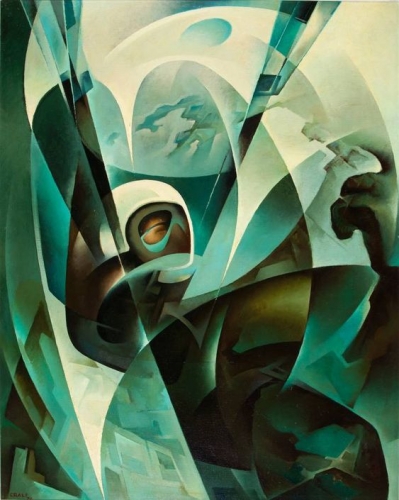
Dromocratie. La vitesse comme puissance
Alexander Douguine
Source: https://www.geopolitika.ru/article/dromokratiya-skorost-kak-vlast
Dans le monde d'aujourd'hui, la vitesse joue un rôle énorme. En tout. Dans l'opération militaire spéciale en Ukraine, nous, Russes, avons constaté que dans la guerre - dans la guerre moderne - c'est également l'un des facteurs clés. Beaucoup, beaucoup - presque tout - dépend de la rapidité avec laquelle on peut obtenir les renseignements, les communiquer au commandement de l'unité de tir et prendre la décision de frapper, ainsi que de changer rapidement et de quitter l'endroit d'où les moyens de tir viennent d'être localisés. D'où le rôle énorme des drones, des communications par satellite, du temps de transmission des coordonnées de l'ennemi, de la mobilité des unités de combat et de la rapidité de la communication des ordres à l'exécutant. De toute évidence, cet aspect a été sous-estimé lors des préparatifs de l'opération militaire spéciale, et nous devons maintenant le rattraper dans un environnement critique.
De même, nous avons sous-estimé notre dépendance vis-à-vis de l'Occident pour la technologie numérique, les puces et la fabrication de matériels de précision. Se préparer à une confrontation frontale avec l'OTAN et, dans le même temps, s'appuyer sur des éléments technologiques développés et produits soit dans les pays de l'OTAN, soit dans des États dépendants de l'Occident, n'est pas une preuve de grande intelligence.
Mais il ne s'agit pas de la dépendance occidentale dans le propos du présent article, mais du facteur vitesse. Le philosophe français Paul Virilio, qui a étudié l'importance de la vitesse pour la civilisation technique moderne, a proposé un terme spécial - la dromocratie. Du grec dromos (vitesse) et kratos (force, puissance). La théorie de Virilio repose sur l'affirmation que dans les nouvelles conditions de civilisation, le gagnant n'est pas celui qui est le plus fort, le plus intelligent ou le mieux équipé, mais celui qui est le plus rapide. La vitesse est ce qui décide de tout. D'où la volonté d'augmenter par tous les moyens la vitesse des processeurs et, par conséquent, de toutes les opérations numériques. C'est le point central de la plupart des réflexions sur l'innovation technique aujourd'hui. Tout le monde rivalise précisément en vitesse.

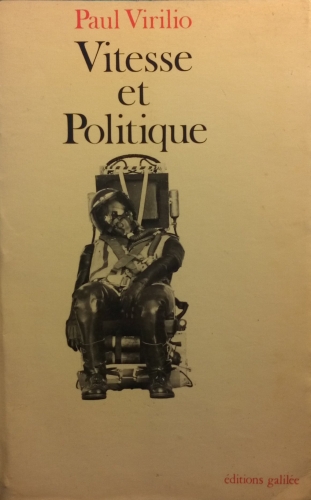
Le monde d'aujourd'hui est une lutte pour la vitesse. Et celui qui s'avère être le plus rapide remporte le prix ultime - le pouvoir. Dans tous ses sens et dimensions - politique, militaire, technologique, économique, culturel.
Pendant ce temps, dans la structure de la dromocratie, la chose la plus précieuse est l'information. C'est la vitesse de transmission des informations qui est l'expression concrète de la puissance. Cela s'applique aussi bien au fonctionnement des bourses mondiales qu'à la conduite de la guerre. Celui qui est capable de faire quelque chose plus rapidement acquiert un pouvoir total sur celui qui hésite.
En même temps, la dromocratie, en tant que stratégie consciemment choisie, c'est-à-dire une tentative de dominer le temps en tant que tel, peut également conduire à des effets étranges. Le facteur de l'avenir entre en jeu. D'où le phénomène des transactions à terme et des fonds de couverture associés, ainsi que d'autres mécanismes financiers de nature similaire dans lesquels les principales transactions sont effectuées avec quelque chose qui n'existe pas encore.
L'idéal de la dromocratie médiatique serait d'être le premier à rendre compte d'un événement qui ne s'est pas encore produit, mais qui est très probablement sur le point de se produire. Ce n'est pas seulement du faux, c'est travailler avec le domaine du possible, du pro-bable. Si nous prenons un événement futur probable comme quelque chose qui s'est déjà produit, nous gagnons du temps et donc du pouvoir. Une autre chose est que cela peut ne pas se produire. Oui, et c'est possible, mais parfois l'échec de l'attente s'avère peu critique, et inversement, une prédiction confirmée, prise au préalable comme un fait accompli, offre d'énormes avantages.

C'est l'essence de la dromocratie : l'élément temps n'est pas très simple et celui qui parvient à le soumettre obtient le pouvoir global total. Dans le développement des supers vitesses, la réalité elle-même est déformée et les lois de la physique non classique - préfigurées dans la théorie de la relativité d'Einstein et, dans une plus large mesure encore, dans la physique quantique - entrent en jeu. Les vitesses limites modifient les lois de la physique. Et c'est dans ce domaine que, selon Virilio, la lutte planétaire pour le pouvoir se joue aujourd'hui.
On retrouve des théories similaires dans le domaine plus appliqué et moins philosophique de la guerre réseau-centrée. Et c'est précisément ce type de guerre réseau-centrée que nous avons rencontré au cours de l'Opération militaire spéciale en Ukraine. La principale caractéristique d'une telle guerre est le transfert rapide d'informations entre les unités individuelles et les centres de commandement. Pour ce faire, les soldats et autres unités de combat sont équipés de multiples caméras et autres capteurs, dont les informations convergent vers un point unique. S'y ajoutent les données provenant des hélicoptères, des drones et des satellites. Ils sont intégrés directement aux unités de combat et de tir. Et cette intégration complète du réseau fournit l'avantage le plus important - l'avantage de la vitesse. C'est ainsi que fonctionnent les HIMARS, les tactiques de groupe mobile et les DRG. Les communications par satellite Starlink ont également été utilisées à cette fin.
Les théories de la guerre réseau-centrée reconnaissent que la rapidité de la prise de décision se fait souvent au détriment de la justification. Il y a beaucoup d'erreurs de calcul. Mais si vous agissez rapidement, même si vous avez commis une erreur, il est toujours temps de la corriger. Le principe du piratage ou des attaques DoS est utilisé ici - l'essentiel est de pilonner l'ensemble de la position des troupes de l'ennemi, en recherchant les points faibles, la porte dérobée. Les pertes peuvent être assez élevées, mais les résultats, en cas de succès, sont très importants.

En outre, la guerre réseau-centrée inclut, comme composante intégrale, les canaux d'information ouverts - en premier lieu, les réseaux sociaux. Ils ne se contentent pas d'accompagner la conduite des hostilités, en ne communiquant, bien sûr, que ce qui est bénéfique et ce qui ne l'est pas, en cachant ou en déformant au-delà de toute reconnaissance, mais ils opèrent également avec un avenir probabiliste. Encore le principe de la dromocratie. Ce que nous percevons comme des faux aujourd'hui n'est rien d'autre que le sondage et la stimulation artificielle d'un futur possible. De nombreuses contrefaçons s'avèrent vaines, tout comme les tentatives de percer les défenses de piratage sont souvent futiles, mais elles atteignent parfois leur but - et le système peut alors être détourné et subjugué.
La dromocratie dans la sphère politique permet de s'écarter des règles idéologiques rigides. En Occident même, par exemple, le racisme et le nazisme ne sont pas, c'est le moins qu'on puisse dire, ouvertement encouragés. Mais une exception est faite dans le cas de l'Ukraine et de quelques autres sociétés orientées vers la défense des intérêts géopolitiques de l'Occident. Le nazisme anti-russe et la russophobie sont florissants en Ukraine, mais l'Occident lui-même ne le remarque pas, l'évitant habilement. Le fait est que pour la construction rapide de la nation là où elle n'a jamais existé, et lorsqu'il y a en fait deux peuples sur un même territoire, on ne peut se passer du nationalisme, comme levier d'Archimède. Pour y parvenir le plus rapidement possible, des formes extrêmes sont nécessaires, y compris le nazisme et le racisme purs et simples. Et c'est à nouveau une question de dromocratie. Un simulacre de nation doit être créé rapidement. À cette fin, l'idéologie radicale, toutes les images et tous les mythes sur la propre exclusivité, même les plus ridicules, sont pris et tout cela est rapidement réalisé (avec un contrôle total de la sphère de l'information, en conséquence, les sociétés de l'Ouest ne le remarquent tout simplement pas).
L'étape suivante est la propagande tout aussi rapide de ces idées, qui n'ont rien à voir avec la démocratie libérale occidentale. Ce qui suit est la guerre, et les agresseurs sont dépeints comme des victimes et les sauveurs comme des bourreaux. L'essentiel est de contrôler l'information. Et si tout se déroule selon le plan des mondialistes, une résolution rapide suit, et après cela, les structures néo-nazies elles-mêmes sont tout aussi rapidement éliminées. C'est presque la même chose que ce que nous avons vu en Croatie lors de l'éclatement de la Yougoslavie. D'abord, l'Occident aide les ultra-nationalistes croates - les néo-Ustachistes - et les arme contre les Serbes, puis il les nettoie lui-même pour qu'il n'y ait plus aucune trace d'eux. L'important est de tout faire très, très vite. Rapidement, le néonazisme est apparu, a rapidement rempli son rôle, a rapidement disparu. Comme si cela n'était jamais arrivé.
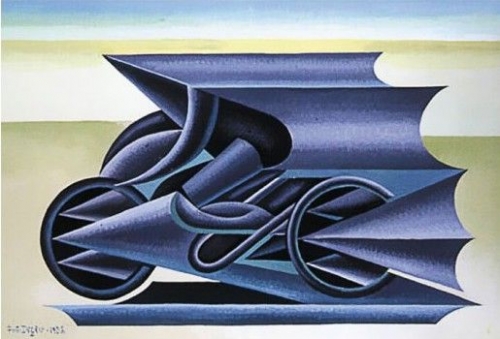
C'est exactement le secret de Zelensky. Ce comédien mercurial comme meneur n'a pas été choisi par hasard. Sa psyché est volatile et sujette à des changements rapides. Le politicien parfait pour une société fluide. Un moment, il dit et fait une chose, le moment suivant, il fait quelque chose de complètement différent. Et personne ne se souvient de ce qui s'est passé il y a une seconde, car la vitesse de circulation des informations ne cesse d'augmenter.
Et sur cette toile de fond, à quoi ressemblons-nous ? Dès que nous avons commencé à agir de manière rapide, décisive et presque spontanée (la première phase de l'opération militaire spéciale), un succès énorme a suivi. Près de la moitié de l'Ukraine est tombée sous notre contrôle.
Dès que nous avons commencé à ralentir l'opération, l'initiative a commencé à passer à l'ennemi. C'est là qu'il s'est avéré que la nature réseau-centrée de la guerre moderne et les lois de la dromocratie n'avaient pas été correctement prises en compte. Dès que nous avons adopté une position réactive, que nous sommes passés à la défensive et au retranchement, nous avons perdu le facteur vitesse. Oui, les victoires ukrainiennes sont pour la plupart virtuelles, mais dans un monde où la queue remue le chien, où presque tout est virtuel (y compris les finances, les services, l'information, etc.), cela ne suffit guère. L'anecdote des deux parachutistes russes sur les ruines de Washington se plaignant - "nous avons perdu la guerre de l'information" - est drôle, mais ambiguë. Après tout, il s'agit aussi de quelque chose de virtuel, d'une tentative de codage pro-babylistique de l'avenir. Cependant, lorsqu'il s'agit de vérifier la réalité, tout n'est pas aussi lisse. Ici, il faut soit abattre toute la dromocratie, la virtualité, toute la postmodernité centrée sur les réseaux, c'est-à-dire toute la modernité et tout le vecteur de l'Occident moderne (mais comment le faire en même temps ?), soit accepter - même si c'est en partie - les règles de l'ennemi, c'est-à-dire nous accélérer nous-mêmes. La question de savoir si nous, les Russes, serons capables d'entrer dans le royaume de la dromocratie et d'apprendre à gagner des guerres réseau-centrées (y compris l'information !) n'est pas une abstraction. Notre victoire en dépend directement.
Pour cela, nous devons tout d'abord comprendre - de manière russe et patriotique - la nature du temps. Combien nous sommes lents à tout comprendre, combien nous sommes arriérés, et combien nous sommes lents à mettre en pratique - cela semble même démentir le proverbe selon lequel "les Russes mettent longtemps à s'atteler, mais ils roulent vite". C'est maintenant le moment où, si nous n'allons pas très vite, la situation pourrait devenir très dangereuse.
Plus vite on le fait, plus vite on réparera les dégâts. Je ne parle même pas de doter nos soldats d'attributs de réseau, d'accélérer le processus de commandement et d'introduire des mesures efficaces de sécurité de l'information. Mais il est tout simplement nécessaire d'être à la hauteur d'un ennemi bien équipé.
Et encore : si la spéculation sur le prix des uniformes minimaux des mobilisés n'a pas été immédiatement suivie d'une vague rapide de représailles directes de la part des autorités, c'est un très mauvais signe. Quelqu'un au pouvoir s'imagine que nous sommes encore en train d'atteler, alors que nous nous précipitons déjà à pleine vitesse. Il est urgent d'y réfléchir. Sinon, nous risquons de nous précipiter, comment dire gentiment... Un peu dans la mauvaise direction.
La Dromocratie n'est pas une blague. Il ne s'agit pas de dépasser l'Occident. Il faut l'emporter sur son hubris vertigineux, mais pour ce faire, nous devons agir à la vitesse de l'éclair. Et de manière raisonnable. La Russie n'a plus le droit ni le temps de s'endormir et de se laisser aller à la léthargie.
13:55 Publié dans Actualité, Nouvelle Droite, Philosophie | Lien permanent | Commentaires (0) | Tags : alexandre douguine, actualité, vitesse, dromocratie, paul virilio, russie, philosophie, nouvelle droite, nouvelle droite russe |  |
|  del.icio.us |
del.icio.us |  |
|  Digg |
Digg | ![]() Facebook
Facebook
jeudi, 20 octobre 2022
Robert Steuckers et la nouvelle droite
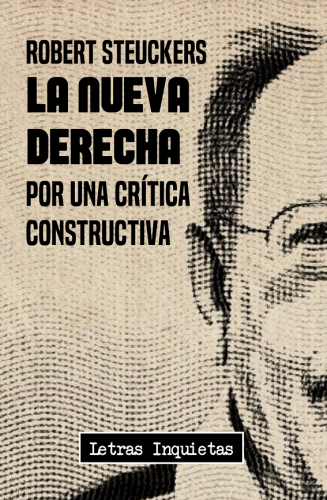
Robert Steuckers et la nouvelle droite
Carlos X. Blanco
Source: http://adaraga.com/robert-steuckers-y-la-nueva-derecha/
Robert Steuckers est un témoin et un acteur de premier plan dans l'émergence de ce phénomène européen plutôt rare, à mi-chemin entre le combat intellectuel et l'activisme, appelé la Nouvelle Droite. Je dis "rare" parce qu'il a toujours été rare, peu fréquent qu'un groupe de personnes, en principe déconnectées des sphères du pouvoir et ramant résolument à contre-courant, ait eu autant d'influence en Europe sans avoir obtenu (directement et institutionnellement) le moindre succès.
Ce n'est certainement pas le cas de la gauche, que ce soit l'ancienne ou la nouvelle gauche. Elle jouit d'une hégémonie culturelle et académique, elle a du succès, elle est "capillaire", dans le sens où elle est infiltrée dans les recoins les plus profonds du Grand système intellectuel mondialiste et néolibéral appelé "l'Occident". Mais la mort réussie de la gauche est plus que prédite. Il s'agissait pour les pays colonisés par les Etats-Unis (l'ensemble de l'Union européenne, ainsi que l'"Anglosphère" présente sur les cinq continents) d'accepter l'économie capitaliste dans sa version prédatrice et financiarisée (turbo-capitalisme) en échange du contentement culturel de la non négligeable classe moyenne universitaire, dont les esprits étaient déjà formatés par l'idéologie progressiste de gauche.
C'est ainsi qu'à partir de la guerre froide, nombre des meilleurs textes marxistes ont été écrits par des Britanniques et des Yankees, que la théorie critique a été confortablement hébergée sur les campus américains, et que ses dérivés féministes, aberro-sexualistes, transhumanistes, etc. ont été produits en anglais, et étaient aussi exportables que le rap ou le Coca-Cola. Alors que l'économie était dédaignée, à cause du "réductionnisme" et du "déterminisme", la lutte culturelle était la spécialité de la nouvelle gauche, et elle l'a gagnée, laissant le capitalisme intact.
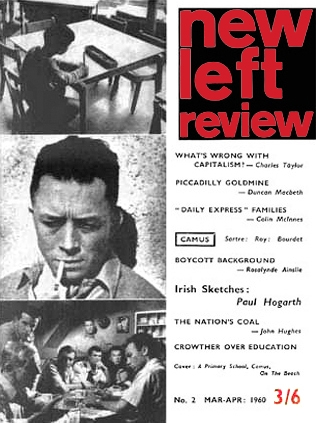 La droite, par contre, lorsqu'elle voulait être "nouvelle", avait un panorama beaucoup plus compliqué. Elle ne pouvait pas s'identifier de trop près, dans les années 1960 et 1970, aux chemises brunes et aux saluts romains. Ce côté nostalgique était le côté perdant, et cette perte-là était "pour l'éternité". On parlait d'une autre "nouvelle droite", mais désormais ultra-libérale : les "sociétés ouvertes" signifiaient, en fin de compte, des marchés ouverts... pour les pays qui n'ont d'autre choix que de les ouvrir à l'impérialisme économique. Les États-Unis sont une puissance spécialisée dans l'ouverture des marchés à coups de canons, d'assassinats sélectifs ou de coups d'État. Une société ouverte... et à genoux. La nation subordonnée, de deux choses l'une, soit ouvre les marchés, soit voit sa chair lacérée et sa tête fracassée par les éclats des bombes.
La droite, par contre, lorsqu'elle voulait être "nouvelle", avait un panorama beaucoup plus compliqué. Elle ne pouvait pas s'identifier de trop près, dans les années 1960 et 1970, aux chemises brunes et aux saluts romains. Ce côté nostalgique était le côté perdant, et cette perte-là était "pour l'éternité". On parlait d'une autre "nouvelle droite", mais désormais ultra-libérale : les "sociétés ouvertes" signifiaient, en fin de compte, des marchés ouverts... pour les pays qui n'ont d'autre choix que de les ouvrir à l'impérialisme économique. Les États-Unis sont une puissance spécialisée dans l'ouverture des marchés à coups de canons, d'assassinats sélectifs ou de coups d'État. Une société ouverte... et à genoux. La nation subordonnée, de deux choses l'une, soit ouvre les marchés, soit voit sa chair lacérée et sa tête fracassée par les éclats des bombes.
En dehors de cela, il y avait les droites "patriotiques", le gaullisme, le maurrassisme, etc. Mais ils n'étaient plus tout à fait nouveaux. Parler de la Nouvelle Droite à la naissance du GRECE n'était qu'une invention journalistique. Une grande partie de la trajectoire de ses dirigeants a été, en fait, transversale. Dans l'évolution intellectuelle d'Alain de Benoist ou de Robert Steuckers, on trouve des éléments anticapitalistes plus honnêtes que dans de nombreux textes prétendument "rouges" des socialistes et communistes européens, avec leurs cartes du parti, leurs drapeaux rouges et leurs poings toujours levés. Dans les publications actuelles de cette Nouvelle Droite, on trouve des intellectuels d'une grande compétence ès-marxisme comme Preve, Collin et Fusaro, que l'on ne peut pas du tout classer dans la catégorie "droite", ni ancienne ni nouvelle. Il y a donc une difficulté terminologique dans l'histoire de la Nouvelle Droite. Dans ce livre, Steuckers, membre fondateur et dissident lui-même, explique le péché originel de ce mouvement intellectuel, aussi rare que difficile à classer.
 Le texte de Steuckers qui figure désormais dans le catalogue des éditions Letras Inquietas est un bilan dur, très dur, du rôle joué par l'un des principaux représentants de ce mouvement intellectuel, Alain de Benoist, un leader et un groupe intellectuel qui a cherché à remplacer l'hégémonie culturelle de la gauche sans tomber dans les extrêmes néolibéraux, conservateurs ou fascistes de la vieille droite. L'objet d'un bilan aussi sévère, Alain de Benoist, a commis des erreurs d'organisation, de graves défaillances de leadership. Steuckers attribue la racine de l'échec du mouvement à certaines manies et qualités personnelles de l'intellectuel français. Dans une large mesure, tout mouvement (qu'il soit politique ou métapolitique) a besoin d'une direction forte : désignation des ennemis, sélection des thèmes, détection des lacunes du discours et de la praxis dominants, recrutement des cadres... Notre auteur reproche à son ancien camarade de ne pas avoir assumé une direction efficace qui transférerait le travail intellectuel sur le terrain de la praxis. Praxis, action politique efficace sur les organisations et sur les personnes, du moins dans le contexte français où le GRECE est né et, à partir de là, dans tous les pays voisins où il y avait des filiales (Italie, Allemagne, Pays-Bas...).
Le texte de Steuckers qui figure désormais dans le catalogue des éditions Letras Inquietas est un bilan dur, très dur, du rôle joué par l'un des principaux représentants de ce mouvement intellectuel, Alain de Benoist, un leader et un groupe intellectuel qui a cherché à remplacer l'hégémonie culturelle de la gauche sans tomber dans les extrêmes néolibéraux, conservateurs ou fascistes de la vieille droite. L'objet d'un bilan aussi sévère, Alain de Benoist, a commis des erreurs d'organisation, de graves défaillances de leadership. Steuckers attribue la racine de l'échec du mouvement à certaines manies et qualités personnelles de l'intellectuel français. Dans une large mesure, tout mouvement (qu'il soit politique ou métapolitique) a besoin d'une direction forte : désignation des ennemis, sélection des thèmes, détection des lacunes du discours et de la praxis dominants, recrutement des cadres... Notre auteur reproche à son ancien camarade de ne pas avoir assumé une direction efficace qui transférerait le travail intellectuel sur le terrain de la praxis. Praxis, action politique efficace sur les organisations et sur les personnes, du moins dans le contexte français où le GRECE est né et, à partir de là, dans tous les pays voisins où il y avait des filiales (Italie, Allemagne, Pays-Bas...).
Je dois avouer que la partie destructive du livre m'intéresse moins que la partie constructive. Ici, au-delà de ce que De Benoist a fait ou n'a pas fait, je veux sauver les propositions de Steuckers. Par exemple : étudier Carl Schmitt, beaucoup plus sérieusement et beaucoup plus profondément. Le cercle parisien de la Nouvelle Droite ne l'a pas fait. Steuckers esquisse en quelques pages pertinentes l'école historique du droit, qui part de von Savigny et va jusqu'à Schmitt. Ce courant intellectuel serait décisif pour une future Europe "impériale". Cette fédération devrait disposer d'une sorte de chancellerie suprême de juristes qui tenteraient de coordonner les traditions nationales du droit européen afin de créer des cadres communs à partir de celles-ci. Des traditions nationales enterrées et réprimées par le droit positif des États-nations, enfants de l'absolutisme et du centralisme jacobin le plus atroce. Il s'agit d'une ligne de travail abandonnée par la Nouvelle Droite quelque peu égarée dans le labyrinthe germanique de la "révolution conservatrice".
 En suivant cette partie constructive du livre de Steuckers, le lecteur peut trouver des éléments critiques contre le fanatisme juridique qui sévit de nos jours. L'Union européenne, et les États tyranniques qui la composent et qui imposent leurs règles, souvent aberrantes et contraires à la tradition et à l'habitus mental des vrais peuples européens, exerce ce fanatisme positiviste, et donne un pouvoir excessif à une secte de juristes cosmopolites et utopistes, coupant les cordons ombilicaux qui lient les peuples à leur passé, à leur terre, à leurs coutumes et à leur véritable ethos démocratique. Ce ne sont pas les invectives à l'égard de de Benoist qui m'interpellent le plus dans ce livre, mais les suggestions de recherche que propose l'ami Steuckers. Il suggère la récupération d'une démocratie authentique, celle des peuples authentiques (cantons, communautés régionales, communes, nations apatrides), les patries charnelles qui sont, à l'époque, les véritables protagonistes d'un futur processus fédératif ou impérial. Lisez Steuckers. Vous pouvez toujours apprendre de lui.
En suivant cette partie constructive du livre de Steuckers, le lecteur peut trouver des éléments critiques contre le fanatisme juridique qui sévit de nos jours. L'Union européenne, et les États tyranniques qui la composent et qui imposent leurs règles, souvent aberrantes et contraires à la tradition et à l'habitus mental des vrais peuples européens, exerce ce fanatisme positiviste, et donne un pouvoir excessif à une secte de juristes cosmopolites et utopistes, coupant les cordons ombilicaux qui lient les peuples à leur passé, à leur terre, à leurs coutumes et à leur véritable ethos démocratique. Ce ne sont pas les invectives à l'égard de de Benoist qui m'interpellent le plus dans ce livre, mais les suggestions de recherche que propose l'ami Steuckers. Il suggère la récupération d'une démocratie authentique, celle des peuples authentiques (cantons, communautés régionales, communes, nations apatrides), les patries charnelles qui sont, à l'époque, les véritables protagonistes d'un futur processus fédératif ou impérial. Lisez Steuckers. Vous pouvez toujours apprendre de lui.
Robert Steuckers : La nueva derecha: por una critica constructiva, Letras Inquietas (septembre 2022)
Qui est Carlos X. Blanco?
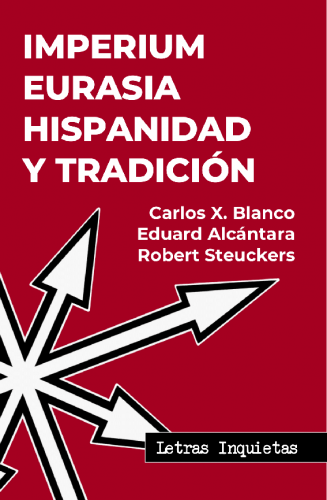 Carlos X. Blanco est professeur, écrivain et chroniqueur pour, entre autres, La Tribuna del País Vasco. Il est titulaire d'un doctorat en philosophie et est considéré comme l'un des principaux experts espagnols de la bataille de Covadonga et du début de la Reconquête. Ces dernières années, il a consacré deux ouvrages clés, à la fois romans et essais, à ce sujet. Il s'agit du roman historique La luz del norte et de l'étude De Covadonga a la nación española (De Covadonga à la nation espagnole), avec une préface de Robert Steuckers. Les deux ouvrages sont publiés par EAS. Il a récemment publié les ouvrages Ensayos antimaterialistas et El Imperio y la Hispanidad chez Letras Inquietas.
Carlos X. Blanco est professeur, écrivain et chroniqueur pour, entre autres, La Tribuna del País Vasco. Il est titulaire d'un doctorat en philosophie et est considéré comme l'un des principaux experts espagnols de la bataille de Covadonga et du début de la Reconquête. Ces dernières années, il a consacré deux ouvrages clés, à la fois romans et essais, à ce sujet. Il s'agit du roman historique La luz del norte et de l'étude De Covadonga a la nación española (De Covadonga à la nation espagnole), avec une préface de Robert Steuckers. Les deux ouvrages sont publiés par EAS. Il a récemment publié les ouvrages Ensayos antimaterialistas et El Imperio y la Hispanidad chez Letras Inquietas.
La Nouvelle Droite : Pour une critique constructive
SYNOPSIS
La Nouvelle Droite était très prometteuse à ses débuts car elle voulait réactiver ce que les idéologies dominantes avaient refoulé et ce que les multiples réductionnismes à l'œuvre dans la société excluaient ou refusaient de prendre en compte. Pendant les années d'or de la "nouvelle droite", des dizaines de cadres ont été formés puis discrètement insérés dans les différentes strates de la vie politique et culturelle. A l'abri des regards, ces hommes et ces femmes continuent à faire du bon travail, dans des réseaux associatifs, dans des groupes de recherche, dans le monde de l'édition... Mais ils ont quitté la Nouvelle Droite, devenue une secte : ils ne la fréquentent plus, ils n'influencent plus les jeunes qui cherchent une voie et ils n'utilisent plus ce langage codifié, identifiable et stéréotypé, qui révèle une vulgarité plutôt qu'une méthode.
AUTEUR
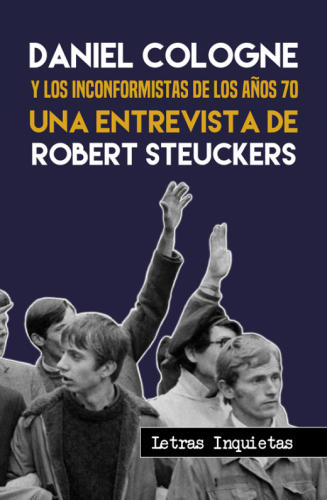 Robert Steuckers, né le 8 janvier 1956 à Uccle, est un essayiste et activiste politique belge polyglotte. Il a dirigé un bureau de traduction à Bruxelles de 1985 à 2005, très actif principalement dans les domaines du droit, de l'architecture et des relations publiques (le lobbyisme auprès de la Commission européenne). Proche de la Nouvelle Droite à l'époque, il contribué, après Giorgio Locchi, à vulgariser les idées la Révolution conservatrice allemande au sein de ce mouvement. Il quitte le "Groupement de recherche et d'études pour la civilisation européenne" (GRECE) en décembre 1992 pour créer, en avril 1994, le pôle de rétivité transnational "Synergies européennes", où il défend la thèse d'un continentalisme anticapitaliste paneuropéen. Il a publié dans Letras Inquietas le livre Daniel Cologne y los inconformistas de los años 70 et est co-auteur de El peregrino absoluto et d' Imperium, Eurasia, Hispanidad y Tradición. Robert Steuckers : Una vida metapolitica de Monika Berchvok et Thierry Durolle est également disponible chez le même éditeur.
Robert Steuckers, né le 8 janvier 1956 à Uccle, est un essayiste et activiste politique belge polyglotte. Il a dirigé un bureau de traduction à Bruxelles de 1985 à 2005, très actif principalement dans les domaines du droit, de l'architecture et des relations publiques (le lobbyisme auprès de la Commission européenne). Proche de la Nouvelle Droite à l'époque, il contribué, après Giorgio Locchi, à vulgariser les idées la Révolution conservatrice allemande au sein de ce mouvement. Il quitte le "Groupement de recherche et d'études pour la civilisation européenne" (GRECE) en décembre 1992 pour créer, en avril 1994, le pôle de rétivité transnational "Synergies européennes", où il défend la thèse d'un continentalisme anticapitaliste paneuropéen. Il a publié dans Letras Inquietas le livre Daniel Cologne y los inconformistas de los años 70 et est co-auteur de El peregrino absoluto et d' Imperium, Eurasia, Hispanidad y Tradición. Robert Steuckers : Una vida metapolitica de Monika Berchvok et Thierry Durolle est également disponible chez le même éditeur.
DÉTAILS DU LIVRE
Titre : La nouvelle droite : pour une critique constructive
Auteur : Robert Steuckers
Première édition : septembre 2022
Nombre de pages : 117
ISBN : 979-8849-560-12-0
Prix: 11,99 euros
20:03 Publié dans Livre, Livre, Nouvelle Droite | Lien permanent | Commentaires (0) | Tags : livre, nouvelle droite, robert steuckers, alain de benoist, métapolitique |  |
|  del.icio.us |
del.icio.us |  |
|  Digg |
Digg | ![]() Facebook
Facebook
mercredi, 05 octobre 2022
La controverse eurasienne dans l'opposition en Russie aujourd'hui [1ère partie]

La controverse eurasienne dans l'opposition en Russie aujourd'hui [1ère partie]
par Aleksandr Douguine
Source: https://www.ideeazione.com/la-polemica-eurasiatica-nellopposizione-1/
L'opposition et le système
Ces derniers temps, l'équilibre délicat perceptible dans le domaine de l'opposition politique et idéologique en Russie a commencé à être perturbé par une polémique croissante entre les "ethnocentristes" et les "Eurasiens", les "rouges" et les "blancs", etc. D'une part, cette polémique a clarifié les principes doctrinaux de ces diverses tendances, mouvements et partis qui étaient auparavant trop souvent vagues et seulement inconsciemment formulés. C'est un aspect positif. D'autre part, ce processus est le signe de l'entrée de l'opposition dans un schéma préparé par le Système, c'est-à-dire sa "conventionnalisation", sa domestication et sa "castration" dans des "jeux" parlementaires et partisans stériles. Il convient de noter que ce processus d'élimination de l'opposition non pas par la répression, mais par la domestication, la corruption progressive et la "stérilisation" a été brillamment élaboré dans l'Occident mondialiste. Selon les mots de Jean Thiriart : "Il y a deux façons de détruire une idéologie révolutionnaire (en particulier le communisme) : la bureaucratie et le parlementarisme".
Il est assez significatif que dans les sociétés mondialistes développées, il n'existe pas d'opposition qui remette réellement en cause les principes mêmes du système. La droite et la gauche ne sont que des éléments d'un jeu délibérément fabriqué et fallacieux. En revanche, notre opposition, à nous en Russie, qui a pris forme après août 1991, est une véritable opposition qui incarne le profond rejet de certains segments de la société, non seulement des actions spécifiques du groupe au pouvoir, mais aussi des principes mêmes de la vision du monde qui a triomphé dans le pays après la défaite du coup d'État.
L'émergence de polémiques aussi amples au sein de l'opposition pourrait conduire à sa fragmentation et à son intégration ultérieure dans des niches politiques spécialement préparées par le régime lui-même. Pour cette raison, il est très important de clarifier ici et maintenant les différences de perspective qui émergent au sein de l'opposition et d'émettre des hypothèses sur la logique de leur développement potentiel.
Le début de la polémique : Eurasianistes et ethno-centristes
La ligne principale de la division qui se dessine dans l'opposition oppose les "eurasistes", les "étatistes" et les "nationaux-communistes" d'une part, et les "nationalistes", les "panslavistes" et les "monarchistes" d'autre part. Le critère principal et le motif central de ce débat est la question de notre approche de l'État et de l'ethnos. C'est précisément cette conception qui divise l'opposition aujourd'hui, et non la question de l'attitude envers le communisme, la religion, le marxisme, etc.
Des deux côtés, on trouve une extrême droite (composée d'antimarxistes, d'orthodoxes, de fascistes, etc.) et une extrême gauche (composée d'anciens membres de l'appareil du parti, de communistes, de socialistes, etc.). Les Eurasiens et les "étatistes" affirment la supériorité de l'État sur l'ethnie. Leur nationalisme est ouvertement impérial, supra-ethnique et géopolitique et est souvent couplé au messianisme traditionnellement russe, orthodoxe et étatique, propre du peuple porteur de Dieu (théophore). Pour cette aile, le démembrement de l'URSS est un Mal absolu, et les auteurs de cette aberration doivent être clairement identifiés comme des criminels nationaux avec lesquels aucun dialogue, conciliation ou compromis constructif n'est possible. Il s'agit là d'une "opposition radicale et irréconciliable", dotée d'une forte détermination politique à combattre le Système jusqu'au bout. Dans ce combat, les Eurasiens sont prêts à s'allier à toutes les forces religieuses, nationales et géopolitiques, tant à l'Est qu'à l'Ouest, qui peuvent aider à la lutte contre le mondialisme et contribuer à la reconstitution de l'Empire. En termes géopolitiques, les "étatistes" considèrent le mondialisme et les États-Unis thalassocratiques comme l'ennemi principal.
Les "nationalistes slavophiles", quant à eux, affirment la primauté du facteur ethnique. Ce nationalisme se limite à l'ethnos de la Grande Russie ou à la défense d'une union pan-slave. Ce camp abrite deux pôles : le pôle "ethnique minimaliste", incarné par les projets de l'organisation ROD basée à Pétersbourg, qui propose d'établir un État mono-ethnique de la Grande Russie, et le pôle "ethnique maximaliste", qui propose même parfois de restaurer l'URSS, mais uniquement dans le contexte et au cours de l'expansion militaire et économique nationale de la Russie dans les républiques sécessionnistes (par exemple sous le prétexte de défendre la population russe). Les nationalistes slavophiles n'excluent pas la possibilité d'un dialogue et d'une coopération avec le gouvernement à condition de limiter l'influence des russophobes ouverts et haineux et des peuples non-russes. En tout cas, pour eux, l'ennemi principal est les autres peuples, les Juifs, etc. Pour eux, les facteurs géopolitiques sont secondaires et ont une valeur purement pratique.

Reproches mutuels
Les deux pôles de l'opposition ont un certain nombre de revendications fondamentales contre l'autre, qui sont facilement distinguables.
Les Eurasiens ont formulé un certain nombre de revendications à l'encontre des ethnocentristes. Ils accusent ces derniers:
- d'avoir facilité l'effondrement de l'URSS en exigeant la souveraineté de la Russie et la création de bases étatiques au sein de la RSFSR (ce qui n'a fait que faire le jeu des démocrates et des mondialistes) ;
- de provoquer des tensions au sein de la population russe dans les républiques (puisque limiter la nation russe à un cadre ethnique étroit ne peut que conduire à l'aliéner des autres peuples de l'empire) ;
- de priver le mouvement patriotique de la conscience géopolitique de la stratégie américaine de conquête de l'Eurasie (dont les Américains profitent pour étendre leurs mains sur les régions que les Russes laissent sans surveillance en décidant de "se concentrer sur leurs propres problèmes") ;
- d'avoir réduit le nationalisme "universel", "impérial" et "messianique" des Russes au niveau des frontières purement ethniques (rendant ainsi le nationalisme russe impuissant, passif et incapable de remplir sa mission d'État);
- d'avoir favorisé l'engagement conformiste dans le dialogue avec le gouvernement russe anti-national, mondialiste et pro-américain chaque fois qu'il fait des gestes hypocrites envers les traditions russes (folklore national-religieux archaïque et inoffensif) ;
- d'avoir idiotisé les traditions russes en prônant la restauration des aspects archaïques et lugubres de la Russie prérévolutionnaire et en renonçant aux réalisations technologiques, stratégiques et industrielles de la période soviétique ;
- d'avoir trop souvent prôné la propriété privée (le capitalisme national), qui est en contradiction avec les traditions sociales de la Russie ;
- enfin, en étant les principaux artisans de la scission dans l'opposition, d'avoir rejeté l'alliance qui leur était constamment proposée par les Eurasiens, conformément à l'ouverture et au pragmatisme de leur idéologie, qui se fixait comme objectifs principaux la reconquête de l'État et la restauration de l'Empire.
Dans ce cadre: Qui sont les bolcheviks ? Qui sont les Mensheviks ?
Ce sont là les raisons fondamentales de la controverse croissante au sein de l'opposition, qui peut difficilement être arrêtée au niveau des leaders autoritaires qui appellent à la concorde et à l'unité et offrent des admonitions et des sympathies personnelles. Sur cette question, cependant, ces contradictions sont de nature fondamentale et peuvent être comparées de manière circonstancielle à la dispute entre les bolcheviks et les mencheviks. Les Eurasiens sont les bolcheviks qui refusent tout compromis avec le gouvernement mondialiste corrompu, s'abaissent à la démagogie parlementaire, recherchent la conciliation avec le système et ne sont pas disposés à opter pour des compromis limités et ambigus. Les ethnocentristes sont les mencheviks qui se contentent de poursuivre des réformes graduelles au niveau national et d'abandonner la révolution nationale planétaire en échange de petites concessions de la part des mondialistes, qui sont prêts à présenter aux Russes un "être national" folklorique dans les réserves eurasiennes.
En outre, il est extrêmement important que le camp eurasien soit engagé dans un processus de créativité idéologique qui conduit à la formation de nouveaux concepts, tels que le "futurisme slavophile" et la grande idée de l'"Empire eurasien", qui, à l'avenir, sera en mesure non seulement de récupérer la puissance géopolitique perdue de la Russie, mais aussi de devenir un centre de doctrine anti-mondialiste capable de stimuler le processus planétaire de libération idéologique et géopolitique de la domination bancocratique américaine. Cette idéologie est offensive, virulente et universellement applicable, tant en Europe que dans le tiers monde.
Les "nationalistes" se concentrent uniquement sur la résistance passive et défensive. Ils regardent en arrière avec une nostalgie passionnée et une nostalgie sentimentale du passé. Ils sont fidèles non pas tant à l'esprit et à l'essence de la Tradition russe qu'à ses formes extérieures. Cependant, le modèle mono-ethnique de la Russie est sans aucun doute une idée entièrement "moderniste", car rien de semblable n'a jamais existé en Russie dans toute son histoire.
Toutefois, il serait erroné d'associer les "bolcheviks" de l'opposition (les Eurasiens) au "modernisme" et les "mencheviks" à l'"archaïsme". En réalité, les deux pôles contiennent des éléments modernes et traditionnels, bien que combinés de différentes manières. L'orientation impériale, l'ouverture aux groupes ethniques non russes, l'élitisme et les traditions économiques communautaires constituent les aspects profondément traditionnels du côté eurasien. Cependant, les Eurasiens sont des modernistes en termes de projets industriels, technologiques et militaro-industriels et en soutenant la création de systèmes informatiques mondiaux et de systèmes de communication modernes. Les "nationalistes" purs sont des modernistes dans leur "mono-ethnisme", dans leur aversion pour les élites (ce qui est une preuve d'individualisme et d'égalitarisme) et dans leur sympathie pour le capital national. D'autre part, leur rejet de l'industrialisation et du développement technologique est une caractéristique purement archaïque.
21:21 Publié dans Actualité, Affaires européennes, Nouvelle Droite | Lien permanent | Commentaires (1) | Tags : alexandre douguine, russie, ethno-nationalisme, eurasistes, nouvelle droite, nouvelle droite russe |  |
|  del.icio.us |
del.icio.us |  |
|  Digg |
Digg | ![]() Facebook
Facebook
samedi, 24 septembre 2022
Une réponse révolutionnaire au transatlantisme : la "mission eurasienne" d'Alexander Douguine
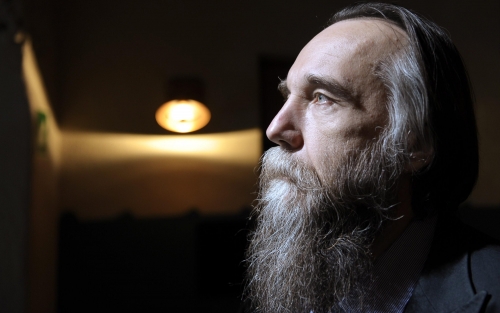
Une réponse révolutionnaire au transatlantisme : la "mission eurasienne" d'Alexander Douguine
par Alexander Markovics
Bron: https://gegenstrom.org/alexander-markovics-eine-revolutio...
Au vu des crises actuelles qui tiennent fermement les États européens comme dans un étau, de nombreux Européens inquiets s'interrogent anxieusement sur l'avenir géopolitique du continent. Alexander Markovics, on le sait, défend avec passion l'idée d'un lien fort entre l'Europe et la Russie. C'est ce qu'il fait également dans l'article suivant, où il explique les domaines de la politique sociale et de la géopolitique et leurs oppositions polaires respectives.
L'Europe souffre de son inféodation aux États-Unis et à la communauté des valeurs occidentales. Que ce soit en termes d'identité (immigration de masse, individualisme, politique de genre) ou de politique économique et énergétique (sanctions contre la Russie), le lien étroit avec les États-Unis et le libéralisme n'offre absolument aucun avenir à l'Europe. Mais à quoi peut ressembler une alternative révolutionnaire au "Nouvel ordre mondial" et à la mondialisation ? Dans son livre "Mission eurasienne", le philosophe russe Alexandre Douguine présente une contre-proposition révolutionnaire à l'ordre mondial occidental, qui promet également un avenir plein d'espoir pour l'Allemagne et l'Europe. Nous allons maintenant exposer les principales idées que Douguine exprime dans ce livre et déterminer si ce dernier peut également intéresser le camp des patriotes en Allemagne.

Mission eurasienne - une alternative au transatlantisme
Dans cette traduction en français d'un ouvrage déjà paru en anglais en 2014, Douguine décrit d'une part l'évolution de l'idée eurasienne, en commençant par l'eurasisme dans l'entre-deux-guerres, en passant par le néo-eurasisme vers la fin de l'Union soviétique, jusqu'à la Quatrième théorie politique à la fin des années 2000, et d'autre part il explique pourquoi celle-ci constitue une alternative au transatlantisme (ndt: terme allemand pour désigner l'atlantisme), non seulement pour la Russie, mais aussi pour les autres civilisations du monde. Les textes rassemblés pour ce livre couvrent une longue période allant du début des années 2000 ("Manifeste de l'alliance révolutionnaire mondiale") à 2022 (voir ses textes sur l'opération militaire russe en Ukraine) en passant par la fin des années 2000 et le début des années 2010 (textes sur la Quatrième théorie politique, interview de Douguine peu avant la réélection de Poutine en 2012). En outre, l'édition allemande contient également une préface de Peter Töpfer sur le "Sujet radical" de Douguine, qui fait référence à son œuvre philosophique. Nous n'en ferons ici qu'une brève remarque, car cette explication ne figure pas dans l'édition allemande. Ce faisant, les textes abordent également une question cruciale : Qu'est-ce qui fait de l'eurasisme et de la Quatrième théorie politique une réponse révolutionnaire au libéralisme pour l'Allemagne et l'Europe ?
Pour la diversité des peuples, contre l'universalisme occidental
La nature révolutionnaire de l'eurasisme se révèle dans le fait qu'il rejette l'universalisme occidental dans toutes ses dimensions. Chaque peuple doit-il vivre dans une démocratie à l'occidentale ? Toutes les économies doivent-elles obéir aux lois du libre marché et du capitalisme ? Ce sont précisément ces idées que les Eurasistes rejettent radicalement. Cela s'explique en grande partie par l'histoire de leur développement : dans le prolongement des slavophiles qui, dès le 19ème siècle, rejetaient le libéralisme et proclamaient une civilisation russe autonome, bien distincte de l'Occident, les Eurasistes ont commencé à réfléchir à la place de la Russie dans le monde lors de leur exil européen dans les années 1920, après la fin de la guerre civile russe. Les principaux représentants de l'eurasisme, tels Nikolai Trubetzkoy [1], Petr Savitsky [2] et Lev Gumiljov [3], ont rejeté l'exigence occidentale de pérégriner spirituellement "d'est en ouest" et ont insisté sur leur identité russo-eurasienne si particulière, qu'ils conçoivent explicitement comme une synthèse non seulement des cultures slaves orientales et finno-ougriennes, mais aussi des modes de vie mongol et turc. Une importance particulière est accordée à l'effet passionnel qui, selon Gumiljov, conduit à un mode de vie actif et intense (celui des peuples des steppes) et constitue une mutation génétique au sein de l'ethnos, contribuant à la naissance de passionnés.
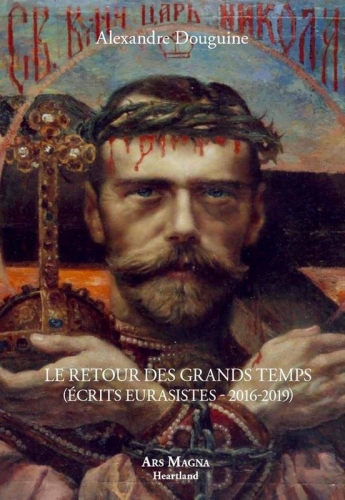
Le monde : pas un univers, mais un plurivers
Par analogie avec le représentant de la Révolution conservatrice Oswald Spengler, ils ont ainsi forgé le concept de "civilisation", par lequel ils entendent non pas une forme de déchéance de la culture, mais un cercle culturel parmi d'autres, auquel différents peuples et cultures peuvent s'unir en raison de points communs dans leur histoire, leur culture et leur religion. Contrairement aux penseurs libéraux occidentaux du 20ème siècle, qui affirmaient qu'il n'existait qu'une seule civilisation occidentale et que tous les autres peuples étaient des barbares, les Eurasistes proclamaient la pluralité des civilisations et donc un plurivers, par opposition à la conception occidentale d'un univers culturel. Ainsi, tout en rejetant l'idée d'un "monde unique", ils considèrent qu'il y a autant de mondes que de peuples dans l'esprit des gens, générés par le langage propre à chacun d'eux et ce, en premier lieu, dans la pensée.
La terre : l'habitat comme influence décisive dans le devenir d'un peuple
En s'appuyant sur la discipline de la géosophie, les Eurasistes ont constaté qu'il ne pouvait y avoir de modèle universel de développement humain, car la multiplicité des paysages sur la Terre engendre également une multiplicité de cultures, chacune avec ses propres cycles, ses propres critères internes et sa propre logique. L'habitat définit donc le peuple qui y vit, les peuples deviennent l'expression du paysage dans lequel ils vivent. En conséquence, les Eurasistes ont plaidé pour que les civilisations soient également analysées selon un axe spatial.
Les néo-eurasistes : eurasisme + traditionalisme + géopolitique
Les néo-eurasistes, qui ont commencé à faire parler d'eux à la fin des années 1980 et dont Alexandre Douguine est l'un des principaux représentants, ont repris les idées de leurs ancêtres en les enrichissant de la pensée de la révolution conservatrice et de la géopolitique. L'émergence de ce mouvement de pensée a été rendue possible par l'érosion de l'Union soviétique qui, après la fin du stalinisme, était prise dans un conflit interne entre les forces réformistes/sociales-démocrates et les faucons aux idées conservatrices. La victoire des forces réformistes a été suivie par l'éclatement de l'URSS et l'émergence d'un État russe dont les élites percevaient la culture russe comme quelque chose d'étranger à assimiler à la culture occidentale. Le national-bolchevisme, né de la collaboration entre d'anciens cadres conservateurs du PCUS et des opposants conservateurs et patriotes, n'était qu'une étape intermédiaire dans le développement du néo-eurasisme. Suivant les leçons de Carl Schmitt, ils comprenaient la lutte entre l'Occident et la civilisation eurasienne comme un conflit entre des puissances maritimes à l'esprit progressiste et mondialiste et des puissances continentales (telluriques) à l'esprit conservateur et traditionaliste. Dans le cadre de ce conflit historique mondial entre la terre et la mer, chaque État et chaque culture peut choisir son camp. Les néo-eurasistes, en tant qu'opposants à l'ordre mondial unipolaire et à la mondialisation, plaident ici en faveur d'une prise de position aux côtés de la puissance terrestre dans la grande guerre des continents. Enfin, l'école de pensée philosophique du traditionalisme, avec ses représentants René Guénon, Julius Evola et Titus Burckhardt, est également d'une grande importance pour le néo-eurasisme, car elle représente un règlement de comptes général non seulement avec le libéralisme et le capitalisme, mais aussi avec l'ensemble de la modernité en tant que telle, qui souligne la primauté de l'idée et de la religion. Par conséquent, le néo-eurasisme est une idéologie anti-impérialiste, anti-moderne et anti-capitaliste, dont l'objectif est de restaurer le mode de vie et de pensée traditionnel au sein de chaque civilisation.

Grand espace et civilisation comme nouveaux acteurs de la géopolitique
S'appuyant également sur Carl Schmitt, ils considèrent que l'acteur de cette lutte n'est pas l'État-nation, mais le grand espace au sens de la "civilisation", telle qu'ils l'ont définie. Douguine voit l'avenir de l'Etat-nation dans la lutte contre la mondialisation en fonction de trois choix possibles:
- La dissolution dans un futur État mondial.
- La résistance à l'unipolarité avec maintien de l'ordre étatique national.
- L'abolition de l'État-nation dans une formation de grand espace.
Dans le prolongement de Carl Schmitt, Alexander Douguine se prononce en faveur de la civilisation et du grand espace comme forme d'organisation future en géopolitique. Celui-ci ne correspond pas, selon sa logique, au nationalisme qui uniformise et unifie ses citoyens dans la matrice de pensée propre à la modernité (voir par exemple la République française ou, dans l'histoire allemande, le Troisième Reich), mais à celui de l'empire, qui est toujours composé d'une multitude de peuples et de religions et dirigé par un peuple impérial. Douguine constate ici un pluriversum des civilisations, dans lequel non seulement la Russie-Eurasie, la Chine et le grand espace islamique composé de plusieurs civilisations ainsi que l'Amérique du Sud ont une chance de s'émanciper de l'universalisme occidental, mais aussi l'Europe elle-même, qui est pour le moment encore vassale [4] des États-Unis.
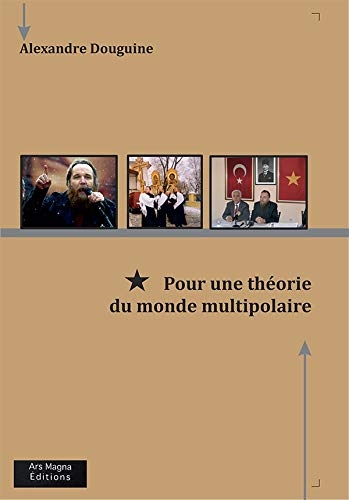
Grand espace, autarcie, autonomie, souveraineté
Les idées d'autarcie et de souveraineté sont fondamentales pour le grand espace: parce qu'un État-nation seul ne peut pas faire face à la mondialisation, plusieurs États-nations doivent s'unir et transférer leur souveraineté à l'échelle du grand espace. Parce qu'un État-nation n'est pas en mesure de s'affirmer face aux sanctions et aux politiques de blocus occidentales, plusieurs d'entre eux doivent s'unir pour garantir leur capacité d'action en cas d'urgence. Le concept d'autonomie, qui s'oppose à l'idée moderne de centralisme, est important à cet égard : le niveau de civilisation prendra certes à l'avenir des décisions importantes en matière de politique étrangère, mais à l'intérieur, les niveaux inférieurs de la grande région seront autonomes dans l'organisation de leurs propres conditions de vie, conformément au principe de subsidiarité et à l'idée "E pluribus unum" ("créer l'unité à partir de la pluralité"), ce qui inclut également l'indépendance culturelle. Dans ce contexte, l'autonomie n'englobe pas seulement le niveau culturel, mais aussi les dimensions religieuse, sociale, économique et ethnique de la vie. En ce qui concerne l'activité économique des grandes régions, le mouvement eurasien de Douguine revendique quatre zones géo-économiques. Contrairement aux penseurs transatlantiques (= atlantistes) qui ne proclament que trois zones et voient dans la Russie-Eurasie un trou noir, les Eurasiens plaident pour l'établissement de la ceinture continentale eurasienne comme quatrième zone géo-économique, à côté des zones géo-économiques américaine, euro-africaine et pacifique. Alors que dans la zone géoéconomique américaine, ils sont favorables à une organisation de la grande région d'Amérique centrale et d'Amérique latine ainsi qu'à un confinement des États-Unis sur eux-mêmes, dans la ceinture euro-africaine, les Eurasiens considèrent que l'indépendance de l'Europe vis-à-vis des États-Unis et la formation de l'Afrique subsaharienne en tant que grande région distincte sont importantes pour l'émergence de la multipolarité. Dans la ceinture continentale eurasienne, le grand espace de la Russie-Eurasie et de l'Islam continental reste à créer, alors que l'Inde et la Chine ont déjà largement constitué les frontières de leur grand espace.
La quatrième théorie politique : au-delà du libéralisme, du fascisme et du marxisme
La dernière étape de l'évolution de l'eurasisme est identifiée par Douguine dans la Quatrième théorie politique. Il s'agit de l'ébauche d'une nouvelle théorie politique centrée sur le Dasein de Martin Heidegger, par lequel Douguine entend le peuple, et dont l'objectif est le dépassement total de la modernité politique. La première théorie politique de Douguine est le libéralisme, la deuxième, le marxisme, et la troisième, le fascisme/national-socialisme [5]. En déconstruisant les idéologies, il les débarrasse de ce qu'il considère comme des éléments problématiques - le capitalisme et l'individualisme pour le libéralisme ; le collectivisme, la pensée de classe et le matérialisme pour le marxisme ; et l'illusion raciale et l'allégeance à l'État pour le fascisme/national-socialisme - pour finalement couler dans un moule nouveau les éléments qu'il considère comme positifs de ces théories. Dans le libéralisme, il reconnaît la "liberté de" comme un élément positif, dans le marxisme, la critique du libéralisme et dans le fascisme, l'ethnocentrisme comme un élément à préserver. Au-delà d'une critique dévastatrice de la modernité - qu'il mène également en s'appuyant sur les connaissances du postmodernisme, puisqu'il veut s'attaquer à la racine du problème - il reste donc une base positive de la Quatrième théorie politique, que chaque peuple et chaque civilisation peuvent désormais utiliser pour préserver/redécouvrir leur identité propre, libérée de la pensée de la modernité et de la contrainte d'aller "d'Est en Ouest", tout en construisant un ordre politique qui la reflète.
La primauté de l'esprit : aller d'ouest en est
Alors que Douguine reconnaît dans la Nouvelle Droite européenne l'expression européenne de la Quatrième Théorie Politique, il voit dans le néo-eurasisme la variante russo-eurasienne de la Quatrième Théorie Politique. A ce niveau, l'eurasisme signifie certes un refus de l'Occident moderne et de la primauté du matérialisme qu'il affirme, en empruntant un chemin qui va "d'Ouest en Est", qui mène à la primauté de l'esprit, ce qui suppose une participation à la noomachie (la guerre de l'esprit) et non une simple position de spectateur. Le pouvoir au sens de l'eurasisme est toujours une idéocratie, c'est-à-dire l'imprégnation de l'État par une idée qui donne un sens à l'ensemble de la construction de la communauté, et non une oligarchie de milliardaires masquée par une démocratie de façade. Cela pose sans aucun doute un grave défi à l'Occident, qui est non seulement le centre du monde (anciennement) unipolaire, mais aussi aux ravages intellectuels qu'il a générés. Comment pourra-t-il renaître de ses cendres après la Grande Réinitialisation ? Là encore, l'ouvrage de Douguine donne les premières indications sous la forme de voies possibles pour les États-Unis vers l'avenir.
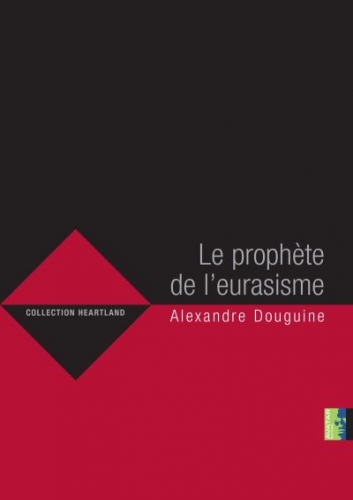
Comment l'Occident peut-il surmonter la modernité ? Une question d'identité
Comme l'Occident ne fait aucun effort pour respecter les spécificités culturelles et les particularités des autres civilisations, mais qu'il cherche au contraire à les niveler par l'universalisme occidental - sans doute le plus visible aujourd'hui avec le libéralisme "branché" 2.0 du Great Reset - Douguine appelle à un soulèvement des civilisations et à un "Grand Réveil" contre l'hégémonie occidentale. Comme nous l'avons vu dans ses écrits sur le Grand Remplacement et la Quatrième Théorie Politique, cela ne s'accompagne pas chez Douguine d'une haine de la culture occidentale en tant que telle, mais seulement d'un rejet de l'Occident moderne, alors qu'il respecte profondément la tradition médiévale et antique de l'Europe occidentale, par exemple. Le modèle identitaire tripartite que le philosophe et ethnosociologue russe présente à propos des États-Unis est également intéressant à ce stade : 1) L'identité diffuse. Douguine entend par là un vague sentiment d'appartenance commune qui est confus, incertain et faible. L'identité diffuse ne se manifeste que dans des situations extrêmes, telles que les guerres, les révolutions et les catastrophes naturelles. 2) L'identité extrême. Elle représente une identité arbitraire et artificielle qui devient une idéologie. Le nationalisme ou l'identité de classe ou cosmopolite en sont des exemples. Alors qu'elle met souvent l'accent sur certaines caractéristiques de l'identité diffuse, elle en laisse d'autres de côté et en constitue une caricature. 3) L'identité profonde, qui se cache sous l'identité diffuse. Elle fait d'un peuple un peuple et en est le fondement. Le peuple n'est pas constitué du présent, mais se déplace du passé vers le futur au niveau de sa langue, de sa culture et de sa tradition. L'identité profonde représente le tout qui se déroule à la fois dans le temps et dans l'espace, c'est l'homme en tant qu'existence. Citant l'ethnologue allemand Leo Frobenius, Douguine note à ce stade que la culture est la terre qui se manifeste à travers l'homme. Alors que les Européens disposent toujours de leur identité profonde, les États-Unis sont confrontés au problème qu'ils ont été créés à l'origine sur une tabula rasa culturelle en Amérique du Nord pour réaliser l'utopie de la modernité. Les États-Unis ont été construits en négligeant le sol qui appartenait en fait aux Indiens. Ainsi, dès le départ, les États-Unis étaient une société hautement mobile de nomades se déplaçant à la surface d'un espace presque inexistant. Le système des deux partis, les démocrates et les républicains, résume leur identité diffuse, qui oscille autour des vecteurs de la liberté, du libéralisme, de l'individualisme et du progrès.
Trois possibilités pour les Américains de trouver leur identité profonde
En conséquence, Douguine voit trois possibilités pour les États-Unis : 1) Le retour à l'identité européenne. N'ayant pas de sol propre, les Américains peuvent se débarrasser de leur identité moderne et considérer leur situation dans le sens d'un autre camp existentiel du point de vue de la matrice-mère qu'est l'Europe. Cela signifierait pour les Américains d'origine européenne l'âge adulte d'une existence authentique au sens de Martin Heidegger. 2) L'Américain reste américain, mais cherche son identité dans le sens du logos américain individualiste. Cela le conduit, dans l'esprit du protestantisme, à ce que l'individu, manquant d'enracinement, cherche ses racines dans le ciel sous la forme d'un Dieu individuel qui lui est propre et qu'il doit se créer lui-même, librement, selon Friedrich Nietzsche. Les nombreuses sectes protestantes aux États-Unis peuvent être considérées comme un exemple de la recherche de Dieu par l'individu. C'est à travers elles que l'individu de l'époque moderne trouve sa profondeur. Enfin, 3) la voie de l'existentialisme américain, la préoccupation individuelle pour la mort, rendue possible par le fait que la société rend l'individu libre de tout, mais aussi libre pour le néant. C'est en s'occupant de sa propre fin que l'on peut finalement éveiller le contenu de son être.
Une lecture fascinante, importante pour la compréhension de l'eurasisme et du monde multipolaire
Dans l'ensemble, "Mission eurasienne" d'Alexandre Douguine est une lecture fascinante qui permet de mieux comprendre l'eurasisme et le monde multipolaire qui se dessine. Compte tenu des perspectives que l'eurasisme offre à l'Allemagne et à l'Europe, nous espérons qu'il sera souvent lu et encore plus souvent discuté. L'Allemagne et l'Europe ont besoin d'alternatives au transatlantisme qui s'effondre - ce livre peut en fournir une.
Le livre est disponible aux éditions Arktos (https://arktos.com/product/eurasische-mission/).
Notes:
[1] 1890 - 1938, linguiste russe, historien et fondateur de la morphophonologie. Un des leaders du mouvement eurasien, connu pour son livre "L'Europe et l'humanité".
[2] 1895 - 1968, co-fondateur du Mouvement Eurasien, économiste et géographe. A combattu le communisme aux côtés du général Wrangel pendant la guerre civile russe.
[3] 1912 - 1992, historien et ethnologue soviétique. A rejeté la thèse du joug mongol en ce qui concerne l'histoire russe et a évalué positivement la symbiose entre les Russes et les peuples turcs comme les Mongols.
[4] Le terme "vassal" désignait à l'origine l'engagement volontaire d'un homme à servir son seigneur, son duc ou son prince, c'est-à-dire l'expression d'une loyauté et d'un soutien mutuel, tout comme le principe de suzeraineté. Aujourd'hui, le terme "vassalité" a plutôt une connotation négative et désigne une sorte de lien involontaire entre un pays et un autre plus puissant. (NDLR)
[5] Douguine lui-même fait une distinction entre les deux concepts et leurs sujets respectifs - l'État pour le fascisme, la race pour le nazisme), mais reconnaît leur matrice idéologique commune faite de nationalisme, de militarisme, de collectivisme et de culte du chef.
22:44 Publié dans Actualité, Eurasisme, Géopolitique, Livre, Livre, Nouvelle Droite | Lien permanent | Commentaires (0) | Tags : actualité, alexandre douguine, russie, eurasie, eurasisme, géopolitique, livre, nouvelle droite, nouvelle droite russe |  |
|  del.icio.us |
del.icio.us |  |
|  Digg |
Digg | ![]() Facebook
Facebook
lundi, 12 septembre 2022
L'alternative eurasienne: la vision d'Alexandre Douguine pour l'ère post-américaine
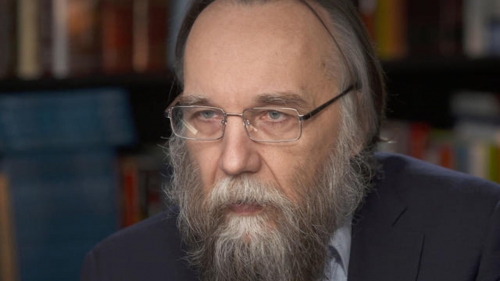
L'alternative eurasienne
Lectures à méditer : la vision d'Alexandre Douguine pour l'ère post-américaine
A propos de l'édition allemande de "Mission Eurasie"
Karl Richter
Il y a quelques semaines, le journaliste, philosophe et géopoliticien russe Alexandre Douguine s'est brièvement retrouvé sous les feux de l'actualité dans son pays, lorsque sa fille Daria a été victime d'un attentat à la bombe non loin de Moscou en août.
Dans ce contexte, les médias occidentaux ont qualifié à plusieurs reprises Douguine, né en 1962, d'homme qui murmure à l'oreille des puissants, voire qui serait le "cerveau de Poutine" ("Putin's brain"). C'est sans aucun doute exagéré. Ce qui est vrai, c'est que Douguine, qui s'était déjà fait un nom dans la Russie post-soviétique dans les années 1990 en tant que penseur patriotique et révolutionnaire, était au tournant du millénaire le conseiller de Gennady Selesnov, alors porte-parole de la Douma.
Dans les années qui ont suivi la fin de l'Union soviétique, il a été l'un des premiers à évoquer le concept d'un ordre mondial "multipolaire" comme alternative au "One World" dominé par les États-Unis, concept que la politique étrangère russe a également adopté à l'époque. Au fil des années, Douguine a élargi son approche à la philosophie, voire à la spiritualité, et il est considéré aujourd'hui en Russie comme un éminent inspirateur d'idées. Il est également vrai que la politique étrangère russe suit depuis quelques années un cours de plus en plus "impérial", qui tient compte des nécessités géopolitiques. Douguine, qui a publié une douzaine de livres et d'innombrables articles dans des revues depuis les années 1990, a sans aucun doute contribué à cette évolution.
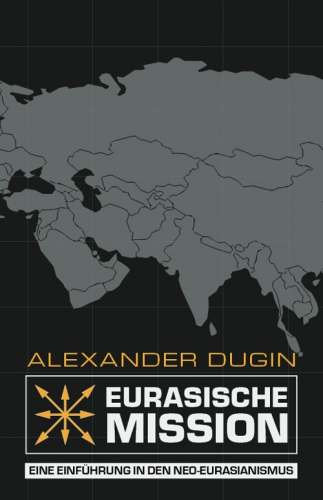
Son dernier livre, intitulé Eurasische Mission, vient de paraître en traduction allemande et se veut une "introduction au néo-eurasisme". Il est déjà clair que l'"eurasisme" ou la "pensée eurasienne" n'est pas vraiment une nouveauté. Douguine fait référence à une poignée de penseurs et de scientifiques russes du siècle dernier comme étant ses fondateurs, tels le philologue et linguiste Nikolai S. Troubetskoï (1890 - 1938), l'historien Lev Nikolaevitch Gumilev (1912 - 1992) ou l'historien de la culture et philosophe Ivan A. Ilyine (1893 - 1954) ; ce dernier a été honoré il y a des années par Poutine lors d'une petite cérémonie ; il est considéré comme une sorte de "philosophe maison" par le chef du Kremlin.
Selon Douguine, l'eurasisme a été formulé très tôt comme une idée reflétant les origines "multiculturelles" et supranationales de la Russie, c'est-à-dire l'oblitération par les Mongols et les Tatars pendant des siècles. L'idée eurasienne est donc également en certaine contradiction avec le concept de nationalisme occidental et bourgeois: "Cette originalité de la culture et de l'État russes (qui présente des traits à la fois européens et asiatiques) définit (...) la voie historique particulière de la Russie et son programme national et étatique, qui ne coïncide pas avec celui de la tradition d'Europe occidentale".
D'un autre côté, cela représente une grande chance, surtout aujourd'hui: car l'idée eurasienne montre une voie praticable pour que de grands espaces culturels et géographiques puissent trouver un ordre intérieur pacifique, fondé sur le respect et la diversité, même sans guerres d'extermination (USA!) ni nivellement culturel (One World!).
C'est la thèse centrale de Douguine : si le monde veut survivre à l'effondrement inévitable de l'ordre mondial américano-capitaliste, il doit se mettre d'accord sur un contre-projet radical qui permette fondamentalement une coexistence pacifique: "Le mouvement eurasianiste est un lieu de dialogue multilatéral égalitaire pour des sujets souverains. (...) Nous devons unir nos efforts pour dessiner une carte accessible pour les peuples d'Eurasie pour le nouveau millénaire".
Remarquable : même l'UE, avec sa tendance à la formation d'États supranationaux, semble utile dans cette voie - elle pourrait contribuer à ce que l'Europe retrouve un rôle autonome, indépendant des États-Unis, dans son propre environnement géopolitique.
Mais en fin de compte, Douguine ne se fait pas d'illusions : il n'y aura pas de coexistence pacifique avec l'hégémon mondial américain. Car celui-ci, suivant sa logique capitaliste libérale, ne tolère pas de cultures, de peuples et d'espaces économiques autonomes à côté de lui. Les États-Unis sont le "pays du mal absolu". "L'empire américain devrait être détruit, et tôt ou tard, il le sera".
 Face au cancer de la mondialisation occidentale, le contre-projet "eurasiatique" a la fonction d'un message révolutionnaire qui peut encore tout changer pour le mieux à la douzième heure : "L'idée eurasiatique est un concept révolutionnaire au niveau mondial qui doit servir de nouvelle plate-forme de compréhension mutuelle et de coopération pour un grand conglomérat de puissances différentes : États, nations, cultures et religions qui rejettent la version atlantiste de la mondialisation".
Face au cancer de la mondialisation occidentale, le contre-projet "eurasiatique" a la fonction d'un message révolutionnaire qui peut encore tout changer pour le mieux à la douzième heure : "L'idée eurasiatique est un concept révolutionnaire au niveau mondial qui doit servir de nouvelle plate-forme de compréhension mutuelle et de coopération pour un grand conglomérat de puissances différentes : États, nations, cultures et religions qui rejettent la version atlantiste de la mondialisation".
La guerre en Ukraine, que Douguine voit comme une conséquence inévitable des provocations atlantistes continues, n'a fait qu'accélérer cette évolution. La guerre se joue en fin de compte sur le visage futur du monde. Douguine ne cache pas que la Russie est ici "destinée à prendre la tête d'une nouvelle alternative globale, eurasienne, à la vision occidentale de l'avenir du monde".
Pour certains lecteurs de "droite", tout cela est très fort de tabac - d'autant plus que Douguine déclare explicitement que l'État-nation classique est dépassé. Les droitiers occidentaux peuvent ne pas être d'accord. D'un autre côté, l'Allemagne dispose, avec le Saint Empire romain germanique, d'une vision d'empire vieille de plusieurs siècles, qui présente de nombreux points communs avec le concept eurasien de Douguine.
Au final, son livre - dont Constantin von Hoffmeister a assuré une traduction fluide et agréable - est une lecture captivante et inspirante pour tous ceux qui en ont assez de l'Occident, de l'OTAN, des gay prides et de l'obsession du genre. Certes, Douguine n'est pas un "homme de droite", encore moins un "nationaliste". Mais c'est un penseur visionnaire du 21ème siècle. Tout porte à croire qu'il aura raison. L'ère "multipolaire" n'en est qu'à ses débuts.
Karl Richter
20:39 Publié dans Actualité, Eurasisme, Géopolitique, Livre, Livre, Nouvelle Droite | Lien permanent | Commentaires (0) | Tags : actualité, politique internationale, eurasisme, géopolitique, alexandre douguine, nouvelle droite, nouvelle droite russe, russie, livre |  |
|  del.icio.us |
del.icio.us |  |
|  Digg |
Digg | ![]() Facebook
Facebook
vendredi, 09 septembre 2022
Le peuple russe en tant que force d'intégration

Le peuple russe en tant que force d'intégration
Miklós Kewehazy & Karoj Lorant
Source: https://www.geopolitika.ru/article/russkiy-narod-kak-integriruyushchaya-sila
Les idées de Zbigniew Brzezinski sur la géopolitique dans son livre "Le grand échiquier" représentent une réorganisation du monde d'un point de vue américain ou, peut-être plus précisément, atlantiste, avec la possibilité de défendre aussi les intérêts américains.
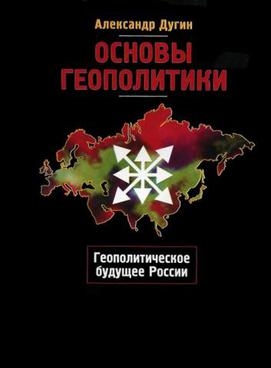 À l'opposé se trouve le livre d'Alexandre Douguine, Foundations of Geopolitics, et les opinions qui y sont exprimées sur les intérêts nationaux de la Russie. La présentation du livre de Douguine et de ses vues sur les intérêts géopolitiques de la Russie devient pertinente en raison de la tragédie de sa famille, l'assassinat planifié de sa fille.
À l'opposé se trouve le livre d'Alexandre Douguine, Foundations of Geopolitics, et les opinions qui y sont exprimées sur les intérêts nationaux de la Russie. La présentation du livre de Douguine et de ses vues sur les intérêts géopolitiques de la Russie devient pertinente en raison de la tragédie de sa famille, l'assassinat planifié de sa fille.
Pour qu'un pays ou une nation ait des intérêts géopolitiques, il est important qu'il/elle dispose d'une puissance économique et militaire adéquate, sans laquelle il ne peut évidemment pas intervenir dans les questions géopolitiques, en recherchant une plus grande influence géopolitique. Cependant, on ne peut pas dire que cette situation soit particulièrement avantageuse pour le pays en question, car elle peut souvent entraîner la destruction de ce pays, comme le prouvent les exemples de la guerre en Corée, au Vietnam et maintenant en Ukraine.
Les intérêts géopolitiques peuvent être détenus non seulement par de grands pays, mais aussi par des groupes de pays unis selon certaines lignes, et même par des entités "super-étatiques". Douguine, par exemple, lorsqu'il évoque les intérêts nationaux russes, considère que son principal adversaire n'est pas l'Amérique, mais l'Alliance atlantique des États, qui est un concept bien plus large que les États-Unis eux-mêmes.
En effet, en ce qui concerne la fin de la guerre en Ukraine, il est très intéressant de savoir qui est l'autre partie du conflit ? Les États-Unis en tant qu'État-nation ? Les puissances anglo-saxonnes ? L'OTAN en tant qu'organisation ? Ou une "force d'arrière-plan euro-atlantique" qui plane sur tout cela ?
En outre, l'Europe peut avoir des intérêts géopolitiques en Europe (Alexandre Douguine suggère également de telles possibilités d'organisation géopolitique), qui diffèrent à la fois des intérêts nationaux américains, de ceux de l'OTAN en tant qu'organisation militaire, et surtout de ceux d'une "puissance de fond euro-atlantique".
Pour l'instant, cependant, les dirigeants de l'Union européenne et de ses grands États membres sont incapables d'articuler leurs propres intérêts géopolitiques parce qu'ils sont essentiellement les serviteurs de cette puissance de fond euro-atlantique, et là où ils ont encore leurs propres choix (politique énergétique), ils deviennent bien plus les fossoyeurs de l'Europe que les défenseurs des intérêts européens.
Contrairement à Brzezinski, par exemple, qui représentait principalement les intérêts atlantiques plutôt qu'américains dans ses exposés géopolitiques, Douguine est un véritable patriote russe, et sa réflexion se concentre sur les intérêts de la nation russe, ses spécificités culturelles et le rôle des Russes dans l'intégration de la région eurasienne.
Environ la moitié des huit chapitres de son livre Geopolitical Analysis, y compris une discussion et une évaluation des idées de ses autres collègues, sont consacrés à la situation géopolitique de la Russie et à ses relations potentielles.
Selon Douguine (à l'époque où son livre a été écrit, c'est-à-dire au milieu des années 1990), il y a deux directions en Russie concernant l'avenir du pays.

La première est celle des libéraux radicaux, ou réformateurs, qui prennent pour exemple la société occidentale, le système capitaliste moderne, et acceptent pleinement la vision de Francis Fukuyama sur la fin de l'histoire, c'est-à-dire la victoire finale du capitalisme libéral. Cette tendance nie les valeurs telles que la nation, l'histoire, les intérêts géopolitiques, la justice sociale, tout est basé sur l'efficacité économique maximale, l'individualisme, le principe de la primauté de la consommation et le marché libre.
Selon lui, à la place de la Russie, les libéraux veulent construire une nouvelle société qui n'a jamais existé historiquement, dominée par les règles économiques et les attitudes culturelles qui régissent aujourd'hui l'Occident et surtout les États-Unis. En utilisant la terminologie libérale occidentale et les normes juridiques, ce camp libéral peut facilement répondre à tout problème de la réalité russe. Pendant longtemps, cette position a été presque la seule à dominer sur le plan idéologique, principalement parce qu'elle coïncidait généralement avec l'orientation générale des réformes libérales.
Un autre système de vues sur l'avenir de la Russie est le programme de la soi-disant opposition nationale-patriotique. Ce camp est très diversifié, et ses membres sont seulement unis par leur aversion pour les réformes libérales et leur aversion pour la logique libérale prônée par les réformateurs. Cette opposition n'est pas seulement nationale et patriotique, mais aussi "rose et blanche", c'est-à-dire qu'elle se compose de communistes qui rejettent les dogmes rigides du marxisme-léninisme et de partisans de la monarchie orthodoxe, de l'État de type tsariste.
Par conséquent, Alexandre Douguine appelle cette tendance la tendance soviéto-tsariste et affirme que leur système de vues est basé sur des archétypes idéologiques, géopolitiques, politico-sociaux et administratifs, qui tentent de se rapprocher des périodes soviétique et tsariste pré-soviétique.
Selon Douguine, l'idéologie de ces patriotes est beaucoup plus contradictoire et confuse que les constructions logiques et fermées des libéraux, de sorte qu'elle apparaît souvent non pas comme un concept ou une doctrine cohérente, mais fragmentée, au niveau de l'émotion, et plutôt incohérente.
Dugin rejette les deux tendances politiques et affirme qu'elles seraient une impasse pour le peuple russe. La tendance libérale entraînerait l'élimination progressive des caractéristiques nationales russes et signifierait la fin de l'histoire pour les Russes, tandis que la tendance soviéto-tsariste tenterait de faire revivre la nation et l'État dans les formes et structures historiques mêmes qui ont en fait conduit à leur dégradation progressive et à leur effondrement final.
Il y a donc un besoin urgent d'une troisième voie, d'un concept idéologique spécifique qui n'est pas un compromis entre le libéralisme des réformistes et le soviéto-tsarisme de l'"opposition unie", mais qui rompt avec la logique de la dualité "libéraux/opposition" et crée une véritable alternative aux deux, basée sur les spécificités et les intérêts de la nation russe.
Selon Douguine, le peuple russe est une communauté historique, ethniquement, culturellement, spirituellement et religieusement unie, porteuse d'une civilisation unique, qui a joué un rôle crucial dans la création non pas d'un mais de plusieurs États, de la mosaïque des anciennes principautés slaves à Moscou-Russie, l'Empire de Pierre le Grand et l'Union soviétique.
La continuité entre les différentes entités a été assurée par le peuple russe, qui ne s'est pas contenté de suivre les lignes ethniques, mais a exprimé en lui une idée de civilisation particulière et indépendante, différente de tout autre. La nation russe n'a pas été créée par l'État, mais par la nation russe. Le peuple russe a expérimenté différents types de systèmes étatiques au cours de l'histoire. Tout ceci justifie de placer le peuple russe et ses intérêts au cœur du développement du concept géopolitique.
Par conséquent, Alexandre Douguine considère le peuple russe comme une force d'intégration, capable d'unir d'autres peuples, et c'est sa vocation dans la région eurasienne. Les formations que cette alliance pourrait signifier, selon Douguine, nous les présenterons dans les articles suivants, en indiquant également les points de vue de Brzezinski, qui représente le pôle opposé. Ensemble, ces deux concepts jettent davantage de lumière sur le contexte de la guerre actuelle et croissante en Ukraine.
Nous constatons que les géopoliticiens tels que Douguine et Brzezinski dessinent et déchiffrent facilement des cartes, mais nous ne savons pas encore ce que leur mise en œuvre implique habituellement. Pourtant, il ne faut pas les condamner pour autant, car la prise en compte des facteurs dont traite la géopolitique peut également contribuer à l'établissement d'une coopération pacifique dans de grandes régions.
23:59 Publié dans Actualité, Affaires européennes, Nouvelle Droite | Lien permanent | Commentaires (0) | Tags : russie, europe, affaires européennes, alexandre douguine, nouvelle droite, nouvelle droite russe |  |
|  del.icio.us |
del.icio.us |  |
|  Digg |
Digg | ![]() Facebook
Facebook
lundi, 29 août 2022
Sur la piste de Douguine, un sombre génie ou le philosophe qui a inspiré Poutine ?
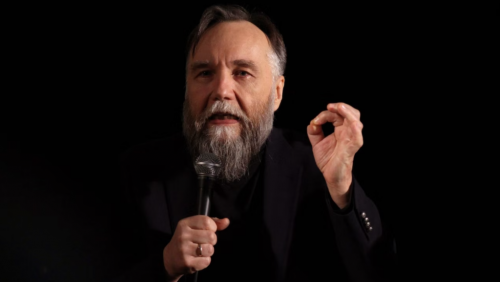
Sur la piste de Douguine, un sombre génie ou le philosophe qui a inspiré Poutine ?
Yesurún Moreno
Source: https://www.vozpopuli.com/altavoz/cultura/detras-aleksandr-dugin-genio-tenebroso-filosofo-inspiro-putin.html
Comment les médias grand public ont élevé un professeur d'université au rang de philosophe du régime de Poutine, le transformant en son Raspoutine personnel.
Hier soir, un fait dramatique a fait la une des principaux journaux. Darya Dugina, fille du penseur russe Aleksandr Dugin, a été la victime fatale d'une tentative d'assassinat, visant apparemment son père. Selon les médias russes, un engin explosif contenant une importante charge de TNT avait été placé sous le siège de sa voiture. Bien sûr, les champions de la liberté, de la démocratie et du progrès s'empressent de justifier cette action, puisque Darya était soi-disant une "militante d'extrême droite". Nombre de journalistes, d'animateurs de talk-show et d'intellectuels de cette pléiade d'égarés et de ventres reconnaissants arboreront bien sûr le drapeau de l'antifascisme, même s'ils oublient qu'au sein de la Première Internationale, la faction anarchiste a été expulsée pour sa défense de l'action directe, de la violence armée et du terrorisme comme outils politiques. Tout ne se passe pas comme prévu... Les mêmes personnes qui s'arrachaient les cheveux à propos de l'empoisonnement présumé de l'opposant Navalny par Poutine se frottent maintenant les mains devant l'occasion fournie par la mort d'une jeune femme d'à peine 30 ans pour se vanter de leur infantilisme et de leurs enfants terribles... Pour l'instant, on ne peut que spéculer sur le cerveau, et en parlant de cerveau, je me concentrerai sur le cerveau présumé de l'échafaudage théorique de Poutine, le père de Darya.
Depuis le début de la guerre en Ukraine, des rivières d'encre coulent sur la figure et la pensée d'Alexandre Douguine. La vérité est que beaucoup - par sympathie ou carrément par antipathie - aiment à croire qu'il est le gourou de l'ombre de Poutine, celui qui murmure à l'oreille du tsar moderne. En bref, Douguine a été caractérisé comme un génie du mal dans le poing et la plume duquel l'avenir de la nation russe est contenu.
Mais qui est vraiment Aleksandr Douguine ? Moscovite de naissance, il est le fils d'un colonel-général du renseignement militaire soviétique et d'un médecin. Penseur, philosophe et théoricien de la géopolitique, il est actuellement le principal représentant de ce qu'on appelle l'eurasisme. Pour ceux qui ne connaissent pas le terme, l'eurasisme est une doctrine philosophico-politique ayant des répercussions géopolitiques, selon laquelle la Terre est divisée en grandes civilisations dont la centralité réside principalement dans deux pôles antagonistes : le monde insulaire (les États-Unis, la Grande-Bretagne et le Commonwealth, c'est-à-dire les puissances thalassocratiques qui déploient leur pouvoir par la mer) et la civilisation orthodoxe ou eurasienne (les États de l'ex-URSS, l'Europe de l'Est et certaines parties de l'Europe du Sud). Fortement influencé par l'œuvre de Carl Schmitt, en particulier les textes Terre et Mer (1942) et Le Nomos de la Terre (1950) et, dans un certain sens, influencé par Le Choc des civilisations (Huntington, 1996), Douguine propose une coexistence inter-civilisationnelle harmonieuse. Dans ses Fondements de la géopolitique (1977), il dira : "Le monde multipolaire ne considère pas la souveraineté des États-nations existants comme une vache sacrée, car cette souveraineté repose sur une base purement juridique et n'est pas soutenue par un potentiel politique et militaire suffisamment fort (...) seul un bloc ou une coalition d'États peut revendiquer une véritable souveraineté". D'une certaine manière, Douguine renverse la logique de l'"endiguement" (hégémonique dans toute la politique étrangère américaine du 20ème et, avec Biden, du 21ème siècle) et tente de pousser jusqu'à ses ultimes conséquences l'affirmation du père de la géopolitique moderne Halford John McKinder selon laquelle : "Celui qui gouverne l'Europe de l'Est gouvernera le Heartland ; celui qui gouverne le Heartland gouvernera l'Île-monde ; celui qui gouverne l'Île-monde gouvernera le monde". Dugin a indubitablement créé une école, et tant lui que ses exécuteurs testamentaires savent clairement à quoi ils s'opposent et qui est leur ennemi en termes schmittiens. À tel point que dans l'un de ses textes de jeunesse Russia : The Mysteries of Eurasia, il argumente avec force : "L'Amérique incarne la fin du monde (...) la terre de pèlerinage des âmes défuntes (...) former une alliance sacrée avec les pays et nations de l'Est qui luttent pour l'autarcie géopolitique et la restauration des valeurs traditionnelles contre le monde moderne et l'atlantisme, l'agression américaine [est notre objectif]". Le mythe du progrès technique, le positivisme kelsénien, le libéralisme politique, le principe de l'individualisme comme solvant social et les démocraties bourgeoises décadentes, bref, l'ordre mondial sorti triomphant de la Seconde Guerre mondiale (que, dans sa version la plus néfaste, nous appelons habituellement le mondialisme) sont les pierres d'achoppement de l'harmonie qu'il cherche à esquisser dans ses ouvrages. Cette vision quelque peu dérangeante du canon académique se heurte au langage candide (et non moins perfide) des universitaires de Berkeley et Stanford pour qui toutes les cultures doivent être tolérées, toutes les cultures doivent être moins eurocentriques (tant que la culture à protéger est celle de l'inoffensive Pachamama), mais jamais, en aucun cas, celle de leurs véritables rivaux géopolitiques, à savoir le monde islamique, la civilisation chinoise et le panslavisme russe. Cependant, il est curieux de voir comment ces progressistes qui ont étudié dans les universités les plus progressistes du monde, sous leur maquillage inclusif, se révèlent beaucoup moins respectueux et plus anglocentriques que des auteurs comme Douguine lui-même, Alain de Benoist, Denis Collin, Diego Fusaro, Adriano Erriguel, entre autres, qui ne demandent que le respect de leurs idiosyncrasies culturelles et nationales. Cette entente conservatrice a reçu diverses étiquettes (certaines plus indulgentes que d'autres) : "Nouvelle droite", "Populisme", "Nazbol", bien que Douguine lui-même parle d'une "Quatrième théorie politique" comme une sorte de synthèse qui surmonte les théories hégémoniques précédentes, à savoir : (i) le libéralisme ; (ii) le communisme ; (iii) le fascisme.
Le philosophe russe a dirigé l'organisation de divers partis politiques de nature minoritaire et subversive, ainsi qu'une activité intense à l'intersection entre théorie et praxis. Après un rêve raté de devenir aviateur, il étudie la philosophie et passe un doctorat en sociologie et en sciences politiques. Il devient professeur de sociologie des relations internationales à l'université Lomonosov de Moscou. Lié dans sa jeunesse à l'ésotérisme fasciste de Julius Evola, il a évolué dans son itinéraire intellectuel vers des positions traditionalistes. En fait, il a déclaré sans équivoque : "Je ne suis pas un nationaliste, mais un traditionaliste", ce qui est étroitement lié aux graves paroles de Donoso Cortés dans son Discours sur la situation de l'Espagne en 1850 : "Je représente quelque chose de plus que cela ; je représente beaucoup plus que cela ; je représente la tradition, grâce à laquelle les nations sont ce qu'elles sont dans toute l'étendue des siècles. Si ma voix a quelque autorité, ce n'est pas, messieurs, parce qu'elle est la mienne ; elle en a parce que c'est la voix de vos pères". Bien sûr, il est indéniable qu'il y a des échos et des résonances des idées conservatrices de Douguine dans le gouvernement de Poutine, mais cela ne signifie pas que nous sommes en mesure de voir une tutelle idéologique claire telle qu'elle est habituellement présentée dans les médias.
 S'il est vrai que ses Fondements de la géopolitique (1977) sont enseignés à l'Académie navale russe et sont considérés comme un manuel de base, il n'en est pas moins vrai que les relations entre le président et le philosophe ne sont pas entièrement cordiales. Comme l'explique Edgar Straehle dans son brillant article "Power and Philosophy : The Other Journey of Syracuse", il y a eu un certain nombre de désaccords entre les deux personnages qui manifestent une animosité mutuelle. Straehle donne quelques exemples : la recommandation de Poutine aux hauts dirigeants de son administration de lire les plus grandes œuvres de la pensée russe telles que celles de Soloviev, Berdiayev ou Ilyin en 2013 (parmi lesquelles, celle de Douguine était introuvable). (Je compléterais affectueusement cet exemple par une autre anecdote. Cela s'est produit plus tard en 2016, lorsque pour le Nouvel An, Poutine a décidé d'envoyer en cadeau une anthologie de ses discours de quelque 400 pages à 1000 travailleurs publics et hauts fonctionnaires. D'où l'on peut déduire - ahem ! que Poutine préfère envoyer un livre de lui-même plutôt qu'un essai de l'idéologue dont question, de celui qui serait le génie du mal et comploterait en coulisse le destin de la Grande Russie) ; la défense publique par Poutine d'auteurs tels qu'Ivan Ilyin, Aleksandr Solzhenitsyn ou Leo Gumilev (et non Douguine) ; le renvoi abrupt de Douguine de sa chaire à l'Université d'État de Moscou en juin 2014 ; ainsi que la publication controversée du livre Poutine contre Poutine dans lequel Douguine - bien qu'il fasse l'effort de reconnaître les aspects positifs de Poutine -, jette l'opprobre sur son "court-termisme", son pragmatisme et sa maladresse géopolitique.
S'il est vrai que ses Fondements de la géopolitique (1977) sont enseignés à l'Académie navale russe et sont considérés comme un manuel de base, il n'en est pas moins vrai que les relations entre le président et le philosophe ne sont pas entièrement cordiales. Comme l'explique Edgar Straehle dans son brillant article "Power and Philosophy : The Other Journey of Syracuse", il y a eu un certain nombre de désaccords entre les deux personnages qui manifestent une animosité mutuelle. Straehle donne quelques exemples : la recommandation de Poutine aux hauts dirigeants de son administration de lire les plus grandes œuvres de la pensée russe telles que celles de Soloviev, Berdiayev ou Ilyin en 2013 (parmi lesquelles, celle de Douguine était introuvable). (Je compléterais affectueusement cet exemple par une autre anecdote. Cela s'est produit plus tard en 2016, lorsque pour le Nouvel An, Poutine a décidé d'envoyer en cadeau une anthologie de ses discours de quelque 400 pages à 1000 travailleurs publics et hauts fonctionnaires. D'où l'on peut déduire - ahem ! que Poutine préfère envoyer un livre de lui-même plutôt qu'un essai de l'idéologue dont question, de celui qui serait le génie du mal et comploterait en coulisse le destin de la Grande Russie) ; la défense publique par Poutine d'auteurs tels qu'Ivan Ilyin, Aleksandr Solzhenitsyn ou Leo Gumilev (et non Douguine) ; le renvoi abrupt de Douguine de sa chaire à l'Université d'État de Moscou en juin 2014 ; ainsi que la publication controversée du livre Poutine contre Poutine dans lequel Douguine - bien qu'il fasse l'effort de reconnaître les aspects positifs de Poutine -, jette l'opprobre sur son "court-termisme", son pragmatisme et sa maladresse géopolitique.

De même, Straehle, dans un exercice d'érudition, évoque une anecdote historique survenue dans le contexte de la Révolution française dans laquelle "le député Lakanal aurait proclamé en 1793 que 'ce n'est pas le Contrat social qui nous a expliqué la Révolution, c'est la Révolution qui nous a expliqué le Contrat social'". Il en tire la conclusion qu'en certaines occasions et "paradoxalement, ce ne serait pas alors le passé qui expliquerait le présent, mais l'inverse". En ce sens, nous pourrions bien affirmer que les questions qui sont tant à l'ordre du jour, telles que le déclenchement de la guerre en Ukraine, la déflation de la puissance de l'omnipotent empire américain, ainsi que l'avènement d'un Nouvel Ordre Mondial multipolaire, s'efforcent - par le biais des faits - de consacrer les intuitions et les avertissements du philosophe Douguine. En d'autres termes, paradoxalement, ce n'est pas la chute du mur de Berlin qui explique le présent de la Russie, mais l'œuvre très actuelle de Douguine qui explique le rôle de la Russie dans le monde. Peut-être convient-il, avec Straehle encore, d'accepter que "plutôt que de se demander qui peut bien être le philosophe de Poutine (...) il faut observer comment la politique du leader russe a été caractérisée par une utilisation sélective des héritages de cette pluralité de référents". Personne ne conteste que Poutine, un homme plus instruit que le dirigeant moyen à l'Ouest, ait pu lire Douguine, mais cela n'implique pas que chaque décision politique soit évaluée et scrutée préalablement par le philosophe. Cette manie que nous avons de chercher le gourou dans l'ombre de tel ou tel dirigeant répond davantage aux produits culturels hollywoodiens, aux séries, films et documentaires qui ont profondément marqué notre compréhension de la politique en tant qu'intrigue. Je pense aux dégâts causés par House of Cards, L'aile ouest de la Maison Blanche, L'affaire Sloane, Vice ou Steve Bannon, le grand manipulateur.
Contre ce soupçon infondé, et au lieu de présenter Douguine comme un génie du mal, je préfère le voir comme un "génie sombre".
 Comme vous le savez peut-être, Stefan Zweig consacre une biographie politique intitulée Fouché : The Dark Genius à Fouché, un homme politique français de la fin du 18ème siècle qui a survécu aux bouleversements politiques de la période révolutionnaire et a réussi à rester indemne à travers chaque changement de régime, de l'auto-proclamation du Tiers État au coup d'État de Napoléon en passant par le Directoire et la Terreur jacobine. Louis Lambert écrit à propos de Napoléon : "Son génie particulier, écrit-il, qui causait à Napoléon une sorte de crainte, ne s'est pas manifesté d'un seul coup. Ce membre inconnu de la Convention, l'un des hommes les plus extraordinaires et en même temps les plus faussement jugés de son temps, a commencé sa future personnalité dans des moments de crise. Sous le Directoire, il s'est élevé à la hauteur d'où les hommes d'esprit profond savent prévoir l'avenir, en jugeant le passé avec justesse ; puis, tout à coup - comme certains comédiens médiocres qui deviennent d'excellents acteurs par une inspiration instantanée - il a donné la preuve de son habileté lors du coup d'État du 18 Brumaire. Cet homme au visage pâle, éduqué sous une discipline conventuelle, qui connaissait tous les secrets du parti montagnard, auquel il avait d'abord appartenu, comme ceux du parti royaliste, auquel il s'était finalement rallié ; qui avait lentement et furtivement étudié les hommes, les choses et les pratiques de la scène politique, s'empara de l'esprit de Bonaparte, lui prodiguant d'utiles conseils et lui fournissant de précieux rapports..... Ni ses collègues de l'époque ni ceux du passé n'auraient pu imaginer l'étendue de son génie, qui était avant tout le génie d'un homme de gouvernement, qui devinait juste dans toutes ses prédictions avec une incroyable perspicacité". Pourquoi ai-je choisi cette analogie ? Tout d'abord, parce que nous ne savons rien ou presque de la vie et de l'œuvre du philosophe russe, et que le présenter comme obscur, énigmatique et excentrique nous aide à le voir comme un personnage abominable et abject. D'autre part, parce que ses idées perdureront après sa mort et que son héritage théorique et intellectuel transcendera tout gouvernement fallacieux, Poutine et ses successeurs tomberont, mais les idées sont parfois écrites dans les pages de l'histoire avec une encre indélébile.
Comme vous le savez peut-être, Stefan Zweig consacre une biographie politique intitulée Fouché : The Dark Genius à Fouché, un homme politique français de la fin du 18ème siècle qui a survécu aux bouleversements politiques de la période révolutionnaire et a réussi à rester indemne à travers chaque changement de régime, de l'auto-proclamation du Tiers État au coup d'État de Napoléon en passant par le Directoire et la Terreur jacobine. Louis Lambert écrit à propos de Napoléon : "Son génie particulier, écrit-il, qui causait à Napoléon une sorte de crainte, ne s'est pas manifesté d'un seul coup. Ce membre inconnu de la Convention, l'un des hommes les plus extraordinaires et en même temps les plus faussement jugés de son temps, a commencé sa future personnalité dans des moments de crise. Sous le Directoire, il s'est élevé à la hauteur d'où les hommes d'esprit profond savent prévoir l'avenir, en jugeant le passé avec justesse ; puis, tout à coup - comme certains comédiens médiocres qui deviennent d'excellents acteurs par une inspiration instantanée - il a donné la preuve de son habileté lors du coup d'État du 18 Brumaire. Cet homme au visage pâle, éduqué sous une discipline conventuelle, qui connaissait tous les secrets du parti montagnard, auquel il avait d'abord appartenu, comme ceux du parti royaliste, auquel il s'était finalement rallié ; qui avait lentement et furtivement étudié les hommes, les choses et les pratiques de la scène politique, s'empara de l'esprit de Bonaparte, lui prodiguant d'utiles conseils et lui fournissant de précieux rapports..... Ni ses collègues de l'époque ni ceux du passé n'auraient pu imaginer l'étendue de son génie, qui était avant tout le génie d'un homme de gouvernement, qui devinait juste dans toutes ses prédictions avec une incroyable perspicacité". Pourquoi ai-je choisi cette analogie ? Tout d'abord, parce que nous ne savons rien ou presque de la vie et de l'œuvre du philosophe russe, et que le présenter comme obscur, énigmatique et excentrique nous aide à le voir comme un personnage abominable et abject. D'autre part, parce que ses idées perdureront après sa mort et que son héritage théorique et intellectuel transcendera tout gouvernement fallacieux, Poutine et ses successeurs tomberont, mais les idées sont parfois écrites dans les pages de l'histoire avec une encre indélébile.
20:59 Publié dans Actualité, Affaires européennes, Nouvelle Droite | Lien permanent | Commentaires (0) | Tags : alexandre douguine, russie, vladimir poutine, actualité, nouvelle droite, nouvelle droite russe, géopolitique |  |
|  del.icio.us |
del.icio.us |  |
|  Digg |
Digg | ![]() Facebook
Facebook
mercredi, 10 août 2022
De l'archéomodernisme à l'empire

De l'archéomodernisme à l'empire
Alexandre Douguine
Source: https://www.geopolitika.ru/es/article/de-la-arqueomodernidad-al-imperio
Mon livre Archaeomodernism, dans lequel je décris ce qu'est ce phénomène en détail, vient d'être réimprimé dans notre pays. On peut dire que la Russie vit sous l'influence de l'archéomodernisme, qui est un processus où la société est divisée entre deux interprétations complètement différentes de la politique, de la culture, de la vie quotidienne, etc... Le phénomène, tel qu'il s'observe en Russie, est que la société, à la base, continue de vivre selon des modèles archaïques pré-modernes tandis que l'État, lui, a adopté des formes modernes occidentalisées. En ce sens, nous pouvons dire que notre constitution, notre organisation politique et notre élite suivent, dans une large mesure, les idées libérales européennes. Le problème est que ces idées fonctionnent en pratique de manière très différente en Russie, car elles sont réinterprétées selon les modèles archaïques propres à notre société. C'est ainsi qu'est née l'archéo-modernité, un système qui est extérieurement moderniste, mais intérieurement archaïque.
Ce processus est tout à fait perceptible dans l'attitude des gens à l'égard du pouvoir : alors qu'en Europe, et surtout depuis Montesquieu et les théoriciens anglais du 18ème, le pouvoir a été dépouillé de tout élément sacré, étant limité par la séparation des pouvoirs et la rotation constante de la classe dirigeante entre les différents organes gouvernementaux - une façon de disperser le pouvoir au sein de la classe oligarchique occidentale qui n'accepte du "sang neuf" dans ses rangs que lorsque ses règles sont suivies -, on ne peut pas appliquer ce schéma à la Russie, car notre pays tend toujours vers l'autoritarisme et l'autocratie. Cela n'est pas tant dû à l'usurpation d'un individu particulier qu'aux exigences de cette même société qui est fondamentalement patriarcale, traditionnelle et voit le dirigeant comme une figure mystique. Ce modèle du dirigeant en tant que Katechon, c'est-à-dire "celui qui retient", a été prôné par tous les théoriciens russes jusqu'en 1917 et trouve son origine au 15ème siècle après la chute de l'Empire byzantin (l'idée de Moscou comme troisième Rome). Cependant, cette idée n'a pas disparu avec l'avènement du communisme et a plutôt vu la montée des "monarques rouges" sous la forme d'un culte quasi-religieux de Lénine et de la divinisation de la figure de Staline. Même une figure comme Eltsine - faible et dépendante des oligarques - a été un jour louée comme un "tsar libéral".
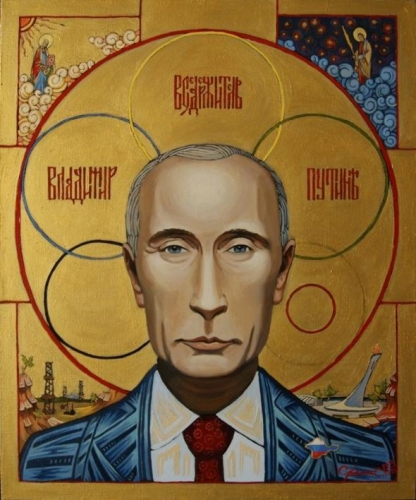
L'arrivée de Poutine a vu l'imposition d'une série de réformes patriotiques et le rétablissement de l'autocratie dans notre pays contre la volonté même de son plus grand promoteur. Il n'est donc pas surprenant que le peuple russe soit prêt à ce que Poutine change la constitution et fasse tout son possible pour transformer le système. Poutine est considéré par le peuple comme le chef suprême et le sauveur de la Russie, une idée très archaïque. Cette idée s'étend aussi à l'Opération militaire spéciale, qui est perçue favorablement par la majorité de la population - l'élite russe, en revanche, la considère très négativement.
Le peuple russe est partisan d'une forme de monarchie populaire qui est incompatible avec les idées de l'élite. La classe dirigeante russe - comme l'a dit à juste titre Pouchkine - est la "seule chose proprement européenne qui existe dans notre pays" et tente donc à maintes reprises de créer une démocratie formelle et moderne (subordonnée aux oligarchies mondialistes du monde), ce qui finit toujours par échouer. Cependant, cette façade occidentaliste et moderne est incapable de changer le noyau conservateur et archaïque de notre peuple, aussi notre oligarchie attend-elle le moment où ce principe s'affaiblira, où un cataclysme se produira qui permettra enfin d'extirper l'identité russo-eurasienne de notre pays une fois pour toutes.
Après tout, l'objectif de la Fédération de Russie, qui a émergé en 1991 des ruines de la Grande Russie (URSS, Empire russe), était de nous moderniser et de nous intégrer dans le liquide de la mondialisation. Ce processus a été réalisé par la force et par la destruction matérielle et spirituelle de notre peuple, bien que cela n'ait pas beaucoup aidé, car notre essence, en dépit de ces efforts, est restée inchangée.
L'archéo-modernité, telle que je la définis, est une maladie, une sorte de schizophrénie sociale où deux façons très différentes et diamétralement opposées de voir les choses coexistent dans la même société. L'élite souhaite voir l'État devenir une démocratie libérale moderne selon les principes occidentaux, tandis que le peuple tente de revenir à l'Empire, aux souverains divins, aux valeurs traditionnelles et au rejet de toute forme de progressisme (LGTBI, féminisme, etc.). Cela génère un conflit d'interprétations (P. Ricoeur) qui finit par imposer toutes sortes de mensonges. Le gouvernement ment sur tout ce qui se passe, générant une sorte de mentalité instable et douloureusement déformée recelant toutes sortes de contradictions. De plus, il ne cherche jamais à concilier le moderne et l'archaïque, c'est pourquoi les élites libérales tentent constamment de détruire les principes archaïques de notre peuple, tandis que les dirigeants - qui sont au-dessus d'eux - finissent par le défendre et s'appuient sur ces principes monarchiques afin de maintenir la stabilité du système. Une fois de plus, ces tiraillements font stagner les choses.
La solution que les élites libérales proposent au dilemme de l'archéo-modernité est simplement la "modernisation", le "progrès" et l'intégration de la Russie à l'Occident. De temps en temps, cependant, les élites libérales russes finissent elles-mêmes par adopter des principes archéo-modernes, comme c'est le cas de Dmitri Medvedev, l'un des plus ardents représentants de l'occidentalisme libéral, qui a autrefois encouragé la modernisation et la démocratisation de notre pays. La réélection de Medvedev à la présidence de la Russie a été soutenue par les atlantistes Biden et Brzezinski. Ce qui est curieux, c'est que cet éminent libéral publie maintenant des slogans ultra-patriotiques et impérialistes sur des réseaux sociaux que même le ministère russe est obligé de censurer ou de considérer que ses "comptes ont été piratés". Mais là n'est pas la question, mais une démonstration de la pratique de l'archéo-modernisme. Bien sûr, cela n'exclut pas le calcul ou la stratégie politique, mais cela confirme notre diagnostic : les dirigeants russes sont toujours contraints de faire appel aux principes archaïques défendus au sein du peuple, qui prônent un pouvoir fort et la justice sociale sous toutes ses formes.
Le problème de l'archéo-modernité réside dans le fait qu'il s'agit d'une impasse où tout est réduit à la modernisation et à l'exploitation cynique de cette condition mentale par les puissants à leurs propres fins, nous forçant à vivre une fausse identité. Cependant, certains de nos penseurs ont proposé une solution à ce problème : au lieu de continuer à penser comme les élites libérales, nous devrions embrasser les principes archaïques de notre société, en reconnaissant l'autocratie, le patriarcat et nos traditions autoritaires non seulement de facto mais de jure. De cette façon, l'Église et les institutions traditionnelles de notre société retrouveront leur position dominante et de cette façon, les tendances traditionnelles vaincront les tendances libérales, même dans les milieux ecclésiastiques.
Tout ceci permettra la mise en œuvre d'une révolution conservatrice et épistémologique dans la science, l'éducation et la pensée. La seule façon d'y parvenir est de détruire l'oligarchie libérale et de prêter allégeance au peuple plutôt qu'à des principes mondiaux abstraits. Cette solution a été proposée par de nombreux penseurs russes, tant à l'époque de la Russie tsariste qu'à l'ère de la Russie soviétique: les premiers à la proposer ont été les slavophiles, puis la philosophie religieuse russe, les poètes de l'âge d'argent, les nationaux-bolcheviks (Oustrialov, Lejnev) et les eurasistes qui ont cherché à surmonter ce problème en recourant à l'élément russe comme moyen de renouveler l'Empire. Cependant, tous les monarques Romanov depuis Pierre le Grand ont repris les slogans archéo-modernes sur le pouvoir sacré des rois comme moyen de concilier les deux extrêmes. Nous pouvons dire que ce scénario est récurrent dans notre tradition nationale, et de nombreux penseurs russes ont proposé d'abandonner les idées archéo-modernes de notre élite en faveur de l'établissement de nos propres formes patriotiques et spirituelles. Seule cette forme de conservatisme, ou plutôt de conservatisme révolutionnaire, puisque le conservatisme seul est insuffisant, peut nous apporter la victoire dans l'opération militaire spéciale. Nous devons surmonter l'archéo-modernité et restaurer l'ordre sacral de notre peuple.
16:44 Publié dans Actualité, Nouvelle Droite | Lien permanent | Commentaires (1) | Tags : alexandre douguine, nouvelle droite, nouvelle droite russe, russie |  |
|  del.icio.us |
del.icio.us |  |
|  Digg |
Digg | ![]() Facebook
Facebook
samedi, 23 juillet 2022
Alexandre Douguine: "Le libéralisme a pris la place de la religion"

Alexandre Douguine: "Le libéralisme a pris la place de la religion"
Entretien avec Sergei Mardan
Source: https://www.geopolitika.ru/article/liberalizm-zanyal-mesto-religii
Sergei Mardan : L'ancien Premier ministre britannique Tony Blair - le même, vieilli, bien sûr, mais toujours reconnaissable - a déclaré que la fin de l'ère de la domination du monde occidental approchait. Vous le dites depuis longtemps et très souvent. Étonnamment, ils commencent à s'en rendre compte, eux aussi ?
Alexander Dugin : Ce n'est vraiment pas une question facile. Si nous examinons la déclaration des penseurs et philosophes les plus éminents de l'Occident, ainsi que des personnalités sociales et politiques, il s'avère qu'au cours des cent dernières années, plus le penseur est responsable, plus il est profond et substantiel, plus il voit un avenir et un présent catastrophiques pour l'Occident. On peut se référer ici à Spengler, à Heidegger, à des philosophes de la tradition allemande, mais aussi à de nombreux penseurs américains, français et anglais. Arnold J. Toynbee, par exemple, qui a étudié différentes civilisations, étant un patriote anglais et un défenseur de l'Occident: il a néanmoins soutenu que les pays occidentaux arrivent à un état très désastreux. Plus ces penseurs sont responsables, plus ils dressent un bilan critique et pessimiste de la civilisation occidentale, et plus leur pronostic pour celle-ci est catastrophique. Et c'est aussi la tradition de l'Occident d'être pessimiste, de comprendre les menaces, de voir que la domination occidentale du monde touche à sa fin, qu'il est nécessaire de réaliser combien d'erreurs et de crimes l'Occident a commis dans l'histoire, et parallèlement à cela de promouvoir (c'est aussi un point étonnant) un mondialisme optimiste, en ignorant tout le ton tragique, toute la ligne catastrophique, tous les opus magistraux des critiques de la civilisation occidentale par la civilisation occidentale elle-même. Et les politiciens et les penseurs de l'Occident, sans être du tout des ennemis de l'Occident, affirment : nous tombons, nous sommes dans le désastre, nous avons perdu à la fois la domination et le leadership du monde, et nous avons construit nous-mêmes une anti-civilisation. Certains d'entre eux le disent, tandis que d'autres - comme s'ils n'en entendaient rien - se ferment complètement à la critique de leurs propres génies, de leurs propres personnes les plus brillantes (Tony Blair, par exemple, est un politicien assez brillant). Et ils disent : nous continuerons à gouverner, nous vous montrerons le Nouveau Siècle Américain, une nouvelle domination occidentale, nous corrigerons et avons déjà corrigé les erreurs et sommes prêts à nous lancer à nouveau dans un nouveau cycle de mondialisation, nous renforcerons encore les règles de notre comportement, nous ne traiterons qu'avec ceux qui partagent pleinement notre beau nouveau système de valeurs.
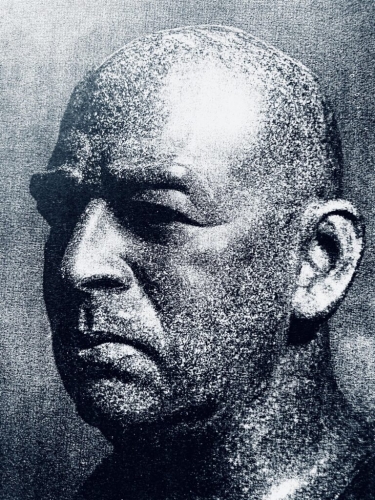
Et c'est une sorte de dissonance. C'est comme si une moitié du cerveau occidental était critique et réaliste par rapport à la situation et essayait de trouver une issue, tandis que l'autre moitié vit simplement avec un agenda différent et n'entend rien du tout. Parfois, elle peut coexister dans le même esprit. Prenons l'exemple de George Soros. Dans la moitié de ses ouvrages, il explique à quel point les régimes totalitaires sont terribles, combien il est important de promouvoir la démocratie, la société ouverte, comment le processus de démocratisation doit être mené à l'échelle mondiale, de financer des révolutions de couleur, de renverser des gouvernements indésirables - c'est-à-dire qu'il fait beaucoup pour renforcer la position de l'Occident. Et en même temps, l'autre moitié de son esprit affirme : l'Occident s'est effondré, l'Amérique a basculé dans le totalitarisme et n'est plus capable de diriger le monde, le système économique libéral s'est effondré, a explosé. Et tout cela est revendiqué par la même personne.

Si vous comprenez que les choses vont mal, vous devez trouver une issue, vous ouvrir à d'autres critiques, engager le dialogue. Mais ici, c'est le contraire. Il s'agit peut-être d'un diagnostic. Je n'exclus pas qu'il s'agisse d'une sorte de schizophrénie civilisationnelle. Nous avons affaire à deux voix, pour ainsi dire. En Occident, il y a deux voix complètement parallèles qui ne s'écoutent pas l'une l'autre. Une voix dit : tout est perdu. Les autres disent : nous allons vous en montrer, maintenant, tout de suite !
Serghei Mardan : Pour confirmer cette thèse, je voudrais attirer votre attention sur la déclaration récente de M. Borrell. Le même jour, il y a une interview de Blair qui dit que le déclin de l'Occident est en train de se produire, et pas dans le contexte de "tout est perdu !" mais il le formule comme un problème mondial que la société occidentale doit soit commencer à combattre, soit apprendre à vivre dans ce nouveau monde. Et puis arrive Borrell, l'un des principaux responsables européens, qui, les yeux fermés, déclare simplement : "Nous tiendrons les sanctions jusqu'au bout, elles fonctionneront certainement, nous devons être patients." L'impression est que Borrell se trouve dans un contexte complètement différent.
Alexandre Douguine : Cette dualité, ce dualisme ou cette schizophrénie civilisationnelle, est devenue apparente au tout début des années 1990. Deux projets sont apparus à cette époque - The End of History de Fukuyama et The Clash of Civilizations de Huntington. Selon Huntington, la domination mondiale de l'Occident ne s'étendrait plus après la chute de l'Union soviétique, l'Occident ne prendrait pas le contrôle et ne soumettrait pas le monde entier, mais il resterait une civilisation parmi d'autres. Une analyse tout à fait sobre et correcte qui prépare tous les acteurs - occidentaux et non occidentaux - à entrer dans un monde multipolaire. Trente ans de contrôle de la réalité montrent que Huntington avait raison.

Et puis Fukuyama arrive et dit : "Non, rien de tout cela, nous avons maintenant vaincu le dernier adversaire formel sous la forme du système communiste mondial et le monde restera avec une seule idéologie dominante, le libéralisme. Toutes les nations s'y soumettront car personne ne propose d'alternative. En fait, sera la fin de l'histoire, nos adversaires n'ont pas d'arguments, il vient une ère d'un seul ordre mondial libéral occidental, appelé la mondialisation.
Deux projets. Il semblerait, qu'il faille choisir, écouter les arguments, faire un test de réalité. Ce dont parlait Fukuyama est-il confirmé ? Rien n'a été confirmé depuis les années 1990. Et dans les années 2000, tout a commencé à exploser comme des dépôts de munitions. Toutes les thèses de Fukuyama dans les années 1990 (bien qu'il ait tenté de les corriger par la suite) s'effondrent aujourd'hui. Sa dernière idée était que Poutine remettait en cause l'ordre mondial libéral, un ordre mondial de normes et de règles qui sont désormais en danger et doivent être défendues. Quelle que soit la thèse de Fukuyama et de ceux qui sont sur sa longueur d'onde depuis trente ans, tout cela rate la cible. C'est tout faux. Quoi qu'il prétende - tout est réfuté par la vie.
Néanmoins, une partie paranoïaque de l'identité occidentale, y compris des maniaques comme Borrell, continue de demander plus de sanctions contre la Russie, insistant sur les droits de l'homme, sur les LGBT. Déjà, les Saoudiens, les partenaires les plus proches, leur laissent entendre que si l'Occident ne traite qu'avec ceux qui pensent comme eux sur tous les sujets, il se retrouvera exclusivement dans les limites de l'OTAN et perdra le monde entier, y compris ses alliés du monde islamique. Mais néanmoins, la paranoïa occidentale continue... C'est comme une obsession - continuer quoi qu'il arrive.
En même temps, si nous prenons Samuel Huntington avec son "Choc des civilisations", au contraire, tout ce que ce penseur a dit il y a trente ans est en train d'être mis en œuvre. Trente ans à confirmer la moitié de la thèse de ce dualisme occidental. Soit dit en passant, le Premier ministre britannique Tony Blair a un jour développé l'idée d'une "troisième voie", estimant que le capitalisme classique avait dégénéré. Et Blair n'est pas du tout un homme limité et est un penseur assez intéressant. Je ne suis pas un de ses grands fans, et sa "troisième voie" ne me semble pas du tout tenable, mais au moins il essayait de penser de manière critique, alternativement.

Et maintenant, il s'avère que la ligne Huntingtonienne est complètement confirmée, tandis que la ligne Fukuyama a échoué. Et alors ? Les partisans de la fin de l'histoire, de la Grande Réinitialisation, tous ces forums de Schwab, de Davos, de Soros, ne cessent de répéter la même chose : "plus de sanctions, imposer des sanctions à la Chine, diaboliser la Russie, avertir sévèrement le monde islamique, remettre Erdogan à sa place, isoler l'Iran, bombarder la Corée du Nord et détruire ses installations militaires. Et tout est comme avant, comme si rien ne s'était passé. Et c'est comme si Huntington n'avait jamais existé. Et surtout, c'est comme si personne ne faisait un bilan de la réalité, personne ne comparait la direction que nous prenons. Mais toutes les personnes sensées en Occident peuvent voir que le monde suit la ligne Huntington.
Sergei Mardan : Une pensée m'a traversé l'esprit. Et si cet entêtement, cette irréversibilité de la voie choisie était une quasi-religiosité particulière ? La religion traditionnelle semble avoir complètement disparu, elle semble être absente, mais d'un autre côté, l'Europe reste la même, comme elle l'était à l'époque de la guerre de Trente Ans, de la guerre de Cent Ans, des croisades. Féroce, intransigeante ... Continent des croisés, qui sont prêts à massacrer aussi bien des compatriotes que des étrangers au nom d'une idée.
Alexander Dugin : Peut-être. Si nous regardons attentivement, nous découvrirons en effet le fanatisme, la manie et la foi religieuse dans le libéralisme et le progrès. Alors que ces modèles ne fonctionnent pas, des prix Nobel sont distribués à droite et à gauche aux auteurs des concepts de la croissance exponentielle à progression géométrique de l'économie libérale mondiale. Quelques années après la distribution de ces prix Nobel, il s'avère que c'est le contraire qui arrive, que tous les indicateurs sont en baisse. Et pourtant, les lauréats du prix Nobel disparaissent et la religion demeure. Une religion libérale et, en un sens, satanique...
Sergey Mardan : L'Occident est obsédé, l'Occident est religieusement fanatique. Avec tout cela, ils ont jeté la vraie religion traditionnelle dans la poubelle de l'histoire.
Alexandre Douguine : En fait, le libéralisme a pris la place de la religion. Les dogmes de la conception libérale - du progrès, de l'individu, de la personne - sont, en fait, une sorte de théologie. Elle n'a pas de dimension divine, mais elle insiste sur des dogmes, des règles et des normes, tout comme le faisait la théologie médiévale.
Dans le même temps, il est intéressant de constater que l'Occident combat désormais ouvertement son propre racisme. Il proclame : nous sommes racistes mais nous devons nous débarrasser du racisme. Mais l'Occident va surmonter son racisme en tant que raciste. Il déclare : nous nous battons et vous vous battez. Nous nous excusons pour nos erreurs - et vous devriez vous excuser. Et ensuite, tout le monde doit accepter ces excuses comme un dogme absolu. Et toutes les nations, surtout les nations non occidentales, surtout les nations arriérées, les nations de second rang, comme elles le voient, devraient l'accepter comme une plate-forme commune. Même l'antiracisme occidental devient totalement raciste. Et l'antifascisme devient fasciste. Le libéralisme devient totalitaire. Son cœur reste inchangé. Il s'agit, en effet, d'une sorte d'ethnocentrisme, où au centre se trouve l'Occident, sa propre histoire. Autour de la périphérie, sur laquelle elle jette son pouvoir, désormais économique, informationnel, technologique. Tout le monde doit lui obéir strictement. Même si elle exige que chacun se repente de son expérience coloniale. C'est un paradoxe, c'est orwellien.
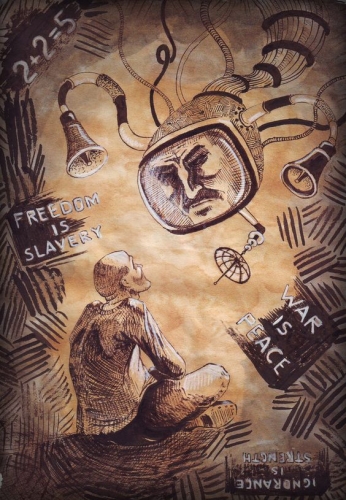
Je pense que tout le monde avait peur que le monde décrit par Orwell advienne, je veux dire le monde présenté dans 1984, un monde dit d'Europe de l'Est, dit des pays socialistes. Ce phénomène de "1984" n'est pas venu d'où on l'attendait. Nous vivons dans un monde libéral totalement totalitaire, avec une idéologie raciste, nazie, totalement fanatique, qui, tout comme celle d'Orwell, proclame : l'amour est la haine, la guerre est la paix, la pauvreté est la richesse, la richesse est la pauvreté. Et il impose ces paradoxes idéologiques à tout le monde de manière terrible. Si vous ne le pensez pas, nous vous "abolirons". D'où la "culture de l'annulation" (cancel culture). Et elle est devenue tout simplement omniprésente aujourd'hui.
Et les Occidentaux qui ont encore leur raison sont horrifiés par ce que leur propre culture, par ce que leur civilisation est devenue. Les autres sont complètement déconnectés de toute réalité et ils sont tombés dans un état spécial, fanatique et maniaque. Voyant que tout s'écroule pour eux, ils disent : "Non, ça ne s'écroule pas, ça se renforce. Lorsqu'ils voient qu'ils sont en train de perdre, ils disent : "nous sommes en train de gagner". Et nous le voyons en Ukraine. L'Occident a appris à l'Ukraine à ne pas gagner, à ne pas se battre, à ne pas défendre ses intérêts, mais à délirer, oui, c'est exactement cela: à délirer. Et c'est une illusion de réseau très efficace. Lorsque vous perdez des territoires, vous dites, comme les Ukrainiens : "Peu importe, nos troupes se tiennent près de Rostov, bientôt Belgorod et Moscou seront pris. Minsk est, en fait, déjà à nous".
Et moins il y a de réussites, plus il y a d'échecs, plus il y a de pertes, plus ces espoirs délirants grandissent. Il s'agit d'une forme de trouble collectif mental. Mais il n'est pas simplement ukrainien. Nous pensons qu'il en est ainsi en Ukraine. Mais il en est ainsi dans toute l'Europe. Draghi dit qu'il part, Matarella répond qu'il ne peut pas partir, étant mis à la porte. Macron n'a pas de réel soutien de la part de la population, les gilets jaunes le combattent depuis des années et il prétend "être le dirigeant le plus performant". C'est la même chose avec Scholz. Ces gouvernants suggèrent à leur peuple de prendre des mesures incroyables. Ils ont tout simplement échoué. Il aurait fallu parler sérieusement à la Russie dès le début. Mais personne ne l'a vu de cette façon. Ainsi, l'illusion remplace la réalité.
Sergey Mardan : Je vous propose l'hypothèse suivante pour expliquer pourquoi ils se comportent de la sorte. Peut-être n'est-ce pas vraiment du fanatisme, mais une sorte de rationalisme ? Ils l'ont été pendant les quatre cents dernières années sous le concept que le "milliard d'or" gouverne le monde (maintenant un milliard, auparavant il y en avait beaucoup moins). Un monde eurocentrique. L'Europe est entourée de périphéries, de colonies, elle les aspire. Et tout cela a pris forme, a changé d'une manière ou d'une autre. Mais rien n'a fondamentalement changé. Le centre s'est déplacé de la Grande-Bretagne à New York, puis à Washington. Maintenant, tout est en train de s'effondrer. Le système du dollar est en train de s'effondrer, l'économie mondiale est en train de s'effondrer en tant que phénomène qui a été conçu pour les nourrir, pour faire baffrer ce "milliard d'or", et tout cela est en train de s'effondrer. Et ils ne sont pas prêts à l'accepter, car dans le nouveau monde, dans un monde non eurocentrique, ce sera très triste. Ils refusent juste de reconnaître la réalité, c'est tout.
Alexander Dugin : Vous avez tout à fait raison. De plus, leur vision s'effrite. Autrefois, selon une vision raciste, il y avait des "Blancs" perçus comme étant de "première classe", des "Jaunes" de "deuxième classe" et des "Noirs" de "troisième classe". Du pur racisme. Elle remonte au dix-neuvième siècle. Elle était principalement pratiquée par les libéraux, d'ailleurs. Le libéralisme anglais, britannique, était totalement raciste. On dit parfois que le racisme est arrivé en Europe avec Hitler. Mais le racisme est arrivé en Allemagne même depuis l'Angleterre, l'Angleterre britannique libérale, par le biais des écrits de Chamberlain. Les Allemands n'étaient pas racistes jusqu'à ce que cette influence maligne et monstrueuse des libéraux anglais vienne à eux. Le libéralisme est un phénomène raciste à la base.
C'est alors que l'idée a émergé : les blancs, puis les jaunes, puis les noirs. Bien sûr, au vingtième siècle, cela a été abandonné. Mais qu'avons-nous aujourd'hui ? Centre, semi-périphérie, périphérie. Nord riche, zone intermédiaire, Sud pauvre. Civilisation, barbarie, sauvagerie. Toutes ces taxonomies, toutes ces hiérarchies sont restées inchangées. Au centre se trouve l'Occident, autour de lui se trouvent ceux qui suivent l'Occident, la ligue des démocraties, et à la périphérie se trouvent tous les États voyous, les rogue states. Le même modèle. Et maintenant, il s'effrite. Et en fait, cela ne fonctionne plus. Parce que cela ne satisfait personne. Ni les colonies, ni les opposants à l'Occident, ni les amis de l'Occident. Cela ne correspond tout simplement plus à la réalité.
Et c'est là que naît ce sentiment étrange, lorsque le monde est déjà très différent et que tous ces modèles racistes y sont attachés. C'est le désespoir. Il est clair que l'Occident va avoir une vie légèrement plus difficile. Mais c'est l'Ouest pour l'adaptation, pour trouver des issues, pour construire un nouveau modèle. Ils pensent qu'ils sont très flexibles, pleins de ressources et qu'ils volent les cerveaux du monde entier. Alors, faites en sorte que ces cerveaux justifient comment l'Occident peut survivre dans le monde multipolaire. Peut-être peut-on trouver une voie sans colonisation, sans ce libéralisme totalement totalitaire.

Au fait, concernant Trump. Lorsque Trump est arrivé, l'Amérique elle-même est allée dans cette direction. La question était de savoir comment rester une puissance forte lorsqu'il existe d'autres pôles. C'est à cela qu'il faut penser. Il est réaliste. C'est une chose à laquelle il faut penser en se réveillant, en reprenant ses esprits. Une approche saine consiste à trouver une place pour l'Occident, pour la civilisation occidentale dans le contexte des autres civilisations, russe, chinoise, indienne, islamique, qui se sont franchement levées. Comment l'Occident doit-il se comporter avec ces civilisations, comment se positionner, comment développer son économie, comment établir des relations ? Ce n'est pas une tâche facile mais je pense que c'est possible.
Mais pour le résoudre, nous devons le fixer. Nous voyons donc Borrell, nous voyons Biden, nous voyons Soros, nous voyons Schwab. Nous voyons des maniaques devant nous. Ils ne sont pas seulement vieux par leur âge, ils sont vieux par leur conscience. Ils veulent maintenir la domination occidentale à tout prix. Même si elle n'existe plus, ils en parlent encore. C'est une absurdité, marque de sénilité. Les gens sont à la retraite depuis longtemps mais ils continuent à s'habiller et à se rendre dans la cage d'escalier tous les matins pour donner des tâches à quelqu'un. J'ai connu une situation similaire dans les années 1980: nous avions un tel voisin. Au début, il était un cadre supérieur, puis il a pris sa retraite et est devenu progressivement fou. Et chaque jour, il allait au travail et criait. Il se tenait dans la cage d'escalier et hurlait sur ses subordonnés. Ce n'était pas drôle, c'était sinistre.
Biden me fait penser au genre de manager tardif, hors de lui, qui hurle à tout va. Personne ne l'entend, seule sa femme, de temps en temps, lorsqu'elle a de la peine pour lui, elle le ramène dans sa chambre.

Sergey Mardan : Donnez-lui une pilule.
Alexandre Douguine : L'Occident se trouve dans cet état même. Il traite d'un monde qui n'existe pas. L'Occident est un malade violent. En même temps, il possède des armes nucléaires, il peut aussi imposer des sanctions, il fournit des armes à longue portée aux maniaques ukrainiens, il donne naissance à des maniaques qui y croient. Sous leurs yeux, des personnes jeunes, saines et normales, sous l'influence de cet obscurantisme sénile, se transforment en monstres. C'est cela le libéralisme. Le libéralisme est une contagion. En fait, cela handicape les gens. On dit aux gens: tout est permis, vous êtes un individu, vous n'avez pas d'identité collective. Et si un homme y croit, il tombe dans le panneau. Et il perd toute humanité, devient comme un maniaque, comme cette partie occidentale de l'humanité.
Mais je pense que la délivrance de l'Occident viendra de l'intérieur de lui-même.
22:45 Publié dans Actualité, Entretiens, Nouvelle Droite | Lien permanent | Commentaires (0) | Tags : alexandre douguine, nouvelle droite, nouvelle droite russe, russie, libéralisme, entretien |  |
|  del.icio.us |
del.icio.us |  |
|  Digg |
Digg | ![]() Facebook
Facebook
vendredi, 22 juillet 2022
PROMETHEICA : la voie de l'action
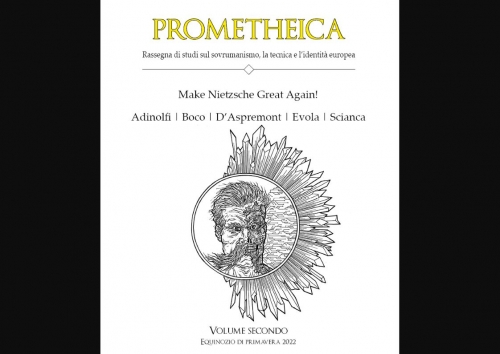
PROMETHEICA : la voie de l'action
Luca Leonello Rimbotti
Source: https://www.centroitalicum.com/prometheica-la-via-dellazione/
Le prométhéisme est la volonté surhumaine (prométhéenne, précisément) de dépasser l'indécision et la peur immobiliste en se jetant à corps perdu dans la postmodernité radicale, en concevant l'action comme l'élément simultané de la pensée.
Dans le désert inintelligent et dans le silence des cultures éteintes par la brutalité de la consommation, nous tendons l'oreille et entendons le cri du contraste. Quelque chose qui appelle à la mobilisation. Qui avec des mots anciens en forme de nouveaux. Contre l'immobilisme substantiel du présent, qui ne sort pas des hypocrisies autour de la psycho-pandémie ou de la semi-guerre, et qui véhicule des modèles illusoires d'un dynamisme de rat, il faut rassembler des idées, les enflammer volcaniquement et les jeter incandescentes dans les mains des nouveaux artisans de la volonté européenne. S'il y en a encore, quelque part, un, mais un qui ne trahit pas, qui n'a pas de maîtres, qui ne veut que lui-même.
Au-delà des faits, il y a l'espoir de forger des esprits et des caractères capables de porter un regard sur les événements. Il n'est même pas important de comprendre réellement ce qui se passe, car tout se passe dans le circuit du pouvoir financier et cosmopolite. Vouloir trop comprendre l'ennemi, après tout, c'est aussi accepter de lui ressembler, d'être infecté par ses éruptions.
Cependant, si la culture n'existe pas aujourd'hui en Occident/Europe, il existe une contre-culture. C'est à ce tourbillon de la surface de l'eau qu'il faut s'intéresser. En bas, un animal idéologique nourri par les abysses est peut-être sur le point d'émerger.
Si nous prenons le magazine Prometheica, qui se présente comme une "revue d'études sur le surhumanisme, la technologie et l'identité européenne", nous nous rendons immédiatement compte qu'il existe quelque part un désir barbare de contraste. On agite des mots d'indignation, on se moque du cosmos des fausses terreurs dans le laboratoire duquel l'homme-masse est amené à croupir, on constate avec un acte volontariste que la société actuelle, dense de mensonges, n'est qu'un cadavre décomposé dans des eaux usées, psychédéliques.
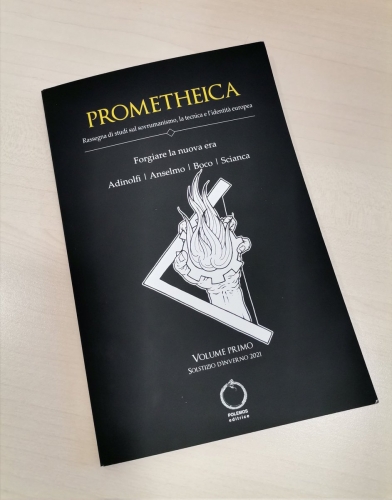
Un groupe d'intellectuels aguerris a entrepris de fournir des armes d'opposition à ceux qui acceptent de mettre la main à la pâte pour se révolter. Et c'est la main. Concevoir l'action comme l'élément simultané de la pensée. Ainsi, nous pouvons imaginer le dépassement du présent et l'érection d'une machine oppositionnelle en recourant à la totalité des forces mobilisables par l'homme d'opposition. Et précisément dans le sens avec lequel Heidegger a rappelé un jour quel était le sens de la main : "penser, c'est agir dans ce qui vous est le plus propre, si agir signifie prêter la main à l'essence de l'être". À l'époque où l'on apprend d'abord à taper sur le clavier, puis à parler, le symbole exclusif de la main - comme organe maîtrisant la techne primordiale - tombe à l'eau.
Le premier numéro du magazine Prometheica, publié au Solstice d'hiver de 2021, contenait un Manifeste du prométhéisme. Le spectre idéologique de la nouvelle subversion y était présenté. Quelques points essentiels, à la manière des manifestes du vingtième siècle.
Le premier point a déjà clarifié les idées : la technologie, dans toutes ses déclinaisons, y compris l'intelligence artificielle, le génie génétique, la robotique, etc., est non seulement acceptée, mais poussée vers le toujours plus loin. Se jeter à corps perdu dans les applications techniques et technologiques sans les freins inhibiteurs des obscurantismes monothéistes et moralisateurs : voilà la nouvelle frontière de ceux qui lient les origines primordiales doriques de notre civilisation à son destin faustien, la condamnant à gérer dans les proportions les plus denses tout ce qui est connaissance, action, mythe, rituel, symbole.
En fait, ce point et les dix autres du Manifeste illustrent la volonté surhumaine (prométhéenne, précisément) de dépasser l'indécision et la peur immobiliste en plongeant à corps perdu dans la postmodernité radicale. Ces nouveaux argonautes de l'ultraïsme voient notre destin dans l'accélération évolutive du processus de désintégration dans lequel se tord la civilisation actuelle, poussant à la limite les possibilités d'engendrer par tous les moyens l'homme nouveau invoqué sans succès par les révolutions du passé.
C'est l'homme amélioré, et voyons si au moins cela fonctionne.
Serviteur des annonces de Nietzsche, réalisateur des rêves éveillés que portent les traits saillants de notre haute histoire : l'au-delà de la tenue, l'au-delà du lancer, une constance tourbillonnante, et voici l'homme dessiné par les intellectuels spartiates de "Prométhée", qui laisse entrevoir ses contours.
L'élevage de l'homme nouveau naît essentiellement du conflit, cette soupe primordiale bouillonnante dans laquelle se forment des créatures supérieures qui s'extraient du magma et deviennent un gigantesque organisme biopolitique dans lequel bête et dieu se confondent. Des éclairs d'expérimentation futuriste surgit l'individu, qui résume toutes les formes du passé : l'anarque, l'unique, le rebelle, le scientifique, le mystique, le soldat politique : combien d'horizons jamais atteints ? Et combien d'autres doivent surgir à chaque aube, avant que nous ne voyions la civilisation de l'amas libéral s'effondrer ?
Le manifeste de Prometheica veut une Europe des forts, le pays "dans lequel le feu de la technologie a brûlé le plus brillamment". Et donc un impérialisme spatial européen, une "souveraineté technologique totale", un biocommunautarisme qui observe et évalue avec une froideur naturelle même les mondes périlleux de la génétique, peut-être pour redresser les démographies paralysées par la prospérité.
La maîtrise de l'espace tellurique dans lequel la révolution faustienne doit s'accomplir ne laisse aucun champ libre : la souveraineté et l'autodétermination sont revendiquées comme des absolus. Tout ce qui est technique doit être mis à la disposition du nouvel homme : de l'écosystème aux méthodes de coexistence, de la grande politique aux nouvelles ressources. La bataille préconçue oppose l'homme bas du présent, hétéro-dirigé en sourdine par des usuriers sans terre, au grand homme du futur proche, doté d'une volonté organisée et libre.
L'organique de la vie biologique est marié à la puissante machinerie d'un cerveau qui fixe, veut et crée ; il est flanqué de l'inorganique, devenu événement et philosophie : la civilisation n'a-t-elle pas toujours été une heureuse combinaison de la main de l'homme et de la nature, de l'organisme qui croît et de l'instrumentation qui donne du pouvoir ? Et la culture, d'où tout jaillit, n'est-elle pas précisément une culture, d'où tout porte des fruits ? Sans la correction technique de la volonté humaine, la nature, laissée à elle-même, déchaîne la cruauté, l'absurdité, la contradiction ; c'est alors que tout se décompose vigoureusement en amas d'enchevêtrements irrésolus et sans logique, plongeant dans le chaos. La technique faustienne, dont l'homme européen - pour le meilleur et pour le pire - est l'excellence suprême, c'est l'ordre, la discipline irriguée des besoins et l'expérimentation des attentes, ce qui n'offense pas mais flatte le dieu ; c'est la complicité avec la création, c'est le défi à la mort.
Francesco Boco a écrit que "l'être humain s'expose ainsi au risque suprême, expose sa nature déficiente et puissante aux éléments et à l'adversité et accepte le défi capital de devenir lui-même ou de périr". Sur la corde de Nietzsche où sont tendus le plus et le pas encore, l'homme prométhéen ne doit en vérité ni accélérer ni retarder la dissolution. Au contraire, il doit la "transcender". Il s'agit d'un mot : comment faire ? "La modernité doit être transcendée", écrit Adriano Scianca, "c'est-à-dire traversée, même dans ce qu'elle a de plus fictif et aliénant, mais avec une traversée toujours surmontée, laissant les fétiches de l'humanisme occidental dans le rétroviseur".
Un nouveau nihilisme actif ? C'est un fait que ce modèle de modernité nous souille rien qu'en le regardant ; le combattre, c'est aussi se souiller de sa laideur.
En jouant sur les dangers que l'on court en manipulant les extrêmes de la technologie et de la technique, on vit dangereusement, certainement, on est en contact avec le risque radical. C'est ce qui arrive, par exemple, à ceux qui parcourent les méandres de l'imaginaire : le héros robotique cache les possibilités d'un "dieu tonnant", comme l'écrit Carlomanno Adinolfi dans le deuxième volume de Prometheica (Equinoxe de printemps 2022), selon le binôme classique tradition/innovation japonais. Mais une telle "voie herculéenne" cachera toujours, pour l'homme massifié, un ensemble de dangers effrayants. Donc, une aristocratie des suprêmes, insensible au calcul et au risque ? Les indomptables Marinettistes ? Un futurisme ultra-social, ultra-vital ?
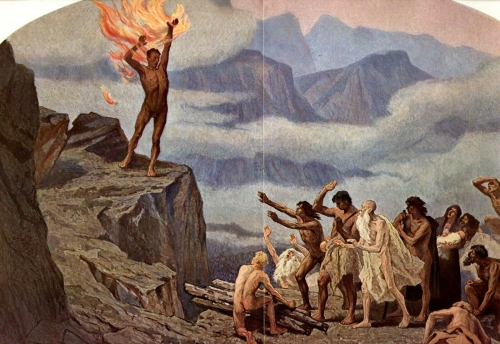
Cependant, il existe un danger qui n'est pas seulement ressenti dans l'âme basse de l'individu indifférencié. L'homme massifié n'est pas le seul à avoir du nez pour les insidiosités qui se cachent dans l'illimité. Une fois la société usuraire des sectateurs cosmopolites liquidée, par on ne sait laquelle des catastrophes possibles, l'homme faustien aura en effet devant lui, une fois de plus, une énigme titanesque à démêler. Celle qui a divisé Alexandre, dévoreur d'espace et d'expériences, de ses généraux macédoniens, désireux à la fin d'un nòstos ulisside.
Les Prométhéens d'aujourd'hui et de demain devront réaliser le mariage impossible du fini avec l'infini.
21:46 Publié dans Nouvelle Droite, Philosophie, Revue | Lien permanent | Commentaires (1) | Tags : revue, prometheica, futurisme, archéofuturisme, nouvelle droite, prométhéisme |  |
|  del.icio.us |
del.icio.us |  |
|  Digg |
Digg | ![]() Facebook
Facebook
lundi, 20 juin 2022
Faye: une vie faustienne entre Evola et Marinetti

Faye: une vie faustienne entre Evola et Marinetti
Par Alfonso Piscitelli
Source: https://culturaidentita.it/faye-vita-faustiana-tra-evola-marinetti/
La vie de Guillaume Faye a été très haute en couleurs: provocations politiques, alcools forts, sexe, idées fortes même poussées à l'excès. Une vie de "sexe, de drogue et de nouvelle droite", pour paraphraser un vieil adage. Puis la mort est venue à lui dans toute sa gravité, s'annonçant comme l'ambassadrice de la douleur, au cours d'une longue maladie. Ceux qui le connaissaient disent qu'il a affronté son crépuscule avec le même esprit faustien qui l'animait lors de ses années vigoureuses: faire des plans jusqu'à son dernier jour, qui fut le 7 mars 2019.
Faye cultivait en lui ce que les romantiques appelaient le "Streben", une envie inépuisable d'aller toujours plus loin, de chercher à se surpasser, de se fixer un but dans l'infini. C'est cette même impulsion qu'Oswald Spengler voyait dans les cathédrales gothiques, avec leurs flèches projetées vers le ciel; et qu'Adriano Romualdi voyait dans les entreprises spatiales des années 1960. Dépassant le traditionalisme qui avait eu Guénon comme maître en France, Faye écrit dans son livre-manifeste L'Archéofuturisme qu'il faut réconcilier Evola et Marinetti, c'est-à-dire la référence à des racines profondes qui ne se figent pas, d'une part, avec un élan d'innovation et de créativité, d'autre part, celui de l'Homo Faber. En revanche, si notre tradition est celle des Européens apparus à l'aube de l'âge du fer sur des chars de combat (... les vaisseaux spatiaux de l'époque), alors il serait incohérent avec nos origines et donc "anti-traditionnel" de devenir immobilistes ou d'idolâtrer une quelconque période (figée) du passé comme le font les traditionalistes enfermés dans les nombreux cercles mentaux de la nostalgie (médiévistes, bourbonistes, néo-fascistes, papalistes, néo-païens...).
Certes, Faye édulcore son épopée historique par le haut degré de ses provocations: il imagine des mutations génétiques à la Marvel, il invoque le retour à des coutumes archaïques qui se concilient en même temps avec les technologies les plus audacieuses. Dans tout cela, il était également capable de faire des prédictions téméraires. Au milieu des années 1990, la Russie était à genoux, au bord de la dissolution, mais Faye a compris que le point cardinal qu'est l'Est pouvait devenir un point de référence pour la rédemption européenne et offrir un solide antidote à la crise de l'Ouest.

Le jumeau italien de Faye était Giorgio Locchi, son maître et un auteur hélas oublié. Comme Locchi, Faye a cultivé le goût de briser les règles du langage "politiquement correct". Dans Le Système à tuer les peuples, en 1981, Faye avait déjà déclaré que la mondialisation ouvrait la boîte de Pandore de tous les maux ; dans La colonisation de l'Europe, il a répété son refus catégorique du "remplacement ethnique" de l'Europe et de la création de zones densément islamisées sur le continent. Dans Avant-guerre, écrit au lendemain du 11 septembre, il annonce, avec une exagération polémique évidente, l'avènement d'une période hobbesienne de bellum omnium contra omnes : un conflit interethnique à la manière du Rwanda. D'accord, il exagérait....
Mais il faut aussi ajouté qu'il a exercé l'art de la provocation par rapport à son propre milieu initial, qui était fondamentalement l'extrême-droite plutôt que la nouvelle droite d'Alain de Benoist. À un moment donné, il a écrit que nous devons cesser d'accuser les Juifs de tous les maux du monde et mettre un terme au négationnisme. Cette sentence lui a apporté plus d'ennemis et - on peut l'imaginer - encore plus de plaisir de goliard.

Comment considérer un auteur qui, à chaque page, conteste l'équivalent français de la Loi Mancino et s'attire en même temps l'accusation d'être un "sioniste"? On serait tenté de le qualifier de farceur, au mieux de boute-en-train. Il suffit cependant de réfléchir à ce passage de L'Archéofuturisme pour comprendre qu'il y avait un Logos derrière son dionysisme politique: "Il faut se réconcilier", écrit Faye dans ce livre publié au seuil fatidique de l'an deux mille, "il faut réconcilier Evola et Marinetti ; il faut penser ensemble la techno-science et la communauté immémoriale, la communauté traditionnelle". Jamais l'un sans l'autre. Considérez l'homme européen à la fois comme le deinatatos ("le plus audacieux"), le futuriste et, simultanément, l'être de longue mémoire. À l'échelle mondiale, l'avenir exige le retour des valeurs ancestrales, et ce pour la "Terre entière".
Il est difficile pour quelqu'un comme Faye de formuler le souhait funéraire: "Repose en paix". On dirait plutôt : "Ruhe im Streben".
19:27 Publié dans Nouvelle Droite | Lien permanent | Commentaires (0) | Tags : guillaume faye, nouvelle droite, archéofuturisme |  |
|  del.icio.us |
del.icio.us |  |
|  Digg |
Digg | ![]() Facebook
Facebook
dimanche, 19 juin 2022
Le futur post-apocalyptique du fer et du feu

Le futur post-apocalyptique du fer et du feu
Recension de : L'archéofuturisme de Guillaume Faye
Par Martín López Corredoira (2020)
Source: https://disidentia.com/el-futuro-postapocaliptico-de-hierro-y-fuego/
Aujourd'hui, le 7 mars, un an s'est écoulé depuis la mort de Guillaume Faye, un penseur politique au caractère révolutionnaire marqué et difficile à classer. Faye sauve l'esprit des grands réformateurs sociaux et abandonne les accommodements bourgeois placides de la politique démocratique d'aujourd'hui. Il est généralement classé comme appartenant à la droite radicale, en raison de ses origines et de ses propositions anti-progressistes agressives et politiquement incorrectes, mais il y a en lui des éléments qui vont bien au-delà des postulats de la politique néo-conservatrice, et il peut être classé comme un révolutionnaire qui se situe dans le monde des idées utopiques plutôt que comme un pragmatique politique qui vit dans la réalité d'aujourd'hui et cherche à attirer quelques millions de voix avec des propositions qui plaisent à certains secteurs de l'électorat.

L'un de ses ouvrages les plus emblématiques parmi sa vaste production est un livre qui a été récemment traduit en espagnol sous le titre El arqueofuturismo ; il existe plusieurs éditions disponibles sur le marché ; je prends ici comme source de citations la traduction publiée par Ediciones Titania. L'original français, L'Archéofuturisme, a été publié en 1998 par l'Æncre à Paris. Il existe quelques critiques du livre publiées en espagnol, par exemple par Juan José Coca dans Posmodernia ou sur le site de la Fuerza Nacional Identitaria au Chili. L'impact de l'œuvre a néanmoins atteint beaucoup plus de langues et de régions de la planète, étant reconnu comme une menace parmi ceux qui jouissent de l'existence bourgeoise et atone des démocraties libérales.
Voyant venir la fin de notre forme de civilisation, qui succombera à des cataclysmes planétaires (crises financières, pollution incontrôlée, effondrement des systèmes éducatifs, stupidité générale croissante,...) l'auteur prépare le monde post-apocalyptique, le nouvel âge de fer et de feu: celui de l'archéofuturisme, synthèse dialectique des valeurs archaïques (famille, spiritualité, séparation sexuelle des rôles, hiérarchie,...) et de la technologie futuriste, des principes apolliniens et dionysiaques. Il prône une société future dans laquelle la société est divisée en deux groupes: un groupe majoritaire voué à une économie de subsistance rurale et artisanale pré-technique, liée à une religion et des superstitions primitives; et une élite minoritaire qui conserve le pouvoir économique techno-scientifique, au sein d'un agnosticisme païen. Sa méthode est la pensée radicale: "Seule la pensée radicale est fructueuse. Car elle seule peut créer des concepts audacieux qui brisent l'ordre idéologique hégémonique et sortent du cercle vicieux d'un système de civilisation défaillant".

L'après-naufrage peut donner lieu à une guerre entre identités, mais il peut aussi s'agir d'une grande période de paix dans laquelle renaîtront d'autres cultures qui, au loin, regarderont l'Europe parmi ses ruines avec admiration et fascination, tout comme nous regardons aujourd'hui les vestiges de l'Empire romain ou de l'ère pharaonique en Egypte antiques.
À mon avis, il existe de nombreux éléments courageux qui révèlent l'intelligence de l'observateur pertinent que fut Faye. Quelques citations notables : "Greenpeace et les idéologues correspondants (...) politiquement ultra-corrects et totalement complices du système" ; "l'égalitarisme utopique et obstiné (...) conduit l'humanité à la barbarie et à l'horreur économique, par ses contractions internes" ; "Le paradigme de l'égalitarisme matérialiste dominant-une société de consommation démocratique pour dix milliards de personnes au XXIe siècle sans pillage environnemental généralisé-est une pure utopie" ; "la démocratie parlementaire moderne (...) dictature des bureaucraties (...) est une utopie". ) dictature des bureaucraties et des requins mercantiles" (pour paraphraser le politicien britannique Peter Mandelson) ; "l'introduction des hypertechnologies ne nous conduit pas vers un plus grand égalitarisme (comme le croient les apologistes imbéciles de la pan-communication, grâce à Internet), mais vers le retour de modèles sociaux archaïques et hiérarchiques" ; "Le levier de cette manipulation, dont la bourgeoisie intellectuelle et artistique naïve est la victime, est une hypertrophie monstrueuse et irresponsable de 'l'amour du prochain comme de soi-même', une apologie de la faiblesse, une dévirilisation et une auto-culpabilisation pathologiques. Il s'agit d'une sous-culture de l'émotion facile, un culte de la décadence destiné à débrider les esprits européens" ; "le sport (...) fait partie du monde du show-business et est le nouvel opium du peuple" ; "les fêtes (...) financées artificiellement par l'État, comme des explosions d'hybrides déstructurés qui agissent comme une drogue collective" ; "la civilisation occidentale s'est considérablement affaiblie lorsqu'elle a donné une valeur absolue à un sentiment névrotique : l'amour. (...) Aujourd'hui, la moitié des mariages se brisent parce qu'ils sont basés sur un sentiment d'adolescents amoureux, éphémère, qui disparaît rapidement. Les mariages durables sont ceux qui sont calculés".
Il a un relent de la "nouvelle droite" française, bien sûr, car l'auteur a appartenu à ce vivier, même s'il a fini par le désavouer. Plus encore, il désavoue la gauche, qu'il juge impuissante à affronter le capitalisme et qu'il accuse de devenir une classe bourgeoise qui ne défend pas les plus démunis, mais plutôt une classe moyenne de salariés et une série de valeurs égalitaires (féminisme, immigrés, homosexuels,...) qui nous mènent au désastre. Bien qu'avec des airs politiques plutôt que philosophiques, je vois en Faye un digne héritier de la philosophie au marteau de Nietzsche. Les mêmes éléments sont présents chez Nietzsche, Spengler ou les penseurs classiques qui ne se promenaient pas avec un bandeau sur les yeux. Les politiciens et les philosophes s'occupent d'idées sociales, mais les premiers connaissent peu la réflexion et beaucoup la démagogie; les politiciens parlent pour leur temps, les philosophes s'occupent de questions pérennes. En ce sens, c'est une bonne chose que certains penseurs politiques s'approchent de la pensée intemporelle de la philosophie, même si c'est dans son style, plutôt que de se soucier d'occuper quelques sièges dans un congrès.

Faye va plus loin que les autres politiciens qui défendent l'identité européenne face à l'immigration débridée en prédisant un déclin imparable sans solution. Son rejet de l'immigration et, plus particulièrement, de la religion musulmane, me semble comporter certains éléments raisonnables: on entrevoit ce que sera le destin de notre continent, à savoir être le réceptacle migratoire de grandes hordes de barbares venus d'autres régions du globe, qui n'ont pas su se contenir sur le plan reproductif et fuient la misère. Cependant, d'autres éléments montrent une certaine animosité infondée envers le monde musulman. Je constate un manque d'objectivité dans l'évaluation de la valeur des différentes civilisations. Il considère comme acquis que l'histoire donnera raison à l'homme blanc européen et qu'il doit continuer à préserver son hégémonie comme il l'a fait au cours des derniers siècles, ce qui me semble partiellement myope.
Quant à sa proposition futuriste, elle relève à la fois de l'utopie et de la prédiction fataliste. Ce n'est pas l'avenir que nous souhaitons tous, mais l'un des futurs possibles. La spéculation sur une future civilisation économique euro-russe blanche à deux vitesses, imperméable à l'immigration d'autres peuples, est un projet politique possible, mais non sans conflit avant qu'il ne devienne réalité.


Utopies mises à part, ce qui me frappe le plus est peut-être la prophétie dystopique d'un avenir post-apocalyptique de fer et de feu. Selon l'auteur, les temps difficiles qui s'annoncent ne seront guère meilleurs lorsque la tempête du chaos fera rage. Au-delà de ce que dit le livre de Faye, on devine derrière ses mots un monde Mad Max-esque, un monde dans lequel le do-gooderism de notre époque s'éteint une fois que les nigauds qui le défendaient se sont éteints par inadaptation, laissant place à la survie du plus fort. Ce n'est pas que le darwinisme social en tant que philosophie revienne à la mode, mais que la vie est au-dessus de toute idéologie et que, continuellement à travers l'histoire, elle coule à nouveau librement comme une rivière entre les montagnes qui refuse de se déplacer entre les canaux artificiels des ingénieurs sociaux. Il y a quelque chose de poétique, il y a un style épique, un esprit prométhéen, faustien dans la déclamation d'une vie future bien éloignée des misères bourgeoises et ennuyeuses de l'Européen moyen d'aujourd'hui.
Je suis d'accord avec Faye pour dire que la compétition entre les différents groupes ethniques sera féroce dans une course du plus fort pour la survie. Je pense, cependant, que Faye a tort de parier sur le cheval gagnant. Même si cela heurte sa fierté d'Européen blanc, ces nouveaux temps de fer et de feu ne sont plus pour l'homme de miel et de beurre qui habite désormais notre continent. L'avenir appartient aux autres peuples. Cela ne vaut pas la peine de se battre pour conserver cette Europe de végétariens et de cyclistes urbains (pour paraphraser le ministre polonais Witold Waszczykowski), de féministes criardes, de femelles porte-culottes et de tapettes, de bonnes volontés et de petites sœurs de la charité. Une culture qui a perdu la force de la lutte vitale ne mérite pas de vivre. L'après-naufrage peut donner lieu à une guerre entre identités, mais il peut aussi s'agir d'une grande période de paix dans laquelle renaîtront d'autres cultures qui, au loin, regarderont l'Europe parmi ses ruines avec admiration et fascination, tout comme nous regardons aujourd'hui les vestiges de l'Empire romain ou de l'ère pharaonique de l'Egypte antique.
11:59 Publié dans Livre, Livre, Nouvelle Droite | Lien permanent | Commentaires (0) | Tags : guillaume faye, nouvelle droite, archéofuturisme, apocalypse, convergence des catastrophes |  |
|  del.icio.us |
del.icio.us |  |
|  Digg |
Digg | ![]() Facebook
Facebook
samedi, 18 juin 2022
Dieux et pouvoir. Le prométhéisme de Guillaume Faye

Dieux et pouvoir. Le prométhéisme de Guillaume Faye
par Giovanni Sessa
Source: https://www.centrostudilaruna.it/dei-e-potenza-il-prometeismo-di-guillaume-faye.html
Une nouveauté importante est en librairie grâce aux éditions Altaforte. Il s'agit d'un volume dû à la plume de Guillaume Faye, Dieux et pouvoir. Textes et entretiens pour la reconquête européenne (1979-2019), publié sous la direction d'Adriano Scianca (pp. 284, euro 17,00). Il s'agit d'un recueil d'écrits du penseur français, pour la plupart inédits dans en italien jusqu'ici.
Le parcours intellectuel de Faye, pour une certaine part proche de celui de la Nouvelle droite, commence par sa fréquentation d'un Cercle Pareto à Paris. A la même époque, Dominique Venner lui fait découvrir le GRECE, qui a vu le jour en 1969. Les thèses de Jean Mabire et, surtout, de Giorgio Locchi, ont exercé sur lui une influence décisive, comme le rappelle opportunément Scianca dans sa préface bien documentée. En 1986, il rompt définitivement avec la Nouvelle Droite, non pas pour des raisons personnelles ou des conflits d'idées, mais simplement parce que ses recherches personnelles prennent une autre voie.
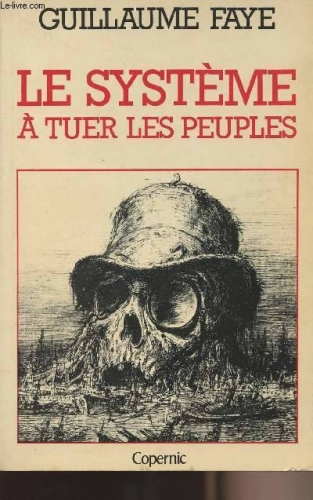
Provocateur intellectuel, mais aussi homme de caractère, Faye, qui est décédé en 2019, était doté de talents oratoires hors du commun avec lesquels il gagnait son public lors de conférences où les auditeurs se bousculaient. La lecture de ce recueil, qui couvre plusieurs décennies de sa production non romanesque, donne un aperçu clair de son monde idéal. On se souvient généralement de deux textes de cet auteur français, Le système à tuer les peuples, qui résume bien sa vision initiale du monde, et L'archéofuturisme, qui constitue au contraire son point d'arrivée théorique. Dans les pages de Dei e Potenza, il est clair, en premier lieu, qu'il avait : "une formation philosophique non triviale, une vision éclectique de la réalité marquée par la méditation des Fragments d'Héraclite. Sa pensée repose sur une ontologie non finaliste, non anthropocentrique et non rationaliste, ouvertement dionysiaque" (p. 8). Une position qui, dans le "paganisme", avait donc un point de référence indispensable, la métaphysique occidentale ayant présenté une conception de la réalité finaliste et ordonnée à l'idée de Dieu. Pour Faye, le trait ontologiquement constitutif de l'homme européen est : "Esprit de conquête, audace [...] construction de formes toujours nouvelles" (p. 9). L'homme, à ses yeux, est un transgresseur, un donneur de sens, qui vit en s'affranchissant de ses propres conquêtes. En cela, nous voyons une nette proximité avec l'individu absolu d'Evola.
Les dieux européens sont sujets à la métamorphose, accrochés à la possibilité dionysiaque de la liberté : "ils peuvent même mourir, dans le crépuscule cosmique d'un ordre qui en annonce un autre" (p. 10) et l'homme peut assumer le trait du "héros rebelle" à l'ordre donné. En ce sens, il est possible d'affirmer que, ab origine, la pensée de Faye avait un trait prométhéen. Cette tendance se manifeste clairement dans son exégèse de Heidegger. Notre auteur français s'attarde sur l'idée de l'homme que Heidegger déduit d'un passage de Sophocle, et lit au deinòtaton, comme le "formidable", "ce qui est le plus inquiétant, le plus audacieux". Un tel trait permettrait à l'homme de l'ère technologique d'affronter le "monstrueux" produit par l'implant, par une réponse capable de s'appuyer sur les forces "mobilisées" par la technique elle-même, jugée inattaquable (on pense aux positions non dénuées d'intérêt de Bernard Stiegler). Un tel pouvoir élimine de la scène de l'histoire les hypothétiques retours au passé. Faye montre également dans sa lecture de la technique une dette envers l'anthropologie de Gehlen. Contrairement à l'animal qui subit l'environnement, l'homme se change lui-même et change le monde "techniquement". Avec Robert Steuckers, le penseur français est convaincu que l'imaginaire authentiquement européen, contrairement à l'imaginaire occidental autrement structuré, est capable de faire la synthèse de l'enracinement et du déracinement. Nous sommes animés par le "cœur aventureux" jüngerien et l'attitude que Spengler appelait faustienne, nous tendons vers la conquête de l'infini. Le risque a toujours régi les relations de l'homme avec l'entité. Le paganisme post-chrétien de Faye se fonde, contrairement à celui de de Benoist, sur le dépassement de " l'idée du divin [...] Pour nous [...] l'idée de Dieu a pris une connotation qui tend à dévaloriser l'action humaine " et " toute divinité est définitivement morte, définitivement archéologique " (p. 53).
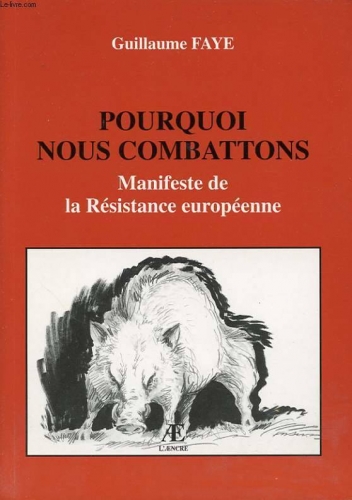
Après avoir également oeuvré dans le monde du divertissement, il revient dans l'arène intellectuelle en lançant un nouveau mot à la mode: l'archéofuturisme. Il "donne l'idée que les derniers modernes constatent l'épuisement de leur pensée et se contentent d'annoncer un "après"" (p. 16). Faye était fermement convaincue de l'implosion de la post-modernité: l'occurrence synchronisée de catastrophes allait miner sa stabilité structurelle. Il s'agit d'une thèse plutôt faible. Elle ne tient pas compte de la capacité du système à "gérer" les crises et à y survivre (docet la pandémie) et, de plus, elle implique une régression vers la vision déterministe de l'histoire, fondée sur la recherche des "signes des temps".
Plus intéressante est l'exégèse de l'Occident lu comme un paradigme du déclin : "un mécanisme acéphale, une toile dont toutes les articulations ne sont certes pas d'égale importance, mais dans laquelle il n'y a pas de marionnettiste, pas de Palais d'hiver à prendre d'assaut" (p. 19). Tout aussi significative est l'analyse, partagée plus tard par Guy Debord, sur les "sociétés du spectacle". Le spectacle "concentré" offert par le socialisme réel et le spectacle "diffus" propre au monde capitaliste, expressions du spectacle "intégré" offert par la Modernité.
La lecture de Dei e Potenza peut jouer un rôle important pour contrer l'une des maladies infantiles de la zone antagoniste, le modérantisme conservateur qui réapparaît aujourd'hui, mais elle nous semble insuffisante pour délimiter une voie politique véritablement révolutionnaire-conservatrice. Une telle voie doit impliquer la conciliation de Prométhée et d'Orphée, un duo inséparable. Privilégier l'un au détriment de l'autre donne lieu à une incompréhension fondamentale des potestats qui animent la physis. Se remettre à lire Bruno, Spinoza et Löwith pourrait être bénéfique.
Giovanni Sessa
Giovanni Sessa est né à Milan en 1957 et enseigne la philosophie et l'histoire dans les lycées. Ses écrits sont parus dans des revues et des journaux, ainsi que dans des ouvrages collectifs et des actes de conférences. Il a publié les monographies Oltre la persuasione. Saggio su Carlo Michelstaedter (Rome 2008) et La meraviglia del nulla. Vita e filosofia di Andrea Emo (Milan 2014). Il est secrétaire de la Scuola Romana di Filosofia Politica (École romaine de philosophie politique), collaborateur de la Fondation Evola et porte-parole du mouvement de pensée 'Per una nuova oggettività' (Pour une nouvelle objectivité).
18:13 Publié dans Livre, Livre, Nouvelle Droite | Lien permanent | Commentaires (0) | Tags : guillaume faye, livre, nouvelle droite, archéofuturisme, prométhéisme, philosophie |  |
|  del.icio.us |
del.icio.us |  |
|  Digg |
Digg | ![]() Facebook
Facebook
Alexandre Douguine: Code russe

Code russe
Alexandre Douguine
Source: https://www.geopolitika.ru/en/article/russian-code?fbclid=IwAR2uPl4o1gfXQnq1TqdaoQhFFdatd7Y-Okskc_f3JiHlnRhkrgpjVAC5P48
En s'engageant dans une confrontation directe avec l'Occident pendant l'Opération militaire spéciale, même si l'Occident lui-même n'y participe que par le biais de sa structure ukrainienne donc par procuration, structure qui ne peut pas être appelée un "pays", la Russie est, par voie de conséquence, obligée de défendre sa souveraineté à tous les niveaux. En termes de politique militaire, économique et formelle, c'est assez évident, mais l'Occident est bien plus qu'une structure politico-militaro-économique: c'est une civilisation avec un code de programmation fondamental. Tout le reste découle de ce code: les armes, l'économie, la politique, la culture, l'éducation, la science, les médias, etc. La Russie est maintenant obligée d'affronter l'ensemble du spectre et, en général, le code occidental lui-même.
Les autorités russes ne le comprennent pas encore pleinement et même les plus ardents opposants à l'Occident dominant pensent en termes de confrontation militaro-stratégique, politico-diplomatique et informationnelle, mais le passage à un nouveau niveau de compréhension par les autorités et la société de ce qu'est une civilisation souveraine est inévitable. Il peut être reporté, il ne peut être évité.
Ce qu'est la souveraineté nationale dans le système westphalien des relations internationales et dans la théorie du réalisme des relations internationales est compréhensible : cela signifie qu'un État-nation, reconnu (par lui-même et par d'autres) comme souverain, ne peut par définition avoir aucune autorité qui puisse nécessairement dicter ce que cet État doit ou ne doit pas faire. C'est là que réside la souveraineté: tout État-nation souverain peut faire ce qu'il veut, tant qu'il est capable de le faire - parce que d'autres États-nations peuvent ne pas l'apprécier. Dans les cas critiques extrêmes, la guerre décide de tout. C'est ce que représente la souveraineté nationale dans la théorie réaliste des pays du Moyen-Orient.
Cette théorie est contrée par le libéralisme dans les RI (relations internationales), qui insiste :
- sur la limitation de la souveraineté,
- sur sa relativité,
- sur le transfert progressif du pouvoir des États-nations vers un gouvernement mondial.
Dans cette théorie, la souveraineté n'est pas une valeur, encore moins une valeur suprême. Elle est simplement un état transitoire sur la voie de l'intégration de l'humanité.
Poutine est clairement du côté du réalisme, ce qui nous a finalement conduits à l'Opération militaire spéciale. Il est significatif que le libéralisme continue de dominer au MGIMO. [NdT. : MGIMO est l'Institut d'État des relations internationales de Moscou, Московский государственный институт международных отношений МИД Российской Федерации, МГИМО, translittéré Moskovskij gosudarstvennyj institut meždunarodnych otnošenij MID Rossijskoj Federacii], ainsi que parmi les experts internationaux, contrairement à l'orientation apparente de Poutine. C'est une anomalie absolue, mais c'est le résultat de la pénétration profonde du code occidental dans les fondements mêmes du système éducatif et de l'environnement des experts russes.
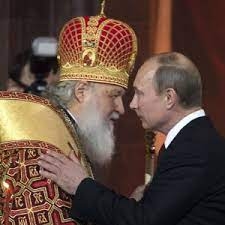
Poutine comprend la souveraineté dans l'esprit du réalisme, avant tout :
- dans le domaine militaro-stratégique
- puis politique,
- enfin, en termes économiques.
La Russie, sous sa direction, réagit donc de manière très aiguë
- à l'élargissement de l'OTAN
- aux tentatives d'ingérence étrangère dans la politique intérieure (pouvant aller jusqu'au changement de régime, ce que l'Occident n'hésite pas à faire, soutenant obstinément les oppositions les plus radicales);
- et, dans une moindre mesure, à la dépendance directe de l'économie russe vis-à-vis des institutions mondiales et des monopoles occidentaux mondiaux.
C'est plus ou moins ainsi que se présente la hiérarchie de la souveraineté et l'école du réalisme dans les RI. Si l'on se limite à cette échelle, les thèmes de la science, de la culture, de la technologie, de l'éducation, des communications de masse, de l'art et, enfin, du comportement quotidien et de la psychologie de la population sont relégués non pas au deuxième, mais au dixième étage. On a l'impression qu'ils n'ont rien à voir avec la souveraineté et, s'ils ont un rapport avec elle, alors c'est un rapport très lointain.
Cela serait vrai si nous acceptions consciemment l'attitude de base selon laquelle nous sommes au sein de la civilisation occidentale moderne, nous partageons ses points de référence et ses valeurs, nous sommes d'accord avec ses règles et ses normes, c'est-à-dire que nous acceptons son code fondamental, son système d'exploitation. Après tout, l'école du réalisme en RI a été créée en Occident et y est restée influente et fait autorité jusqu'à ce jour (malgré la forte montée du libéralisme en RI - surtout au cours des 40 dernières années). En d'autres termes, pour Poutine, la question de la souveraineté russe fait partie d'un paradigme occidental largement accepté. La Russie accepte le code occidental, mais lutte farouchement pour maintenir sa souveraineté au sein de ce paradigme, revendiquant sa place sous le soleil - mais sous un soleil occidental couchant.
C'est là qu'intervient la partie la plus importante. L'Opération militaire spéciale initiée par la Russie est perçu par l'Occident lui-même comme un défi civilisationnel. Francis Fukuyama a écrit un article caractéristique intitulé "La guerre de Poutine contre l'ordre mondial libéral" au tout début de cette opération. Le point important n'est pas seulement le défi lancé au mondialisme et au libéralisme dans les pays européens (qui pourrait également être interprété en termes de réalisme, comme le font par exemple Mearsheimer, Kissinger ou Bannon), mais aussi la remise en question révolutionnaire par la Russie des fondements mêmes de la civilisation occidentale, qui étaient jusqu'à récemment entièrement contrôlés par l'hégémon occidental. C'est pourquoi l'Opération militaire spéciale a soulevé la question de la transition du monde unipolaire au monde multipolaire, qui présentera un ordre mondial absolument différent, dans lequel l'Occident et son code de civilisation ne sont pas quelque chose d'omniprésent et d'universel, mais seulement une partie et quelque chose de localisé, de régional et d'absolument inutile pour tout le reste. Fukuyama a vu dans les actions de Moscou quelque chose de plus grand que Moscou elle-même. C'est le choc des civilisations dont le principal adversaire de Fukuyama, Samuel Huntington, a mis en garde. La Russie est engagée dans un conflit de civilisation, et non un conflit national, avec l'Occident. C'est avec l'Occident en tant que civilisation, en tant que code, et non avec un pays individuel.

Cela explique également la réaction de l'Occident :
- exclure la Russie de son monde (américano-centré),
- de la couper des réseaux économiques et technologiques occidentaux,
- de l'expulser de toutes les structures mondiales contrôlées par l'Occident (et il s'avère que l'Occident les contrôle presque toutes !)
- de l'isoler de ses partenaires non-occidentaux, en la houspillant à la marge par tous les moyens,
- de mobiliser tous les réseaux orientés vers l'Occident en Russie même, afin d'arrêter l'Opération militaire spéciale le plus rapidement possible, de ralentir l'offensive russe et, au minimum, de renverser Poutine.
L'Occident veut montrer que sans l'Occident et sans la complicité de la civilisation occidentale - sans le code occidental - la Russie périra et, si elle insiste, l'Occident contribuera activement à cette disparition.
La situation est la suivante : Moscou, en poursuivant l'Opération militaire spéciale, comprend la souveraineté de manière sectorielle, tandis que l'Occident la comprend de manière totale, non seulement au niveau des intérêts nationaux, mais au niveau du code de la civilisation lui-même, dont la Russie est résolument coupée.
Ce manque de compréhension de notre part entraîne un retard dans la formulation d'une idéologie souveraine et le développement d'une stratégie souveraine à part entière dans tous les domaines de la vie.
Nous n'avons pas encore réalisé à quel point l'Opération militaire spéciale est fondamentale du point de vue de la civilisation. Nous avons commencé quelque chose que nous n'avons pas entièrement compris. Et maintenant, nous sommes surpris de voir à quel point le code occidental a pénétré notre société. Il ne s'agit pas seulement d'une boule de neige d'agents étrangers, de transfuges, d'oligarques, de traîtres et de russophobes. Il ne s'agit là que d'un symptôme. L'enjeu réel relève de la nécessité de faire un effort incroyable, national et populaire, pour soutenir la souveraineté civile. Cela signifie tout d'abord établir - en partie pour se souvenir, en partie pour recréer - notre propre code russe. Cela nécessite des changements radicaux dans des sphères qui ne sont clairement pas une priorité pour le gouvernement: la philosophie, la science, la culture, l'éducation, l'art, la conscience sociale, la psychologie et même la mode et le style. C'est ce qu'on appelle "l'idéologie", sauf qu'aujourd'hui nous ne parlons pas des options idéologiques offertes par l'Occident moderne (libéralisme, socialisme, nationalisme), mais d'une idéologie de civilisation spécifique - l'idéologie civilisationnelle russe - qui va au-delà des clichés occidentaux. Par convention, nous pouvons l'appeler la "quatrième théorie politique", au-delà du libéralisme, du communisme et du fascisme.
Nous entrons inévitablement dans une nouvelle phase de la bataille pour le code russe et, si vous voulez, cette bataille ne dépend pas directement du succès et de la rapidité de l'Opération militaire spéciale. Notre excommunication prononcée par l'Occident a déjà eu lieu. L'Occident a déjà porté un jugement sans appel sur la Russie. Il est impossible de corriger la situation et de tout ramener à ce qu'elle était avant le 24 février 2022. Nous devons accepter pleinement et profondément les conséquences du défi civilisationnel que nous avons nous-mêmes provoqué.
17:17 Publié dans Actualité, Affaires européennes, Nouvelle Droite | Lien permanent | Commentaires (0) | Tags : actualité, alexandre douguine, nouvelle droite, nouvelle droite russe, russie, europe, affaires européennes |  |
|  del.icio.us |
del.icio.us |  |
|  Digg |
Digg | ![]() Facebook
Facebook
dimanche, 05 juin 2022
Alexandre Douguine: la philosophie gagnante
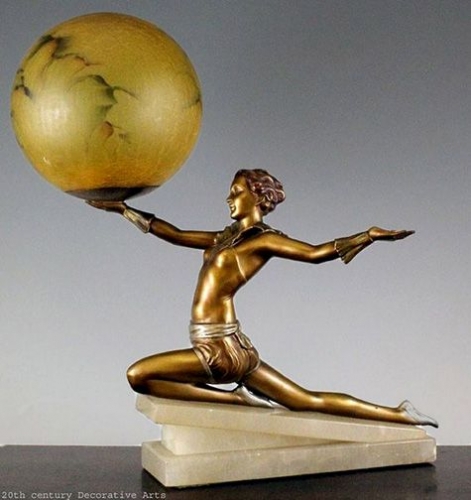
La philosophie gagnante
Alexandre Douguine
Source: https://www.geopolitika.ru/en/article/winning-philosophy?fbclid=IwAR0XdgpI5Ub792MgePrqc09IXFY3Ryt4BTMcLvSOX0EdASDw-j3DGR-bXjo
Des réformes internes significatives devraient logiquement commencer en Russie. C'est ce qu'exige l'OMS, qui, à l'extrême, a aggravé les contradictions avec l'Occident - avec toute la civilisation occidentale moderne. Aujourd'hui, tout le monde peut voir qu'il n'est plus sûr d'utiliser simplement les normes, les méthodes, les concepts, les produits de cette civilisation. L'Occident répand son idéologie en même temps que ses technologies, imprégnant toutes les sphères de la vie. Si nous nous reconnaissons comme faisant partie de la civilisation occidentale, nous devrions accepter volontairement cette colonisation totale et même en profiter (comme dans les années 1990), mais dans le cas de la confrontation actuelle - qui est fatale ! - cette attitude est inacceptable. De nombreux occidentaux et libéraux en ont pris pleinement conscience et ont quitté la Russie au moment même où la rupture avec la civilisation occidentale était devenue irréversible; et la situation est bel et bien devenue irréversible le 24 février 2022, et même deux jours plus tôt - au moment de la reconnaissance de l'indépendance de la RPD et de la RPL - le 22 février 2022.
En principe, chacun a le droit de faire un choix de civilisation entre la loyauté et la trahison. Le libéralisme est en train de perdre en Russie et les libéraux sont cohérents lorsqu'ils partent. C'est plus compliqué avec ceux qui sont encore là. Je fais référence aux Occidentaux et aux libéraux qui partagent encore les normes de base de la civilisation occidentale moderne, mais qui, pour une raison quelconque, continuent à rester en Russie malgré le fossé qui s'est déjà formé entre la Russie et l'Occident; ils constituent le principal obstacle à des réformes patriotiques authentiques et significatives.
Les réformes sont inévitables car la Russie se retrouve non seulement coupée de l'Occident, mais essentiellement en guerre avec lui. À la veille de la Grande Guerre patriotique, l'URSS disposait d'un nombre suffisant d'importantes entreprises stratégiques créées par l'Allemagne nazie, et les relations entre l'URSS et le Troisième Reich n'étaient pas particulièrement hostiles ; mais après le 22 juin 1945, la situation a évidemment changé radicalement. Dans ces circonstances, la poursuite de la coopération avec les Allemands - légitime et encouragée avant la guerre - a pris une toute autre signification. Il s'est passé exactement la même chose après le 22 février 2022: ceux qui ont continué à rester dans le paradigme de la civilisation hostile - libérale-fasciste - avec laquelle nous étions en guerre, se sont retrouvés en dehors de l'espace idéologique qui avait clairement émergé avec le début de la Seconde Guerre mondiale.
Entre-temps, la présence de l'Allemagne à la veille de la Seconde Guerre mondiale a été identifiée en URSS, tandis que la présence de l'Occident libéral-fasciste russophobe à la veille de l'OMS était presque totale. Les technologies méthodologiques, les normes, le savoir-faire et, dans une certaine mesure, les valeurs occidentales imprègnent toute notre société. C'est ce qui nécessite une refonte radicale. Mais qui y parviendra ? Les personnes qui ont été formées pendant la perestroïka ? Les libéraux et les criminels des années 1990 ? Les personnes des années 1980 et 1990 qui ont été formées et éduquées dans les années 2000 ? Toutes ces périodes ont été fondamentalement influencées par le libéralisme en tant qu'idéologie, en tant que paradigme, en tant que position fondamentale et globale dans la philosophie, la science, la politique, l'éducation, la culture, la technologie, l'économie, les médias, et même la mode et la vie quotidienne. La Russie contemporaine ne connaît que les vestiges inertes du paradigme soviétique et tout le reste est pur occidentalisme libéral.

Il n'existe tout simplement pas de paradigme alternatif, du moins aucun au pouvoir ou parmi les élites, au niveau où devrait se dérouler la confrontation actuelle des civilisations.
Aujourd'hui, nous opposons l'Occident en tant que civilisation contre "la" civilisation, et nous devons préciser quel type de civilisation nous sommes, sinon aucun succès militaire, politique et économique ne nous aidera et tout sera réversible, la tendance changera et tout s'effondrera. Je ne parle même pas de la nécessité d'expliquer aux Ukrainiens qu'à partir de maintenant ils seront dans notre zone d'influence ou directement en Russie, qui sommes-nous après tout ? Pour le moment, il n'y a que l'inertie de la mémoire soviétique ("la grand-mère avec le drapeau"), la propagande nazie occidentale ("vatniki", "occupants"), nos succès militaires - pour l'instant seulement initiaux - et... la confusion totale de la population locale. Ici, la voix de la civilisation russe doit être entendue. Clairement, distinctement, de manière convaincante, et ses bruits devraient être entendus en Ukraine, en Eurasie et dans le monde entier. Ce n'est pas seulement souhaitable, c'est vital, tout comme les munitions, les missiles, les hélicoptères et les gilets pare-balles sont nécessaires au front.
L'endroit le plus logique pour commencer les réformes est la philosophie. Il est nécessaire de former du personnel au Logos russe, soit sur la base d'une institution existante (après tout, aujourd'hui, aucune institution humanitaire ne fait, ne peut ou ne veut le faire - le libéralisme et l'occidentalisme dominent encore partout), soit sous la forme de quelque chose de fondamentalement nouveau. Hegel disait que la grandeur d'une nation commence par la création d'une grande philosophie. Il l'a dit et il l'a aussi fait. C'est exactement ce dont les philosophes russes ont besoin aujourd'hui, et non d'un vague accord à l'emporte-pièce avec l'Opération Militaire Spéciale. Nous avons besoin d'une nouvelle philosophie russe. Russe dans son contenu, dans son essence.
Par conséquent, la réforme de toutes les autres branches des sciences humaines et des sciences naturelles devrait partir de ce paradigme. La sociologie, la psychologie, l'anthropologie, la culturologie, ainsi que l'économie, et même la physique, la chimie, la biologie, etc. sont basées sur la philosophie, en sont des dérivés. Les scientifiques l'oublient souvent, mais écoutez comment sonne le synonyme occidental de PhD : n'importe laquelle des sciences humaines et naturelles ! - Ph.D. - Docteur en philosophie. Si vous n'êtes pas philosophe, vous êtes au mieux un apprenti, pas un scientifique (docteur est le mot latin pour "érudit", "savant").
C'est ici que se déroulera la bataille interne la plus importante pour l'initiation de réformes civilisatrices en Russie même (ainsi que dans tout l'espace de notre expansion, toute la zone de notre influence): la bataille pour la philosophie russe.
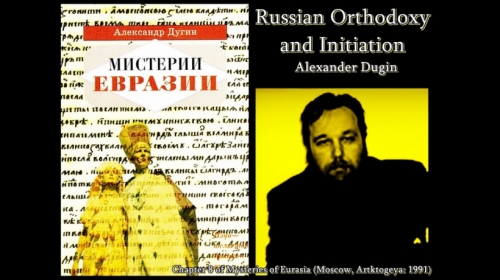
Il y a ici un pôle clairement modélisé de l'ennemi interne. Il s'agit des représentants du paradigme libéral, de la philosophie analytique au post-modernisme en passant par les cognitivistes et les transhumanistes, qui insistent de façon maniaque pour réduire l'homme à une machine. Je ne parle même pas des libéraux et des progressistes, des partisans du concept totalitaire de "société ouverte", du féminisme, des études et de la culture queer, élevés à la bourse des fraternités. Il s'agit d'une pure "cinquième colonne", quelque chose qui ressemble au bataillon Azov interdit en Russie.
Le portrait de l'ennemi philosophique de l'Idée russe, de la civilisation russe, est très facile à tracer. Il ne s'agit pas simplement de liens avec les centres scientifiques et de renseignement occidentaux (qui sont souvent des concepts assez proches), mais aussi de l'adhésion à un certain nombre d'attitudes plutôt formalisables :
- la croyance en l'universalité de la civilisation occidentale moderne (eurocentrisme, racisme civilisationnel),
- l'hyper-matérialisme, en passant par l'écologie profonde et l'ontologie orientée objet,
- l'individualisme méthodologique et éthique - d'où la philosophie du genre (comme option sociale) et, à la limite, le transhumanisme,
- le techno-progressisme, le développement de l'intelligence artificielle et des réseaux neuronaux "pensants",
- la haine des théologies classiques, de la Tradition spirituelle, de la philosophie de l'éternité,
- le déni de l'identité ou son dénigrement par ironie, en la ridiculisant,
- l'anti-essentialisme, etc...
Il s'agit d'une sorte d'"Ukraine philosophique", disséminée dans presque toutes les institutions scientifiques et universitaires qui ont un rapport quelconque avec la philosophie ou les épistèmes scientifiques de base. Ce sont des signes de russophobie philosophique, puisque l'Idée russe est construite sur la base de principes directement opposés.
- L'identité de la civilisation russe (slavophiles, danilovistes, eurasiens),
- le fait de placer l'esprit avant la matière,
- la communauté, la collégialité - une anthropologie collectiviste,
- un humanisme profond,
- la dévotion à la tradition,
- la préservation minutieuse de l'identité, de la nationalité,
- la croyance en la nature spirituelle de l'essence des choses, etc.
Ceux qui donnent le ton à la philosophie russe contemporaine défendent avec véhémence les attitudes libérales et rejettent avec la même véhémence les attitudes russes. C'est un puissant bastion du nazisme libéral en Russie.
C'est ce point du champ de tir de l'ennemi, cette hauteur, qu'il faut conquérir dans la phase suivante, et les nazis libéraux se défendent contre la philosophie avec la même férocité qu'Azov ou les terroristes ukrainiens désespérés de Popasna. Ils mènent des guerres d'information, écrivent des dénonciations sur les patriotes et utilisent tous les leviers de la corruption et de l'influence des appareils.
Il convient maintenant de rappeler une petite histoire - personnelle, mais très révélatrice - concernant mon renvoi de la MSU à l'été 2014 (notez la date) [Ed. Dugin en 2014 a été démis de sa chaire à l'Université d'État de Moscou au moment où le "printemps russe" dans le Donbass a échoué]. De 2008 à 2014, au département de sociologie de l'université d'État de Moscou, avec le recteur et fondateur du département, Vladimir Ivanovitch Dobrenkov (photo), nous avons organisé un centre actif d'études conservatrices, où nous nous occupions précisément de cela : le développement d'un paradigme épistémologique de la civilisation russe.

Nous n'avions pas hésité à soutenir le Printemps russe. En réponse, cependant, nous avons reçu une pétition cinglante de... philosophes ukrainiens (promue par le nazi de Kiev Sergey Datsyuk) appelant à "l'expulsion de Dobrenkov et de moi-même de l'Université d'État de Moscou" ; le plus étrange - mais à l'époque ce n'était pas très étrange - est que la direction de la MSU a fait exactement cela. Dobrenkov a été démis de ses fonctions de recteur et moi, franchement, je suis parti de mon propre chef, même si cela ressemblait à un licenciement. On m'a également proposé de rester, mais à des conditions humiliantes. Bien sûr, ce n'est pas Sadovnichy, qui s'était auparavant montré très courtois et ouvert, qui a approuvé ma nomination à la tête du département et a suivi toutes les procédures de vote du conseil académique de la MSU. Mais quelque chose s'est ensuite produit : le Printemps russe a été mis en veilleuse et la question du monde russe, de la civilisation russe et du Logos russe a été complètement retirée de l'ordre du jour ; toutefois, ceci est symbolique : les promoteurs de la suppression du Centre d'études conservatrices de l'Université d'État de Moscou étaient des nationalistes ukrainiens, des théoriciens et des praticiens du génocide russe dans le Donbass et dans l'ensemble de l'Ukraine orientale, exactement ceux avec qui nous sommes en guerre actuellement.
C'est ainsi que le nationalisme libéral a pénétré à l'intérieur de la Russie. Ou plutôt, il y a pénétré il y a longtemps, mais c'est ainsi que ses mécanismes fonctionnent. Une plainte vient de Kiev, quelqu'un au sein de l'administration la soutient, et une autre initiative visant à déployer l'Idée russe s'effondre. Bien sûr, vous ne pouvez pas m'arrêter: au fil des ans, j'ai écrit 24 volumes de ma "Noomachia", et les trois derniers sont consacrés au Logos russe, mais l'institutionnalisation de l'Idée russe a encore été retardée. Mon exemple, bien sûr, n'est pas un cas isolé. Quelque chose de similaire a été vécu par tous ou presque les penseurs et théoriciens engagés dans la justification de l'identité de la civilisation russe. Il s'agit d'une guerre philosophique, d'une opposition féroce et bien organisée à l'Idée russe, supervisée depuis l'étranger, mais menée par des libéraux locaux ou de simples fonctionnaires, qui suivent passivement les modes, les tendances et une stratégie d'information bien organisée d'agents d'influence directs.
Nous en sommes maintenant au point où l'institutionnalisation du discours russe est nécessaire. Tout le monde a vu dans notre guerre de l'information à quel point les humeurs et les processus de la société sont contrôlables et manipulables. Les affrontements les plus graves se produisent au niveau des paradigmes et des épistèmes. Celui qui contrôle le savoir, écrivait Michel Foucault, détient le vrai pouvoir. Le vrai pouvoir est le pouvoir sur l'esprit et l'âme des gens.
La philosophie est la ligne de front la plus importante, dont les conséquences sont bien plus importantes que les nouvelles d'Ukraine, que chaque Russe recherche si avidement en se demandant comment vont les soldats, quelles nouvelles lignes ont été saisies, ou si l'ennemi a faibli. C'est là que réside le principal obstacle à notre victoire.
Nous avons besoin d'une philosophie de la victoire. Sans elle, tout sera vain et tous nos succès se transformeront facilement en défaites.
Toutes les véritables réformes doivent commencer dans le royaume de l'Esprit. Et puisqu'il faut chercher des nouvelles du front dans les actualités - eh bien, qu'en est-il de l'Institut de philosophie ? Toujours debout ? A-t-il déjà capitulé ?
12:15 Publié dans Actualité, Nouvelle Droite, Philosophie | Lien permanent | Commentaires (0) | Tags : philosophie, actualité, russie, alexandre douguine, nouvelle droite, nouvelle droite russe, logos russe |  |
|  del.icio.us |
del.icio.us |  |
|  Digg |
Digg | ![]() Facebook
Facebook
mercredi, 01 juin 2022
De l'Etat-Civilisation

De l'Etat-Civilisation
Alexandre Douguine
Source: https://www.geopolitika.ru/article/gosudarstvo-civilizaciya
L'OSU est unanimement reconnue par les experts compétents en relations internationales comme étant l'accord final et décisif qui amènera la transition d'un monde unipolaire à un monde multipolaire.
La multipolarité semble parfois intuitivement et claire, mais dès que nous essayons de donner des définitions précises ou une description théorique correcte, les choses deviennent moins claires. Je pense que mon ouvrage "Théorie d'un monde multipolaire" est plus pertinent que jamais. Mais comme les gens ne peuvent plus lire, surtout les longs textes théoriques, je vais essayer de partager ici les points principaux.
L'acteur principal dans un ordre mondial multipolaire n'est pas l'État-nation (comme dans la théorie du réalisme en relations internationales) mais pas non plus un gouvernement mondial unifié (comme dans la théorie du libéralisme en relations internationales). C'est l'État-civilisation. D'autres noms lui sont donnés : le "grand espace", l'"Empire", l'"œcumène".
Le terme "État-civilisation" est le plus souvent appliqué à la Chine. À la fois à la Chine ancienne et moderne. Dès l'Antiquité, les Chinois ont développé la théorie du "Tianxia" (天下), "Empire céleste", selon laquelle la Chine est le centre du monde, étant le point de rencontre du Ciel unificateur et de la Terre diviseuse. L'"Empire céleste" peut être un État unique, ou être démantelé en ses composants, puis réassemblé. En outre, la Chine Han proprement dite peut également servir d'élément culturel constitutif pour les nations voisines qui ne font pas directement partie de la Chine - avant tout, pour la Corée, le Vietnam, les pays d'Indochine et même le Japon, qui a acquis son indépendance.

L'État-nation est un produit du Nouvel Âge européen, et dans certains cas une construction post-coloniale. L'État-Civilisation a des racines anciennes et... des frontières mouvantes, incertaines. L'État-civilisation est tantôt poussé en avant, tantôt élargi, tantôt contracté, mais reste toujours un phénomène permanent. (C'est, avant tout, ce que nous devons savoir sur notre SSO).
La Chine moderne se comporte strictement selon le principe du "Tianxia" en politique internationale. L'initiative "One Belt, One Road" est un exemple brillant de ce à quoi cela ressemble dans la pratique. L'Internet de la Chine, qui ferme tous les réseaux et ressources susceptibles d'affaiblir son identité civilisationnelle, montre comment les mécanismes de défense sont mis en place.
L'Etat-civilisation peut interagir avec le monde extérieur, mais elle n'en devient jamais dépendante et conserve toujours son autosuffisance, son autonomie et son autarcie.
L'État-civilisation est toujours plus qu'un simple État, tant sur le plan spatial que temporel (historique).
La Russie gravite de plus en plus vers le même statut. Après le début du "Nouvel ordre mondial", ce n'est plus un simple vœu pieux, mais une nécessité urgente. Comme dans le cas de la Chine, la Russie a toutes les raisons de prétendre être précisément une civilisation. Cette théorie a été développée de manière plus complète par les Eurasiens russes, qui ont introduit la notion d'un "État-monde" ou - ce qui est la même chose - d'un "monde russe". En fait, le concept de Russie-Eurasie est une indication directe du statut civilisationnel de la Russie. La Russie est plus qu'un État-nation (ce qu'est la Fédération de Russie). La Russie est un monde à part.
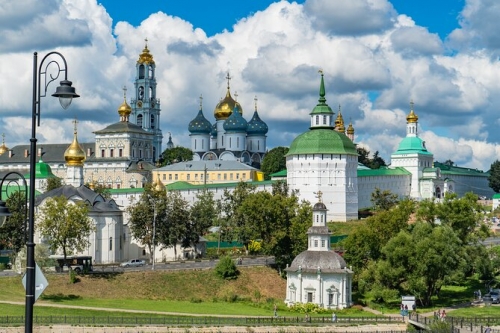
La Russie était une civilisation à l'époque de l'Empire, et elle est restée la même pendant la période soviétique. Les idéologies et les régimes ont changé, mais l'identité est restée la même.
Le combat pour l'Ukraine n'est rien d'autre qu'un combat pour l'État-civilisation. Il en va de même pour l'État d'union pacifique de la Russie et du Belarus et l'intégration économique de l'espace eurasien post-soviétique.
Un monde multipolaire est composé d'États et de civilisations. C'est une sorte de monde des mondes, un mégacosmos qui inclut des galaxies entières. Et ici, il est important de déterminer combien de ces États-Civilisations peuvent exister, même théoriquement.
Sans aucun doute, l'Inde appartient à ce type, c'est un État-civilisation typique, qui possède aujourd'hui encore suffisamment de potentiel pour devenir un acteur à part entière de la politique internationale.

Ensuite, il y a le monde islamique, de l'Indonésie au Maroc. Ici, la fragmentation en États et en différentes enclaves ethnoculturelles ne nous permet pas encore de parler d'unité politique. Il existe une civilisation islamique, mais son amalgame dans une civilisation d'État s'avère plutôt problématique. En outre, l'histoire de l'Islam connaît plusieurs types d'états-civilisations - des califats (le Premier, puis celui des Omeyyades, des Abbassides, etc.) aux trois parties de l'Empire de Gengis Khan converties à l'Islam (la Horde d'or, l'Ilkhan et le Chagatai ulus), la puissance perse des Safavides, l'État moghol et, enfin, l'Empire ottoman. Les frontières autrefois tracées sont à bien des égards toujours d'actualité. Toutefois, le processus consistant à les rassembler en une seule structure nécessite un temps et des efforts considérables.
L'Amérique latine et l'Afrique, deux macro-civilisations qui restent plutôt divisées, sont dans une position similaire. Mais un monde multipolaire impulsera d'une manière ou d'une autre les processus d'intégration dans toutes ces zones.
Maintenant, la chose la plus importante: que faire de l'Ouest ? La théorie du monde multipolaire dans la nomenclature des théories des relations internationales est absente de l'Occident moderne.
Le paradigme dominant y est aujourd'hui le libéralisme, qui nie toute souveraineté et toute autonomie, abolit les civilisations et les religions, les ethnies et les cultures, les remplaçant par une idéologie libérale outrancière, par le concept des "droits de l'homme", par l'individualisme (conduisant à l'extrême à des politiques gendéristes et favorable à la manie transgenre), par le matérialisme et par le progrès technique élevé à la plus haute valeur (via l'Intelligence Artificielle). L'objectif du libéralisme est d'abolir les États-nations et d'établir un gouvernement mondial basé sur les normes et règles occidentales.
C'est la ligne poursuivie par Biden et le parti démocrate moderne aux États-Unis et la plupart des dirigeants européens. Voilà ce qu'est le mondialisme. Il rejette catégoriquement l'Etat-Civilisation et toute velléité de multipolarité. C'est pourquoi l'Occident est prêt pour une guerre avec la Russie et la Chine. Dans un sens, cette guerre est déjà en cours - en Ukraine et dans le Pacifique (avec le problème de Taïwan), mais jusqu'à présent en s'appuyant sur des acteurs qui mènent leur combat par procuration.
Il existe une autre école influente en Occident - le réalisme dans les relations internationales. Ici, l'État-nation est considéré comme un élément nécessaire de l'ordre mondial, mais seuls ceux qui ont pu atteindre un haut niveau de développement économique, militaro-stratégique et technologique - presque toujours aux dépens des autres - possèdent la souveraineté. Alors que les libéraux voient l'avenir dans un gouvernement mondial, les réalistes voient une alliance de grandes puissances occidentales fixant des règles mondiales en leur faveur. Encore une fois - tant en théorie qu'en pratique, cet Occident rejette catégoriquement toute idée d'une civilisation d'État et d'un monde multipolaire.


Cela crée un conflit fondamental déjà au niveau théorique. Et le manque de compréhension mutuelle conduit ici aux conséquences les plus radicales au niveau de la confrontation directe.
Aux yeux des partisans de la multipolarité, l'Occident est aussi une civilisation-état, voire deux - celle de l'Amérique du Nord et celle de l'Europe. Mais les intellectuels occidentaux ne sont pas d'accord: ils n'ont pas de cadre théorique pour cela - ils connaissent soit le libéralisme soit le réalisme et non pas la multipolarité.
Cependant, il existe aussi des exceptions parmi les théoriciens occidentaux - comme Samuel Huntington ou Fabio Petito. Ils reconnaissent - contrairement à la grande majorité - la multipolarité et l'émergence de nouveaux acteurs sous la forme de civilisations. C'est réjouissant car de telles idées peuvent jeter un pont entre les partisans de la multipolarité (Russie, Chine, etc.) et l'Occident. Un tel pont rendrait au moins les négociations possibles. Tant que l'Occident rejettera catégoriquement la multipolarité et la notion même d'État-civilisation, le débat ne sera mené qu'au niveau de la force brute - de l'action militaire au blocus économique, en passant par les guerres d'information et par les sanctions, etc.
Pour gagner cette guerre et se défendre, la Russie elle-même doit d'abord comprendre clairement ce que signifie réellement la multipolarité. Nous nous battons déjà pour elle, et nous ne comprenons pas encore tout à fait ce qu'elle est. Il est urgent de dissoudre les think tanks libéraux créés pendant la période Gorbatchev-Eltsine et d'établir de nouveaux think tanks multipolaires. Le paradigme éducatif lui-même doit également être restructuré - en premier lieu au MGIMO, au MGU, au PFUR, à l'Institut Maurice Thorez, à l'Académie diplomatique et aux universités concernées. Enfin, nous devons vraiment nous tourner vers une école de pensée eurasienne à part entière, qui s'est avérée être d'une pertinence maximale, mais contre laquelle les atlantistes et les agents étrangers déclarés et dissimulés, qui ont pénétré profondément dans notre société, continuent de se battre.
20:16 Publié dans Définitions, Nouvelle Droite | Lien permanent | Commentaires (0) | Tags : actualité, nouvelle droite, nouvelle droite russe, alexandre douguine, multipolarité |  |
|  del.icio.us |
del.icio.us |  |
|  Digg |
Digg | ![]() Facebook
Facebook
lundi, 30 mai 2022
Civilisations et nations : l'ordre mondial multipolaire de Douguine
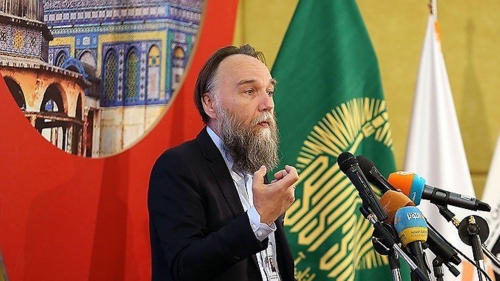
Civilisations et nations: l'ordre mondial multipolaire de Douguine
Par Valentina Schacht
Source: https://www.compact-online.de/zivilisationen-und-nationen-dugins-multipolare-weltordnung/?mc_cid=fbd916d5ee&mc_eid=128c71e308
Le philosophe et expert en géopolitique russe Alexandre Douguine aspire à un ordre mondial entièrement nouveau. La guerre en Ukraine en est-elle le prélude ? Dans son dernier livre "Le grand réveil contre le grand reset", il a développé sa pensée de manière décisive.
L'ouvrage d'Alexandre Douguine "Fondements de la géopolitique" (1997) est considéré comme une lecture standard dans les académies militaires russes. Le philosophe et politologue, qui a occupé la chaire de sociologie des relations internationales à l'université Lomonossov de Moscou, y divise la Terre en trois grandes régions principales du point de vue géopolitique: l'île mondiale (Etats-Unis et Grande-Bretagne), l'Eurasie (Europe centrale, Russie et Asie) et les terres marginales (les Etats situés entre les deux grandes régions citées précédemment).

Ses réflexions se fondent sur l'eurasisme, une école de pensée philosophique et géopolitique développée dans les années 1920 par des exilés russes autour de Nikolai Trubetzkoy et centrée sur l'idée d'une opposition fondamentale entre la puissance continentale russe et les puissances maritimes anglo-saxonnes.
Selon Douguine, qui a actualisé l'eurasisme, il existait et il existe toujours un conflit permanent entre les deux pôles d'un point de vue géostratégique, mais aussi idéologique: mondialisation et universalisme contre ordre mondial multipolaire et préservation des spécificités culturelles de chacun.
Abandon de l'État-nation ?
Au cœur de la critique de Douguine se trouve la prétention au leadership mondial du libéralisme (et du capitalisme) occidental, qu'il considère - sur ce point, il est d'accord avec son compagnon de route d'un temps, Alain de Benoist - comme la plus grande menace pour les peuples ou comme "l'ennemi principal".
Washington s'efforce d'imposer ce leadership soit par la séduction, soit par des méthodes subversives comme les "révolutions de couleur", soit carrément par la force militaire dans le monde entier. Ceux qui ne se soumettent pas volontairement au diktat du capital financier, à la doctrine du libre-échange ou à des idées telles que l'approche gendériste de l'égalité entre les hommes et les femmes, seront victimes de soulèvements populaires mis en scène et/ou de la guerre, affirme Douguine tout de go.

Comme alternative à la mondialisation, Douguine esquisse son "idée eurasienne" ethnopluraliste, qui ne se limite pas à l'espace russo-asiatique et qui s'inspire explicitement du concept de grand espace de Carl Schmitt. Il écrit à ce sujet :
"L'idée eurasienne réunit en elle toutes les approches critiques de la mondialisation. L'eurasisme rejette catégoriquement la vision occidentale du monde selon laquelle la planète est divisée en un centre (le monde anglo-saxon et l'Europe) et des périphéries éloignées (l'Amérique du Sud, l'Afrique, l'Asie). Au lieu de cela, l'idée eurasienne voit le monde comme un ensemble d'espaces de vie politiques, culturels et économiques totalement différents qui correspondent les uns aux autres".
Douguine considère que l'ordre international avec les États-nations comme acteurs politiques souverains, le "système de la paix de Westphalie", est obsolète. Dans les faits, le pouvoir réel serait déjà détenu depuis longtemps par de toutes autres structures - supranationales ou même économiques.
Estimant que cet ordre westphalien ne peut plus être réinstallé, il plaide pour un système de relations internationales avec des "civilisations" (terme qu'il reprend de Samuel Huntington, mais en le réinterprétant selon son point de vue) comme nouveaux acteurs.
Souvent taxé de "nationaliste grand-russe", Douguine s'est démarqué du nationalisme depuis des années :
"Je ne suis pas moi-même un nationaliste, mais un traditionaliste".
Il poursuit :
"Il y a une nécessité géopolitique pour une fédération ou une alliance européenne, quelle qu'en soit la forme, si le continent veut jouer un rôle à l'avenir".
Dans ses "Fondements de la géopolitique", il écrit même :
"Le monde multipolaire ne considère pas la souveraineté des États-nations existants comme une vache sacrée, car cette souveraineté repose sur une base purement juridique et n'est pas soutenue par un potentiel militaire et politique suffisamment fort".
Dans les circonstances actuelles, "seul un bloc ou une coalition d'États peut prétendre à une véritable souveraineté".
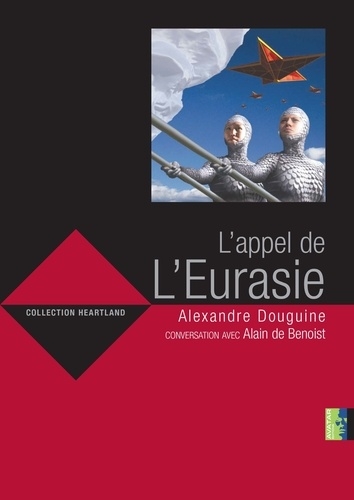
Ensemble plutôt que les uns contre les autres
Outre la "civilisation" occidentale (Amérique du Nord et Europe occidentale), Douguine en identifie six autres, à savoir la civilisation orthodoxe ou eurasienne (les États de l'ex-Union soviétique et certaines parties de l'Europe de l'Est et du Sud), la civilisation islamique (Afrique du Nord, Asie occidentale et centrale et certaines parties de la région Pacifique), la civilisation chinoise (Chine, Taïwan et les États de l'ASEAN), la civilisation indienne (Inde, Népal et Maurice), la civilisation latino-américaine (Amérique du Sud et centrale) et la civilisation japonaise (Japon).
Ce modèle ne tient pas compte de l'Afrique, que Douguine considère comme une "civilisation potentielle" qui a encore besoin de temps pour se développer pleinement et entrer sur la scène politique mondiale.
En ce qui concerne les "civilisations", les nouveaux "pôles du monde multipolaire", il affirme qu'elles doivent être souveraines et dotées d'un centre de pouvoir légal "d'un point de vue juridique formel". Et il écrit :
"La zone dans laquelle une civilisation exerce son pouvoir de domination et fixe les règles du jeu en vigueur doit être différenciée et tenir dûment compte de la composition ethnique et confessionnelle de sa population".
Outre les groupes confessionnels, les classes sociales devraient également être représentées de manière adéquate et "légalement représentées" dans la "civilisation" concernée. Son objectif est en fin de compte une coexistence et une cohabitation plutôt qu'une opposition entre les civilisations et également entre les groupes de population au sein d'une même civilisation.

En exclusivité chez COMPACT : dans son dernier ouvrage "Le grand réveil contre la grande réinitialisation", Alexander Douguine appelle les Européens à une résistance sans compromis contre les élites mondiales. Un appel à la lutte contre le mondialisme, le transhumanisme, les expériences génétiques et la transformation du monde selon les idées de Klaus Schwab et de son Forum économique mondial. Commander ici: https://www.compact-shop.de/shop/buecher/alexander-dugin-das-grosse-erwachen-gegen-den-great-reset/
20:08 Publié dans Actualité, Nouvelle Droite | Lien permanent | Commentaires (1) | Tags : alexandre douguine, nouvelle droite, nouvelle droite russe |  |
|  del.icio.us |
del.icio.us |  |
|  Digg |
Digg | ![]() Facebook
Facebook
mardi, 24 mai 2022
Guillaume Faye et la vision archéofuturiste

Guillaume Faye et la vision archéofuturiste
Par Robert Steuckers
L’idée de coupler la tradition mythologique et philosophique grecque avec l’élan futuriste agitait l’esprit de Guillaume Faye dès le moment où je l’ai connu et ai travaillé avec lui entre 1979 et 1987. Ces années furent les plus fécondes de son itinéraire intellectuel. Guillaume Faye avait été profondément marqué par ses professeurs de grec et de latin lors de ses années de lycée. Il avait lu Platon, se réclamait du réalisme d’Aristote, lectures qu’il avait complétées par une immersion dans les travaux de Mircea Eliade, de Walter Otto et de Georges Dumézil. Faye était aussi un disciple du philosophe italien Giorgio Locchi qui fut le véritable mentor de ce que l’on allait appeler plus tard, par simplification journalistique, la « Nouvelle Droite ». Sans Locchi, elle n’aurait pas été ce qu’elle est, en dépit de l’ostracisme subi injustement par le penseur italien, après 1979, année de son retrait définitif. Pour Locchi, l’idée européenne véritable, malheureusement refoulée par la modernité, repose sur une solide assise mythique, notamment la structure trifonctionnelle des sociétés indo-européennes, mise en exergue par l’œuvre de Georges Dumézil et que les Allemands du 19ème siècle nommaient plus simplement le triplet de « Lehr- Wehr- und Nährstände ». Locchi, qui était aussi un très fin musicologue, estimait que la musique européenne, depuis Bach, contribuait à entamer et à fragmenter la chape étouffante sous laquelle le « mythe européen » était prisonnier. Pour Locchi, Richard Wagner, par le truchement du « Wort- und Tondichtung » de ses opéras, apportait les coups de marteau décisifs pour libérer le mythe européen de sa prison pluriséculaire, et pour faire enfin advenir une structuration des sociétés européennes conformes à la teneur de ce mythe et, partant, de rétablir une forme politique entièrement dégagée de la cangue chrétienne, scholastique, cartésienne et kantienne. Raisonnant au-delà de la querelle qui opposa Wagner à Nietzsche, Locchi puisait dans l’œuvre de Nietzsche tous les éléments susceptibles de conforter sa thèse libératrice, tandis que Pierre Chassard, qui sera également « épuré » et ostracisé dans les rangs de la « Nouvelle Droite », fustigeait, dans son ouvrage sur Nietzsche, les platonismes incapacitants qui avaient affaibli l’Europe au cours des siècles postérieurs à l’effondrement du monde antique. Faye aimait la République de Platon mais ne voulait pas pour autant laisser les Européens de la seconde moitié du 20ème siècle végéter dans la caverne et se contenter d’ombres sur les parois de celle-ci. Le retour du mythe européen, le retour au soleil des Européens prisonniers de la caverne, la philosophie au marteau de Nietzsche qui brisait les idoles vermoulues de la vieille Europe malade : tels étaient les aspirations du binôme Locchi/Faye et aussi de Chassard, retourné bien vite dans l’Eifel où il avait élu domicile.
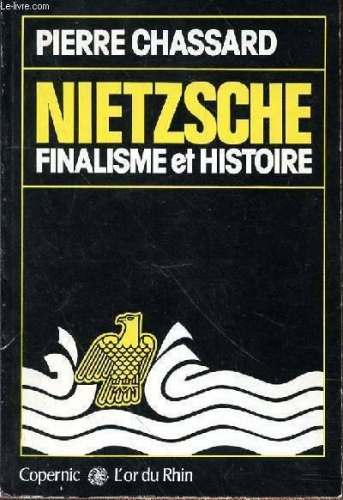
La synthèse que proposait Faye n’a guère été explicitée par l’écriture, à l’exception toutefois d’un petit opuscule d’une rare densité, que ses « camarades » avaient négligé et méprisé, avaient jugé digne de la corbeille à papiers. J’ai sauvé ce tapuscrit de la destruction et mon ami Jean-Marie Simar, de Liège, en réalisa une édition modeste, artisanale avec les premiers ordinateurs personnels. Cet opuscule, introuvable aujourd’hui, était intitulé « Europe et Modernité » : Faye y constatait que la modernité, celle des Lumières du 18ème siècle, prenait fin et qu’une postmodernité s’annonçait qui allait mettre fin à tous les blocages, tous les platonismes incapacitants et toutes les formes de déclin que les Lumières et l’idéologie égalitariste de la révolution française avaient imposés à nos peuples. Armin Mohler, sur base des travaux de Wolfgang Welsch, pensait également qu’une postmodernité radicalement différente des Lumières allait émerger suite à la disparition du Rideau de fer. Il n’en fut rien. La postmodernité que l’on nous sert comme plat principal aujourd’hui est pire que les pires travers des Lumières. Pour Faye, au moment où il rédige son manuscrit qui sera boycotté, il y a implosion de la modernité, retour à des formes tribales et communautaires (comme le constate son ami le philosophe Michel Maffesoli), désaccords rédhibitoires entre les tenants autoproclamés des Lumières (Adorno, Horkheimer, Habermas, Lévy, etc.), etc. Faye et Mohler, chacun dans leur coin, croient que l’on peut impulser le mouvement postmoderne de désagrégation de la modernité dans le sens d’une sorte de restauration prémoderne, impliquant la restauration du politique (des Politischen) selon la définition qu’en donnaient Carl Schmitt et Julien Freund (par ailleurs ami de Faye et compagnon d’agapes mémorables… !).

La modernité officielle, pour le Nietzschéen Faye est la « conscience christianomorphe », c’est-à-dire la conscience qui est marquée par toutes sortes de gnosticismes déréalisants que le christianisme a véhiculés jusqu’à leur laïcisation par les lumières anglaises et françaises du 18ème siècle et que l’église, parfois, a combattu en réclamant, via le thomisme, un retour au réalisme d’Aristote, mais tout en asséchant la pensée du Stagirite. Ces formes gnostiques se sont superposées à un inconscient païen qui subsiste, surtout dans le folklore populaire de nos campagnes. Mais la conscience christianomorphe et l’inconscient païen subjugué arrivent, dit Faye, à un point de dissociation en rencontrant un inconscient prépaïen/pré-néolithique. La dissociation s’opère en créant : 1) une conscience moderne techno-scientifique (reposant sur des postulats naturwissenschaftlich, non assimilables à la logique cartésienne ou scholastique) et innervée par l’inconscient païen politique et romain, obéissant à l’impératif de créer de la puissance politique : 2) La conscience occidentale de masse, héritière de la conscience christianomorphe tout en en constituant un nouvel avatar, non plus religieux (sauf aux Etats-Unis dans les sectes protestantes) mais idéologisé (nous dirions aujourd’hui le politiquement correct). Cette conscience s’oppose aux idéaux de puissance de la techno-science européenne comme l’attestent les idées de Horkheimer, Adorno et Habermas qui percevaient en elle un « néo-fascisme ».

Dans ce même contexte de la dissociation, l’inconscient pré-néolithique va innerver 1) la conscience moderne, lui donner une vitalité, comme Faye l’explicitera dans son ouvrage intitulé L’archéofuturisme, car son archéofuturisme est effectivement une forme de vitalisme, inspirée par ailleurs par le philosophe espagnol José Ortega y Gasset qui parlait, lui, de « constructivisme vitaliste » ; 2) la conscience occidentale de masse à laquelle cet inconscient pré-néolithique apportera un néo-primitivisme, héritier de la mentalité hippy et de certaines sectes californiennes dites du « New Age ». Parmi les impacts du retour de l’inconscient pré-néolithique, il faut ajouter la théorie du nomadisme, revalorisée par Bernard-Henri Lévy et Jacques Attali qui s’en serviront pour étayer leur version de la modernité et du libéralisme occidental. Le pré-néolithique est effectivement nomade, relève de la chasse et de la cueillette. Le nomadisme de la conscience moderne, en ce qu’elle a de positif et d’européen, est, lui, un nomadisme abstrait : il implique la désinstallation volontaire par esprit d’aventure, que Faye appelle la « désinstallation aventureuse », celle des pionniers, des explorateurs, des soldats de fortune, etc. Le nomadisme dans la « conscience occidentale de masse » est, quant à lui, un nomadisme marchand cosmopolite ou un nomadisme forcé, notamment dans l’immigration de masse. Ce nomadisme forcé et/ou cosmopolite est l’idéal de Lévy et d’Attali. Ce nomadisme forcé a aussi pour caractéristique d’être créé de toutes pièces pour parfaire l’aspiration pathologique à l’abstraction que véhiculent les Lumières depuis leur avènement dans la pensée européenne : ce nomadisme vise donc l’effacement de tous les ancrages, le déracinement général, la désinstallation déracinante, non seulement dans le phénomène des migrations sud-nord mais aussi dans la répartition des populations autochtones (en Europe comme en Afrique) qui ont connu ou connaissent l’exode rural vers les villes puis l’exode des migrants urbains vers les petites villes et les villages (le néo-ruralisme que connait la France aujourd’hui). Le nomadisme de la conscience occidentale de masse implique l’avènement fabriqué d’une errance généralisée, perpétuellement chantée comme un idéal indépassable par l’idéologie médiatique.
Ainsi se construit la Cosmopolis occidentale, qui fait de l’Occident un « non lieu », sans ancrage, sans racines. En Allemagne, Hans-Dieter Sander appelait cela l’Entortung. Le projet planétaire de Cosmopolis et de l’Entortung vise la disparition de tout oikos, de tout espace centré sur lui-même, administré et géré par une communauté d’hommes enracinés. La disparition de tout oikos implique la mort de toute économie réelle (oikos/nomos) puisque tout sera dé-territorialisé et dé-contextualisé, selon les vœux mêmes de Madame Thatcher qui affirmait péremptoirement et à tour de bras : « There is no society ». Nous subissons les effets de cette affirmation répétée à satiété aujourd’hui dans tous les pays européens. Faye voyait toutefois des résistances en Europe méditerranéenne (comme Ernst Jünger avant lui), en Grèce par l’église orthodoxe, en Europe centrale et orientale avant la chute du Rideau de Fer. Mais un danger sournois guettait les résistances, celui de la folklorisation. Les résidus de nos enracinements se voyaient « folklorisés » (exemple : la télévision au Pays Basque était heureuse de pouvoir passer les feuilletons américains comme Dallas en langue basque !).

Guillaume Faye lors de sa dernière internvention à TV-Libertés (Paris).
L’archéofuturisme constitue donc un système de pensée, et Faye, sur base de très nombreuses lectures, en indique les fondements, sur lesquels devront bâtir les générations futures. Il s’agit donc, d’une part, de préserver les réflexes mentaux grecs et romains du paganisme antique, tant dans ses aspects mythologiques (Iliade) que philosophiques (Platon, Aristote), les réflexes celtiques, germaniques et slaves que nous connaissons encore par la mythologie ; d’autre part, de tabler sur le vitalisme de ces antiques vertus et de ne retenir du nomadisme pré-néolithique que la propension à l’aventureux. Pour le reste, vu le changement d’échelle entre la polis grecque, l’empire romain et les aires civilisationnelles actuelles, il convient de penser l’indépendance énergétique, l’autarcie économique et la puissance militaire à des niveaux désormais continentaux (comme le voulait aussi Jean Thiriart). La première conférence de Faye, à laquelle j’ai assisté à Lille en 1975, évoquait l’indépendance énergétique de l’Europe, sujet de la plus brûlante actualité, aujourd’hui en 2022 ! Faye en ce sens était un futuriste disciple de Clausewitz. Pour Clausewitz, en effet, qui raisonnait essentiellement sur base de l’adage romain « Si vis pacem, para bellum », l’autarcie énergétique et alimentaire, l’excellence du tissu industriel, la production de biens techniques de la plus haute qualité étaient autant de garantes de l’indépendance politique. Clausewitz raisonnait au départ de l’Etat prussien, anticipait peut-être une Allemagne étendue à l’espace du Zollverein : deux siècles après lui, il convient de penser le « grand espace » (Carl Schmitt) sur base des mêmes atouts autarciques. Faye, dans sa vision grand-spatiale (Russie/Sibérie comprises), était également tributaire des écrits de l’économiste François Perroux (auteur d’un ouvrage remarqué sur l’indépendance nationale au temps du De Gaulle anti-américain des années 1960). Perroux avait théorisé l’idée d’un grand continent pour l’Amérique latine et avait préconisé l’autarcie énergétique, visée par le programme nucléaire de la France de De Gaulle. Ensuite, la création d’un grand espace euro-russe et donc euro-sibérien, en lequel les enracinements seraient protégés, encouragés et préservés, nécessitait l’organisation d’un système de communications rapides et terrestres (à l’abri des flottes anglo-saxonnes). Faye était fasciné par les projets ferroviaires : l’aérotrain Paris-Orléans, projet avorté de la France de De Gaulle, la Breitspurbahn de l’Allemagne national-socialiste qui devait joindre Berlin à Téhéran, la réalisation soviétique Baïkal-Amur-Magistral. Il aurait approuvé les projets de la nouvelle route de la soie de Xi Jinping, le « Belt & Road Initiative ». En annexe de son ouvrage sur l’archéofuturisme, on trouve une petite nouvelle, traduite désormais en allemand, qui met en exergue sa vision archéofuturiste de l’avenir : des communautés bretonnes enracinées, capables de produire une musique originale d’inspiration celtique et d’organiser une économie vivrière en terre armoricaine ; une instance impériale qui arbitre les différends surgissant entre communautés enracinées, représentée par le Commissaire Oblomov ; des pôles civilisationnels autarciques et séparés qui met succinctement en relief les conversations entre Oblomov et la jeune représentante de l’aire indienne ; une technologie de haut vol avec un système de train ou d’hyperloop qui permet de voyager ultra-rapidement entre la Bretagne et l’Ile de Sakhaline dans le Pacifique.
L’idéologie archéofuturiste qui devrait logiquement découler de la pensée laissée en jachère par ce cher Guillaume Faye est un chemin difficile : car, en apparence, des continents de la pensée très différents les uns des autres sont appelés à s’entremêler dans une pensée restauratrice du politique, de la double idée de puissance et d’autarcie. Elle est toutefois l’antidote parfait à l’idéologie dominante de l’Occident américano-centré. Elle entend préserver les racines, appelle l’autarcie et donc l’indépendance européenne et russe, refuse les désignations d’ennemis que véhicule les médias inspirés par les boites à penser américaines, rejette l’anti-technicisme des Verts, désormais meilleurs alliés de Washington. Une œuvre à traduire et à diffuser le plus largement possible.
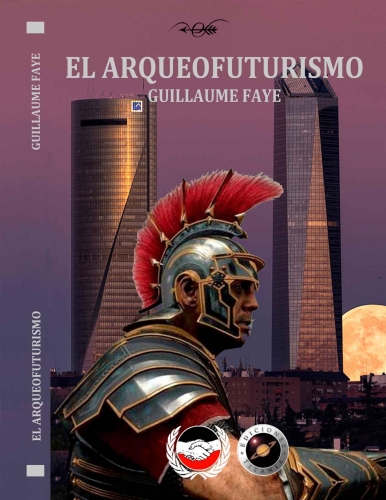
Que lire pour comprendre le concept d’archéofuturisme chez Guillaume Faye?
- GF, Europe et modernité, Eurograf, Méry/Lüttich, 1985.
Sur l’échec de la première modernité, qui a véhiculé un eudémonisme incapacitant qui empêche de gérer correctement les innovations scientifiques et techniques qui contredisent ses postulats ; sur les notions d’enracinement et de « désinstallation ».
- GF, L’Occident comme déclin, Agir pour l’Europe, Embourg/Lüttich, 1985.
Sur l’avènement de la Cosmopolis occidentale, où tout est Entortung et où le christianisme, en ultime instance, n’a pas fortifié la conscience religieuse mais a généré un athéisme laïcisé, pratiquant, sans Dieu, les travers du christianisme tels que Nietzsche les a définis ; sur l’avènement d’Antipolis, la cité qui refuse le politique, au sens où l’entendaient Carl Schmitt et Julien Freund ; Faye annonce non pas la fin de l’histoire, comme le fera Fukuyama quelques années plus tard, mais la « métamorphose de l’histoire ».
- Guillaume Faye, Les nouveaux enjeux idéologiques, Le Labyrinthe, Paris, 1985.
Sur l’esprit faustien comme « tradition européenne » ; sur la technique moderne comme expression de l’identité européenne.
- Guillaume Faye, L’archéofuturisme, L’AEncre, Paris, 1998 /Archeofuturism – European Visions of a Post-Catastrophic Age, Arktos, London, 2010.
Définition complète de l’archéofuturisme comme constructivisme vitaliste, seule réponse possible à la convergence des catastrophes qui s’annonce en Europe ; Faye y définit l’essence de l’archaïsme et l’essence du futurisme, deux essences qui doivent se coaguler pour former la grande synthèse nouvelle, qui est aussi l’alliance de l’apollinien et du dionysiaque ; panorama des applications pratiques induites par la nouvelle synthèse archéofuturiste ; Faye présente son idée d’économie à deux vitesses, face à l’effondrement de l’économie néo-globale.
- Guillaume Faye, Avant-Guerre – Chronique d’un cataclysme annoncé, L’AEncre, Paris, 2002 / Prelude to War – Chronicle of the Coming Cataclysm, Arktos, London, 2021.
Lire surtout le chapitre 19 sur la pensée vitaliste contre la pensée dégénérée, complément de lecture indispensable pour saisir ce que Faye entend par « constructivisme vitaliste ».
- Michael O’Meara, Guillaume Faye and the Battle of Europe, Arktos, London, 2013.
13:16 Publié dans Définitions, Nouvelle Droite | Lien permanent | Commentaires (0) | Tags : guillaume faye, archéofuturisme, nouvelle droite, définition |  |
|  del.icio.us |
del.icio.us |  |
|  Digg |
Digg | ![]() Facebook
Facebook
vendredi, 20 mai 2022
Empire et praxis
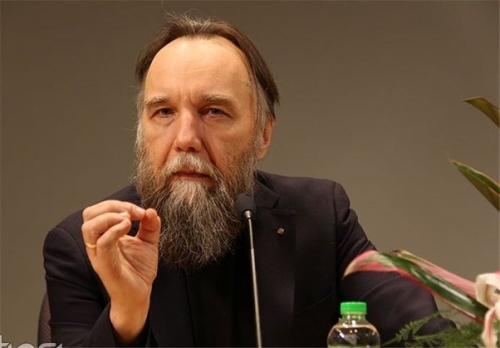
Empire et praxis
par Aleksandr Dugin
Source: https://www.ideeazione.com/impero-e-prassi/
Quels sont les facteurs décisifs pour la restauration d'un véritable Empire en Russie ?
Cette question a été posée très sérieusement par le Père Vladimir Tsvetkov, prieur de l'Ermitage de Sofronie près d'Arzamas (ci-dessous), dans une formulation très profonde : pour quoi devons-nous prier ? En fait, la même question a été posée à Konstantin Malofeev lors de la présentation de son livre Empire : Où est l'Empire aujourd'hui ?
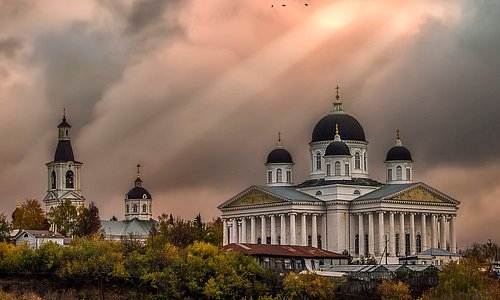
Je viens d'achever un nouveau livre, Genèse et Empire, une sorte d'"Encyclopédie de l'idée impériale", dans lequel j'expose le thème de l'ontologie impériale, de la figure archétypale du Roi de la Paix, des diverses formes de monarchie sacrée, en passant par une vue d'ensemble des empires historiques - y compris la mission de Katechon et la dialectique de la Russie impériale - et les simulacres d'"Empire", tels que l'Empire britannique et l'"Empire" américain moderne.
Il s'agit de thèmes et de théories profonds et fondamentaux, dont on ne peut toutefois pas tirer directement de conclusions pratiques. C'est pourquoi j'ai décidé de traiter la question du Père Vladimir de manière systématique et j'ai proposé une série de thèses. Il s'agit d'une ébauche, je serais reconnaissant pour tous ajouts et commentaires.
- L'empire peut être restauré en Russie à la suite d'un miracle divin. Tout empire a une origine surnaturelle. Si ce n'est pas un miracle de Dieu, alors c'est un "miracle noir" du diable. Les êtres humains ne sont pas capables de créer un empire. C'est toujours quelque chose de sacré. S'il n'y a pas de miracle, il n'y a pas d'empire, mais notre foi est dans le Dieu vivant, dans le Dieu qui fait des merveilles.
- L'Empire vit dans l'Église. L'enseignement religieux et eschatologique sur l'empire et la monarchie orthodoxe, ainsi que sur le rôle du tsar russe en tant que Katechon, a été développé en détail dans l'Église orthodoxe russe hors de Russie. La glorification des martyrs royaux et de tous les nouveaux martyrs de Russie fait partie de cet enseignement. Après la réunion du Patriarcat de Moscou et de l'Eglise orthodoxe russe hors de Russie dans les années 1990, cet enseignement a été généralement accepté par l'Eglise orthodoxe russe dans son ensemble, et aucune autre doctrine normative de la théologie politique de l'orthodoxie n'a été créée dans l'EOR elle-même pendant la période soviétique (et elle ne pouvait l'être après l'échec des rénovateurs). Par conséquent, la monarchie orthodoxe est le seul modèle normatif du christianisme orthodoxe russe. Les "libéraux d'église" bruyants et insistants ne comptent pas, ils ne sont que des "agents étrangers".
- L'empire (comme la monarchie) est une institution. La restauration de l'Empire peut se faire par une réforme politique à grande échelle, en révisant le cadre juridique russe dans l'esprit de l'autocratie. Le travail politico-philosophique et juridique est important ici.
- L'empire peut être fondé par une dynastie. Bien qu'aucune ligne de succession strictement directe du dernier empereur russe n'ait survécu, il y a les Romanov et, au 18e siècle, le trône russe a été occupé par des parents plus éloignés. C'est ici que la ligne Kirillovich, quelle que soit la façon dont elle est traitée en Russie aujourd'hui, a la plus solide base.
- Un empire peut être créé par de véritables succès militaires et l'expansion d'une zone de contrôle. Le pouvoir interne devient alors évident. L'agrégation même des terres russes - avec sa dépendance à la fois de la puissance militaire et de l'économie, de la diplomatie et de la culture - renforce le potentiel impérial.
- L'empire peut vivre selon la volonté du peuple. Dans ce cas, l'empire n'est pas établi du haut vers le bas, mais est exigé par le peuple, depuis la base vers le haut. C'est le scénario Zemsky. Le Zemsky sobor prend la décision historique que l'empire est et restaure la monarchie. Le culte moderne de Staline, répandu dans le peuple, d'un point de vue sociologique, n'est rien d'autre qu'une forme de "monarchisme par le bas", une demande de tsars.
- Un empire peut être déclaré par un dirigeant fort. Dans l'histoire romaine, le passage de la République à l'Empire s'est fait par la dictature de Jules César. Le nom "César" est ensuite devenu synonyme d'empereur, de roi. Bien qu'Auguste soit devenu empereur de plein droit, en réalité Jules César l'était déjà.

Il est difficile de dire à l'avance quel est le point principal. Actuellement, toutes ces conditions préalables sont présentes sous une forme ou une autre, mais aucune d'entre elles n'est encore clairement dominante. On peut supposer une combinaison de plusieurs points ou la sélection de certains au détriment d'autres ; on ne peut même pas exclure leur complète synergie. Si l'Empire est notre objectif (et s'il ne l'est pas, nous sommes perdus), nous savons maintenant ce pour quoi nous devons prier, ce pour quoi nous devons nous battre et ce que nous devons faire.
Le plus important est de ne jamais perdre de vue l'essentiel : l'Empire est un phénomène d'ordre spirituel, ce qui signifie que sans la volonté divine et sa providence, il ne sera qu'un simulacre. La chose principale dans l'Empire est un miracle. Ce n'est donc qu'au nom d'un miracle, dans l'attente d'un miracle, qu'il est possible de vivre. Sans lui, tout cela n'a pas de sens. Le miracle est le sens de notre vie. Un miracle impérial.
19 mai 2022
15:59 Publié dans Définitions, Nouvelle Droite | Lien permanent | Commentaires (0) | Tags : empire, définition, alexandre douguine, nouvelle droite, nouvelle droite russe, russie, impérialité |  |
|  del.icio.us |
del.icio.us |  |
|  Digg |
Digg | ![]() Facebook
Facebook
mardi, 19 avril 2022
Ancestrale et révolutionnaire. La nouvelle Europe selon Guillaume Faye

En français, l'article en hommage à Guillaume Faye paru le 16 avril 2022 dans le quotidien italien Il Giornale !
Ancestrale et révolutionnaire. La nouvelle Europe selon Guillaume Faye
Plus cité que lu, loin de la gauche et de la droite, l'auteur français Guillaume Faye a proposé des scénarios audacieux
Luigi Iannone
Source: https://www.ilgiornale.it/news/spettacoli/ancestrale-e-rivoluzionaria-nuova-europa-secondo-faye-2026856.html
Guillaume Faye (1949-2019), intellectuel excentrique, à la production magmatique et presque indéfinissable, est autant cité que peu lu, notamment en raison de la rareté des traductions italiennes. À l'exception du Système à tuer les peuples et Archéofuturisme, il y a très peu de choses à trouver. Adriano Scianca tente de combler cette lacune en rassemblant les essais, articles et interviews les plus significatifs de ces quarante dernières années dans Dei e potenza (Altaforte Edizioni, p. 290, euro 17).

Deux livres de Faye traduits en italien et parus dans la collection "Sinergie" des Editions Barbarossa de Milan.
Bien que ses intérêts tournent autour de thèmes et de références issus du monde identitaire (critique de la société de consommation et de l'occidentalisme, nationalisme continental, révolution conservatrice, Nietzsche, mythe indo-européen, paganisme, question de la technologie), le premier tournant de Faye est sa rupture avec la nouvelle droite. Des divertissements ininterrompus l'ont même conduit à entrer dans le monde du show-business, en tant qu'animateur d'une émission de radio humoristique et, de son propre aveu, en tant qu'acteur dans un film porno. Une fois cette phase également passée, il a repris avec vigueur son activité de conférencier et d'écrivain jusqu'aux derniers mois de sa vie, marqués par un cancer.
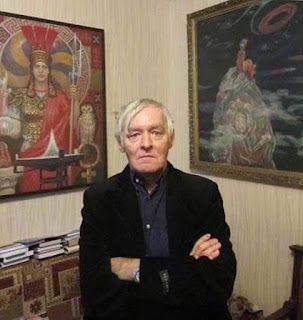 Le Système à tuer les peuples, un livre publié en 1981, représente le mieux la partie destructive de sa pensée. Il cloue au pilori la société globale, ses représentations massives et unificatrices et l'idéologie égalitaire occidentale structurée comme un véritable système, bien que le récit général tente de nous dire autre chose : "L'opinion publique est l'alibi. Le Système l'utilise pour démontrer à quel point il est démocratique, comment il est basé sur le consensus et l'assentiment général". Sous couvert d'un cosmopolitisme tolérant, nous assisterions en fait à la destruction de toute spécificité et à l'affirmation d'une idéologie mondiale "qui arpente les couloirs des institutions internationales et s'exprime dans les programmes de tous les partis politiques importants de la planète".
Le Système à tuer les peuples, un livre publié en 1981, représente le mieux la partie destructive de sa pensée. Il cloue au pilori la société globale, ses représentations massives et unificatrices et l'idéologie égalitaire occidentale structurée comme un véritable système, bien que le récit général tente de nous dire autre chose : "L'opinion publique est l'alibi. Le Système l'utilise pour démontrer à quel point il est démocratique, comment il est basé sur le consensus et l'assentiment général". Sous couvert d'un cosmopolitisme tolérant, nous assisterions en fait à la destruction de toute spécificité et à l'affirmation d'une idéologie mondiale "qui arpente les couloirs des institutions internationales et s'exprime dans les programmes de tous les partis politiques importants de la planète".
Avec L'archéofuturisme, Faye fait un pas en avant et tente de trouver une issue. L'idée est de combiner les valeurs médiévales (archaïques), des concepts tels que la hiérarchie et la virilité, avec le progrès scientifique; les archétypes avec le prométhéisme technologique. Une telle démarche serait possible pour deux raisons que l'on peut déduire des pages mêmes de Dei e Potenza: la reconquête de l'Europe par un conflit aux proportions énormes qui devra impliquer tout le continent, et la renaissance de la figure du révolutionnaire.
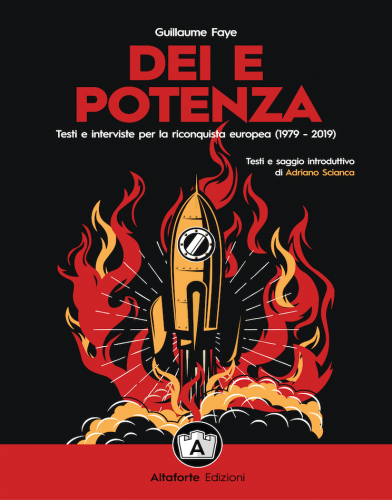
Selon Faye, la modernité touche à sa fin et avec elle ses fétiches libéraux et humanitaires. Notre époque ne s'achèverait pas avec la civilisation libérale dirigée par un État universel, le village planétaire prophétisé par MacLuhan, mais ouvrirait plutôt une phase où les peuples et les identités ethniques seraient en compétition: "Les peuples vainqueurs seront ceux qui resteront fidèles ou reviendront aux valeurs et aux réalités ancestrales - qui sont culturelles, éthiques, sociales et spirituelles - et qui, en même temps, domineront la technoscience. Le XXIe siècle sera le siècle où la civilisation européenne, à la fois prométhéenne et tragique, se métamorphosera ou se dirigera vers un déclin irrémédiable. Ce serait alors le moment de reprendre les anciennes valeurs, sans toutefois chercher à les réintroduire à la lettre, car elles ont été modifiées au cours des siècles, et cela pourrait se faire sous le double signe de Mars, le dieu de la guerre, et d'Héphaïstos, le dieu qui forge les épées, le seigneur de la technologie des feux chtoniens.
Et voici l'autre point. Pour Faye, l'idée de révolution, abandonnée par les intellectuels progressistes qui sont désormais réduits à des gardiens du pouvoir, ne serait même pas celle avancée par les intellectuels de droite dont les actions semblent toujours se terminer par des poses esthétiques. La figure du rebelle, plus ou moins sur le modèle de Dominique Venner, qui s'est suicidé dans la cathédrale Notre-Dame en 2013, leur semble inutile. Ce rebelle-là aspire à être une minorité, perdue dans le rêve littéraire, comblée par l'auto-exil et jamais prête à se battre. Des intellectuels comme Cioran, Debord ou Baudrillard (qu'il définit comme des "rebelles pessimistes"), ou comme Céline, Jean Mabire et Venner ("rebelles joyeux") reculeraient devant l'idée malsaine qu'ils n'ont qu'à semer.
 Faye les assimile à des simulateurs de dissidence, fonctionnels à un néo-totalitarisme qui a besoin de ces faux concurrents et les nourrit presque. C'est pourquoi il espère l'entrée en scène du révolutionnaire qui - contrairement au rebelle - considère les idées comme des moyens et non comme des fins, qui n'ont donc de véracité que si elles sont subordonnées à leur efficacité. Et sur le terrain, il n'identifie que deux projets révolutionnaires, tous deux archéo-futuristes mais incompatibles: celui des musulmans (le "partisan" sans frontières, pour citer Schmitt) qui vise la conquête planétaire et avec le même rôle que le révolutionnaire marxiste du 20ème siècle, et celui qui œuvre pour la reconquête européenne.
Faye les assimile à des simulateurs de dissidence, fonctionnels à un néo-totalitarisme qui a besoin de ces faux concurrents et les nourrit presque. C'est pourquoi il espère l'entrée en scène du révolutionnaire qui - contrairement au rebelle - considère les idées comme des moyens et non comme des fins, qui n'ont donc de véracité que si elles sont subordonnées à leur efficacité. Et sur le terrain, il n'identifie que deux projets révolutionnaires, tous deux archéo-futuristes mais incompatibles: celui des musulmans (le "partisan" sans frontières, pour citer Schmitt) qui vise la conquête planétaire et avec le même rôle que le révolutionnaire marxiste du 20ème siècle, et celui qui œuvre pour la reconquête européenne.
En fin de compte, même dans un cadre analytique riche en stimuli et en provocations, certains nœuds non résolus demeurent. Tout d'abord, on ne voit pas comment il est possible de concilier, dans l'ordinaire le plus banal de nos vies, des instances archétypales, des valeurs qui ont été dépassées et le prométhéisme de la civilisation technique. Deuxièmement, pourquoi une société globale et massifiée qui s'est abandonnée à la conformité devrait-elle soudainement se retourner ? Et enfin : d'où doit venir cette nouvelle figure de révolutionnaire ?
12:13 Publié dans Livre, Livre, Nouvelle Droite | Lien permanent | Commentaires (0) | Tags : livre, guillaume faye, nouvelle droite, archéofuturisme |  |
|  del.icio.us |
del.icio.us |  |
|  Digg |
Digg | ![]() Facebook
Facebook
vendredi, 15 avril 2022
Le concept d'hégémonie dans le réalisme
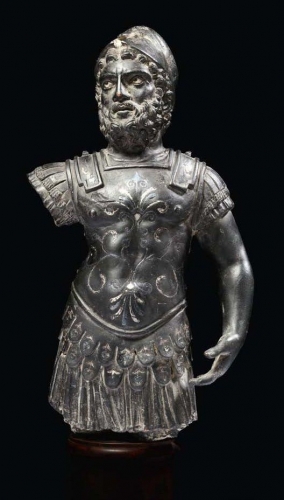
Le concept d'hégémonie dans le réalisme
Aleksandr Douguine
Source: https://www.geopolitika.ru/pl/article/pojecie-hegemonii-w-realizmie
L'aspect le plus important de la théorie du monde multipolaire (TMM) est le concept de contre-hégémonie formulé pour la première fois dans le contexte de la théorie critique des relations internationales (RI). Dans la transition de la Théorie critique à la Théorie du monde multipolaire, ce concept est également soumis à un sens particulier de la transformation qui devrait être examiné plus en détail. Pour qu'une telle analyse soit possible, il est d'abord nécessaire de rappeler les principales positions de la théorie de l'hégémonie au sein de la Théorie critique.
Bien que le concept d'hégémonie dans la Théorie critique soit basé sur la théorie d'Antonio Gramsci, il est nécessaire de distinguer la position de ce concept par rapport au gramscisme et au néo-gramscisme de la façon dont il est compris dans les écoles réalistes et néo-réalistes de RI.
Les réalistes classiques utilisent le terme "hégémonie" dans un sens relatif et le comprennent comme "la supériorité réelle et substantielle de la puissance potentielle d'un État sur celle d'un autre, souvent des États voisins". L'hégémonie peut être comprise comme un phénomène régional, puisque la détermination de l'hégémonie de telle ou telle entité politique dépend de l'échelle. Thucydide lui-même a introduit le terme lorsqu'il a parlé d'Athènes et de Sparte comme des hégémons de la guerre du Péloponnèse, et le réalisme classique a utilisé le terme de la même manière jusqu'à aujourd'hui. Cette conception de l'hégémonie peut être décrite comme "stratégique" ou "relative".
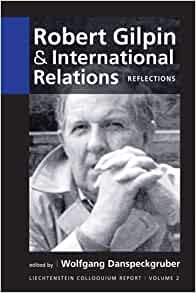 Dans le néoréalisme, l'"hégémonie" est comprise dans un contexte global (structurel). La principale différence avec le réalisme classique est que l'"hégémonie" ne peut être considérée comme un phénomène régional. Elle a toujours un caractère global. Par exemple, le néoréalisme de K. Waltz soutient que l'équilibre de deux hégémonies (dans un monde bipolaire) est la structure optimale de l'équilibre des pouvoirs à l'échelle mondiale. R. Gilpin estime que l'hégémonie ne peut être combinée qu'avec l'unipolarité, c'est-à-dire qu'il n'est possible d'avoir qu'un seul hégémon, ce qui est la fonction des États-Unis aujourd'hui.
Dans le néoréalisme, l'"hégémonie" est comprise dans un contexte global (structurel). La principale différence avec le réalisme classique est que l'"hégémonie" ne peut être considérée comme un phénomène régional. Elle a toujours un caractère global. Par exemple, le néoréalisme de K. Waltz soutient que l'équilibre de deux hégémonies (dans un monde bipolaire) est la structure optimale de l'équilibre des pouvoirs à l'échelle mondiale. R. Gilpin estime que l'hégémonie ne peut être combinée qu'avec l'unipolarité, c'est-à-dire qu'il n'est possible d'avoir qu'un seul hégémon, ce qui est la fonction des États-Unis aujourd'hui.
Dans les deux cas, les réalistes comprennent l'hégémonie comme un moyen de corrélation potentielle entre les potentiels des différents pouvoirs étatiques.
La compréhension de l'hégémonie par Gramsci est tout à fait différente et se situe dans un champ théorique complètement opposé. Afin d'éviter la mauvaise utilisation du terme dans la RI et surtout dans la TMM, il est nécessaire de prêter attention à la théorie politique de Gramsci, dont le contexte est considéré comme une priorité majeure dans la théorie critique et la TMM. En outre, une telle analyse nous permettra de voir plus clairement le fossé conceptuel entre la théorie critique et le TMM.
Hola
16:53 Publié dans Définitions, Nouvelle Droite, Théorie politique | Lien permanent | Commentaires (0) | Tags : relations internationale, multipolarité, hégémonie, hégémonisme, alexandre douguine, nouvelle droite, nouvelle droite russe |  |
|  del.icio.us |
del.icio.us |  |
|  Digg |
Digg | ![]() Facebook
Facebook
vendredi, 01 avril 2022
Alexander Dugin : presque tous les secrets ont été révélés
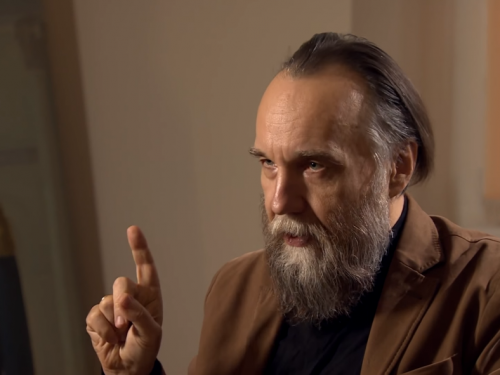
Alexander Dugin : presque tous les secrets ont été révélés
Alexander Dugin
Source: https://www.geopolitica.ru/article/aleksandr-dugin-pochti-vse-taynoe-stalo-yavnym
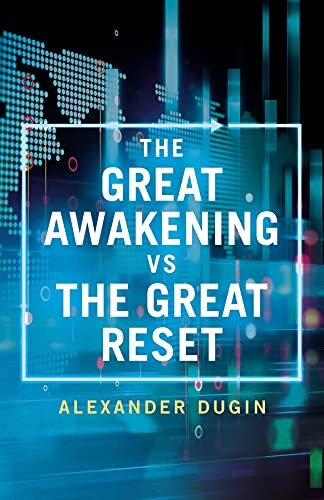 1) Votre livre Against the Great Reset vient d'être publié en Italie. Quel est le principal message de ce livre adressé au public italien ?
1) Votre livre Against the Great Reset vient d'être publié en Italie. Quel est le principal message de ce livre adressé au public italien ?
Ce livre est un aperçu général du libéralisme en tant que théorie et idéologie politique. Je me penche sur l'histoire du libéralisme depuis ses débuts - les courants protestants dans l'Europe du 16e siècle - jusqu'aux projets de gouvernement mondial, d'Open Society de Soros et de Great Reset de Klaus Schwab au Forum de Davos.
Le plan Great Reset représente l'aboutissement du libéralisme en tant qu'idéologie qui libère l'individu de toute forme d'identité collective. Cela a commencé une volonté de se libérer de l'Église (catholique), des successions dynastiques traditionnelles, puis des nations et des États, puis du genre (la fameuse politique du genre) et enfin de l'humanité, car être humain est aussi une identité collective. D'où la dernière phase : le passage au transhumanisme, la fusion des humains avec les machines, la migration totale vers le cyberespace et le transfert du contrôle aux réseaux neuronaux et à l'intelligence artificielle. Nous vivons aujourd'hui la phase finale du libéralisme qui s'est mondialisé. C'est le mondialisme et un monde unipolaire. Mais cela a commencé avec les débuts du Nouvel Âge, avec le capitalisme et le rejet de la société traditionnelle.
La Grande Réinitialisation est la fin d'un long voyage vers l'autodestruction de l'humanité.
Le Grand Réveil, que j'appelle de mes voeux, est la formation d'un pôle alternatif. Le but du Grand Réveil est que des personnes de cultures et de traditions différentes, qu'elles soient de droite ou de gauche, chrétiennes, musulmanes, juives, hindoues, bouddhistes ou confucéennes, concluent un pacte historique planétaire qui rejette l'agenda mondialiste. Au lieu d'un choc des différentes civilisations entre elles, Le Grand Réveil appelle à une alliance universelle contre le mal total qui menace toute l'humanité - contre Soros, Schwab, Bill Gates et l'oligarchie libérale mondiale.
C'est, en un mot, le sujet de ce livre.
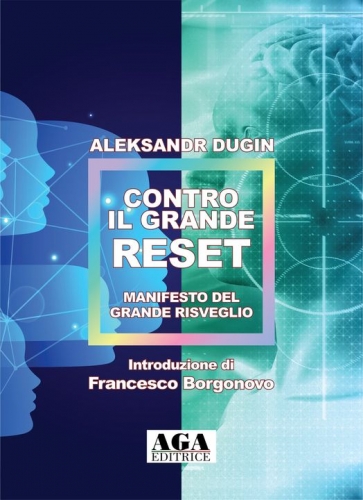 2) Peut-on parler d'une Troisième Russie en paraphrasant la formule de la Troisième Rome ?
2) Peut-on parler d'une Troisième Russie en paraphrasant la formule de la Troisième Rome ?
Une suggestion intéressante. L'écrivain patriote russe, qui est mon ami de longue date Alexandre Prokhanov, parle du Cinquième Empire. Mon dernier livre en russe s'intitule "La quatrième Russie". Selon moi, la première Russie - c'est l'ancienne Russie. La seconde est l'Empire des Romanov. La troisième est la Russie soviétique. La quatrième est celle qui doit être construite maintenant. C'est la Russie de l'avenir. Elle coïncide avec le Cinquième Empire de Prokhanov (qui distingue dans la Russie antique la période de Kiev et la période de Moscou). Mais toutes les étapes à partir de la seconde moitié du XVe siècle russe sont la Troisième Rome.
Telle est la dialectique complexe de notre histoire.
3) Quelle est la place de l'Inde dans la théorie du 4ème monde politique et multipolaire ?
L'Inde est certainement une civilisation à part entière. Elle a son propre Logos unique, son Dasein. L'Inde n'est pas un pays, c'est un monde, c'est une planète entière, un continent. La quatrième théorie politique, la 4PT, est construite sur le Dasein et ses structures existentielles internes. Ils s'additionnent pour former le Logos. En Inde, nous voyons les deux qui interagissent au fond - ce qui est parfait ! - nous avons donc les deux, un horizon existentiel distinctif et un système métaphysique religieux-philosophique développé - l'hindouisme. Ainsi, la présence du sujet dans la compréhension de la 4PT par l'Inde ne fait aucun doute. Tout ce qui compte, c'est d'achever le processus de décolonisation profonde et d'affirmer avec audace une identité hindoue proprement dite, en fondant sur elle l'ensemble de l'ordre traditionnel. C'est comme la venue du dixième Avatar de Kalki qui mettra fin au Kali Yuga, l'ère du chaos, de la dégénérescence et de la décadence.

Par conséquent, dans un monde multipolaire, l'Inde deviendra certainement un pôle distinct de tous les autres.
Être un pôle signifie prendre des décisions pleinement souveraines.
Dans l'état actuel de transition d'un monde unipolaire à un monde multipolaire, l'Inde apparaît de plus en plus comme un tel pôle souverain. Et l'ensemble du système n'est plus seulement tripolaire - Occident, Russie, Chine ; mais quadripolaire - Occident, Russie, Chine, Inde. Je pense que c'est le moment le plus important de l'histoire moderne.
4) Nous savons que vous avez passé de nombreuses années à étudier l'œuvre de René Guénon. Dans quelle mesure cet auteur traditionaliste vous a-t-il influencé, vous et vos théories ?
Je dois tout à Guénon. Je suis avant tout un traditionaliste et pour moi, tous les points de confrontation entre la tradition et le monde moderne sont des principes irréfutables.
Une autre chose est que j'essaie d'appliquer les principes du traditionalisme à divers domaines que Guénon lui-même n'a pas abordés. Par conséquent, il peut parfois sembler que je me sois éloigné de ses idées. Ce n'est pas le cas. Je suis le guénonien le plus orthodoxe qui soit.
5) Êtes-vous d'accord que David Icke avait raison dans ses théories ? Existe-t-il encore un "secret le mieux gardé" ?
De mon point de vue, David Icke est un fou qui délire complètement. Mais le penseur cardinal que fut Carl Gustav Jung et ses collaborateurs ont parfaitement démontré que les structures du délire ne sont pas aléatoires ou arbitraires, mais expriment des lois profondes et des connexions archétypales de l'"inconscient collectif". David Icke ne peut être traité que comme un malade, apparemment complètement fou par tous ceux qui le prennent au sérieux. Cela dit, considérer ce qu'il dit en termes d'exploration de la cartographie de l'inconscient, où les archétypes sous-jacents surgissent de manière spontanée et chaotique, n'est probablement pas déraisonnable. Mais cela ne m'a jamais intéressé.

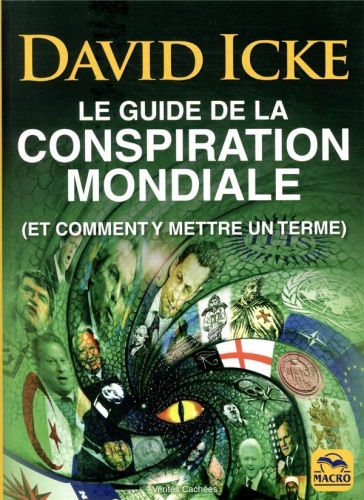
Quant au "secret bien gardé" de nos jours, beaucoup de choses auparavant secrètes deviennent ouvertes. Pendant longtemps, les élites libérales mondiales ont refusé d'admettre que leur objectif était un gouvernement mondial. Aujourd'hui, il en est question dans tous les manuels de relations internationales. Presque tout ce qui est secret est déjà devenu évident, il suffit de savoir lire et interpréter correctement les relevés. Mais cette qualité est de plus en plus rare. Nous savons tout, mais ne comprenons plus rien.
Alexandre Douguine
16:58 Publié dans Actualité, Entretiens, Nouvelle Droite | Lien permanent | Commentaires (1) | Tags : alexandre douguine, actualité, grande réinitialisation, nouvelle droite, nouvelle droite russe, russie, libéralisme, antilibéralisme |  |
|  del.icio.us |
del.icio.us |  |
|  Digg |
Digg | ![]() Facebook
Facebook
mardi, 22 mars 2022
L'opération Z et le caractère inévitable de la réforme politique en Russie même

L'opération Z et le caractère inévitable de la réforme politique en Russie même
Alexandre Douguine
Source: https://www.geopolitica.ru/article/operaciya-z-i-neizbezhnost-politicheskih-reform-v-samoy-rossii
Au fur et à mesure que l'opération militaire spéciale se déroule, lentement mais sûrement, nous commençons à accorder de plus en plus d'attention à la situation politique interne de la Russie elle-même, à l'atmosphère et au style du changement. Beaucoup sont manifestement déçus, car rien ne ressemble de près ou de loin à l'opération Z en Russie. Et j'aimerais voir les forces que le peuple déteste tout autant que les nazis ukrainiens commencer à tomber, elles aussi, dans les chaudrons de l'enfer. Nous parlons bien sûr des libéraux qui, à l'exception des plus endurcis et rapidement évincés, ont généralement conservé leur position au pouvoir et dans la société. En toute solidarité émotionnelle avec les patriotes indignés, je voudrais exprimer ma propre opinion - plus modérée.
L'opération Z a coupé la ligne de partage des eaux de façon si fondamentale qu'il ne peut y avoir de retour en arrière. Nous sommes dans une situation d'irréversibilité. C'est difficile à croire, mais c'est exactement ce que s'est produit. Et rien d'autre ne dépend en principe des intentions subjectives des autorités. Le Kremlin peut croire sincèrement que l'ancien ordre politique et économique qui a émergé dans les années 1990, basé sur le libéralisme (et la corruption), et l'élite moderne continuera d'exister dans les nouvelles conditions. Seulement avec des ajustements cosmétiques mineurs. Mais la gravité des mesures déjà prises dans le cadre de l'opération militaire spéciale ne laisse aucune chance à un tel expédiant. L'opération elle-même est devenue inévitable précisément parce que sans elle, les processus de purification et de redressement de la société russe ne pouvaient pas dépasser le point critique, glissant constamment en arrière - vers les années 90. Sinon, nous aurions eu d'autres moyens d'empêcher l'émergence de l'anti-Russie en Ukraine, que nous nous efforçons maintenant d'éliminer à un prix si élevé.
Maintenant, le système qui s'est formé dans les années 90 et qui avait été modifié avec beaucoup de difficulté toutes les heures (non, toutes les années) par des mesures qui ne dépassaient pas le teneur d'une cuillère à café, a été mis dans des conditions telles qu'il ne peut pas supporter même une courte période dans son ancien état. Dans une confrontation directe avec l'Occident, la Russie vermoulue eltsino-libéraliste n'a aucune chance de survivre, et encore moins de gagner. La nécessité d'une nouvelle Russie se présentera donc.
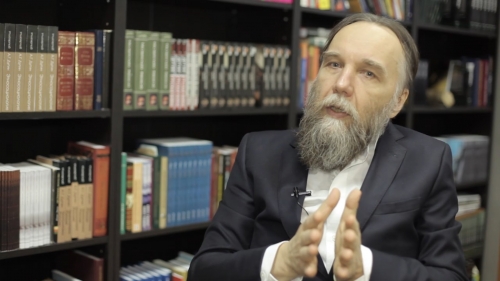
Le système existant et ses élites ne sont pas à la hauteur dans une situation de confrontation directe et frontale avec l'Occident, ce qui ne peut être réfuté ou édulcoré. Maintenant, nous ne pouvons que gagner. Il n'y a plus rien à tirer et nulle part où retourner. Les ponts ont sauté. La Russie est arrivée en première ligne de l'histoire et de la politique mondiales.
Placés dans cette situation, les membres de l'élite dirigeante - même les plus libéraux - peuvent choisir entre deux choses : soit se liquider, soit se recycler d'urgence en patriotes. Et l'option de l'ancien compromis - la 6e colonne, qui, tout en restant libérale et essentiellement un agent d'influence, acceptait à contrecœur les règles de Poutine - ne fonctionnera plus. Dans les nouvelles conditions, il apparaîtra très vite comme relevant du sabotage et/ou d'une incompétence flagrante. En guerre, dans les moments de désastre ou même en prison, les gens sont assez prompts à montrer ce qu'ils sont vraiment. Seule la vie paisible, choyée et sournoise d'un philistin endormi ouvre un espace sans fin pour les mensonges, les mimiques, la corruption embarrassante et la trahison longtemps inaperçue. Dans les circonstances extraordinaires actuelles - par rapport aux normes historiques - on verra instantanément qui est qui.
Il est facile de le vérifier par l'expérience : nous donnons à n'importe qui - même aux membres les plus inutiles et les plus ratés de l'élite actuelle - une véritable mission, et nous leur demandons de s'exécuter selon des critères de guerre (non, pas selon des critères de guerre, seulement une opération militaire, mais cela suffit aussi). S'ils échouent, il importe peu de savoir pourquoi ou qui leur a ordonné de le faire. Ils sont tout simplement finis. Et s'ils réussissent, ils sont à nous. Même s'ils viennent de le devenir. Tout arrive pour la première fois un jour ou l'autre. On peut donc devenir russe à tout moment, en corrigeant son ancienne non-russité (ou son manque de russité). Maintenant, nous sommes tous soit russes, et nous sommes responsables les uns des autres et de notre victoire commune, soit ... (et il n'y a pas d'endroit où fuir...)
Les autorités n'ont plus aucune marge de manœuvre à l'intérieur du pays. Pas du tout. Une fois qu'elle a commencé ce qu'elle a commencé, elle ne peut pas s'arrêter par définition. Ainsi, la possibilité de faire des compromis s'est irréversiblement effondré, l'espace vital même de la 6ème colonne a disparu.
Dans le langage de Gramsci, nous avions dépassé le "césarisme", c'est-à-dire le flirt pragmatique avec le système capitaliste mondial, dans lequel nous avions vainement tenté de nous intégrer, mais dans les conditions du maintien de notre souveraineté. Aujourd'hui, c'est clair : soit l'hégémonie occidentale libérale, soit une Russie souveraine - souveraine en tant que civilisation, en tant que culture, en tant que sujet. La seule réponse à l'hégémonie est désormais la contre-hégémonie. Et maintenant, il est totalement indifférent que le ministère de la Culture ait rejeté un excellent projet sur les valeurs traditionnelles. Les valeurs traditionnelles sont nécessaires à l'État, à la société, au peuple et à nos guerriers qui donnent maintenant leur vie dans la bataille contre l'hégémonie. Désormais, ils ne seront pas seulement proposés, ils seront obligés de les formuler et de les suivre. Car c'est la condition de la victoire. L'un de ceux qui sont devenus non pas un souhait, mais une nécessité vitale.
Oui, nous ne voyons pas de mouvement adéquat et de changement approprié au sein de la Russie en ce moment. Mais l'opération Z a déjà tout changé fondamentalement. Et ces changements se produiront inévitablement. L'élite n'a tout simplement pas le choix : soit elle s'engage dans la contre-hégémonie, soit elle disparaît dans la non-existence historique.
L'idée russe n'est plus quelque chose que nous pouvons choisir (ou rejeter) librement. Personne ne peut exister sans elle. On peut essayer, mais je ne le conseille pas, c'est comme couper l'accès à l'oxygène quand le corps en a besoin.
La force d'inertie est telle que tout le monde n'a pas réalisé ce qui s'est passé le 22 février 2022. Ce n'est pas grave, ils s'en rendront vite compte. La suite ne nécessitera aucune décision subjective de la part des autorités, tout se déroulera automatiquement.
Je le vois très clairement. S'il n'y a pas d'autre moyen, il ne nous reste qu'une seule chose à faire : gagner. L'histoire ne nous a laissé aucune chance pour "l'ou bien/ou bien".
18:38 Publié dans Actualité, Affaires européennes, Nouvelle Droite | Lien permanent | Commentaires (0) | Tags : alexandre douguine, nouvelle droite, nouvelle droite russe, russie, actualité, europe, affaires européennes, opération z |  |
|  del.icio.us |
del.icio.us |  |
|  Digg |
Digg | ![]() Facebook
Facebook
samedi, 19 mars 2022
"Dieux et pouvoir" de Guillaume Faye: esprit et technique pour la renaissance européenne

"Dieux et pouvoir" de Guillaume Faye: esprit et technique pour la renaissance européenne
par Giorgio Nigra
SOURCE : https://www.ilprimatonazionale.it/cultura/ecco-dei-e-potenza-di-guillaume-faye-spirito-e-tecnica-per-la-rinascita-europea-227365/
Guillaume Faye (1949-2019), l'écrivain et polémiste français décédé il y a trois ans, est surtout connu du public identitaire italien pour avoir créé le terme d'archéo-futurisme : une expression au charme incontestable, entrée de force dans le langage courant de tout un espace politique, même si le livre correspondant, paru à la fin des années 90, a certainement été plus cité que lu. Mais ceux qui ont quelques années de plus, ou simplement une plus grande passion pour l'histoire des idées, se souviendront aussi de sa "vie antérieure", lorsqu'il incarnait le courant faustien et prométhéen de la nouvelle droite, même s'il rejetait fermement cette étiquette. À l'époque (nous parlons d'une période allant du milieu des années 1970 au milieu des années 1980), plusieurs des écrits de Faye ont été publiés dans les journaux de la nouvelle droite italienne, en plus de son œuvre la plus importante de cette époque, Le système à tuer les peuples, qui a connu plusieurs éditions.



"Dieux et pouvoir", un recueil d'écrits plein de bonnes pistes
Néanmoins, on peut dire que Faye reste à bien des égards méconnu dans notre pays. La plupart du temps on se réfère - pour le louer ou le blâmer, selon les sensibilités - à ses polémiques contre l'Islam ou à quelque formule irréfléchie. La publication par la maison d'éditions Altaforte de Dei e Potenza, un recueil d'écrits et d'entretiens largement inédits de Faye couvrant la période entre 1979 et 2019, est donc particulièrement bienvenue. Quarante années au cours desquelles le monde a profondément changé, mais où Faye lui-même a connu des évolutions souvent désorientantes, avec peut-être, cependant, plus d'éléments de continuité qu'on ne voudrait le faire croire rétrospectivement.
Précédé d'un vaste essai introductif d'Adriano Scianca, qui est également l'éditeur du volume, Dei e Potenza contient de véritables joyaux. C'est le cas, par exemple, des deux critiques de Faye sur les livres païens d'Alain de Benoist, Come si può essere pagani ? (Comment peut-on être païen ?) et L'eclisse del sacro (L'éclipse du sacré), critiques dans lesquelles notre auteur critique le chef de file de la nouvelle droite, cependant sans jamais cesser de faire son éloge. Il ne cesse de lancer des piques à l'auteur des deux essais, qui était alors son compagnon de combat dans les rangs de la nouvelle droite. Ou pensons aux deux longs et denses articles sur la société multiraciale, datant du début des années 1980, dans lesquels on découvre d'une part la clairvoyance de Faye dans la compréhension du danger de l'immigration de masse et d'autre part l'incohérence de la vulgate qui voudrait que notre auteur français ait été immigrationniste jusqu'à la "révélation" des années 1990.
Nous trouvons également un Faye décidé à se confronter au meilleur de la pensée philosophique du vingtième siècle, également pour réfuter cette réputation qu'on lui fit, celle d'être un penseur "pas très sérieux", réputation qui entoure encore notre polémiste français. On lira, en ce sens, ses articles sur Adorno, Baudrillard, mais surtout la dense étude sur Heidegger, auquel un long essai est consacré dans Dei e Potenza sur le "dépassement du christianisme". Sont également intéressants des extraits de certains livres de Faye, encore inédits en italien : Nouveau discours à la nation européenne, Les Nouveaux Enjeux idéologiques, Avant-guerre : chronique d'un cataclysme annoncé ou le surprenant et original Les Extraterrestres de A à Z.
Guillaume Faye et quelques interviews éclairantes
Quant aux textes qui se réfèrent à la deuxième phase de la vie de Faye, celle où l'auteur fait ses adieux à la nouvelle droite et découvre le combat contre l'Islam, les entretiens méritent une attention particulière, comme Les Titans et les Dieux, très long et très intéressant, entièrement consacré au paganisme, mais voir aussi celui sur Nietzsche, tout aussi brillant. Illuminantes, enfin, sont ses considérations sur le sacrifice de Dominique Venner, l'homme qui, dans les années 70, avait amené Faye du Cercle Pareto universitaire au G.R.E.C.E., l'organisation qui deviendra plus tard le moteur de la nouvelle droite. En fin de compte, Dei e Potenza est un échantillon d'écrits et de réponses, émanant d'une longue période de la vie de Faye qui a façonné la pensée nationale-révolutionnaire européenne d'une manière souvent inconnue aujourd'hui des représentants mêmes de ce courant. Et c'est aussi une façon de revenir à ce que nous sommes, à une époque où, malheureusement, cela ne va plus de soi.
Giorgio Nigra.
17:22 Publié dans Nouvelle Droite | Lien permanent | Commentaires (0) | Tags : guillaume faye, nouvelle droite |  |
|  del.icio.us |
del.icio.us |  |
|  Digg |
Digg | ![]() Facebook
Facebook


